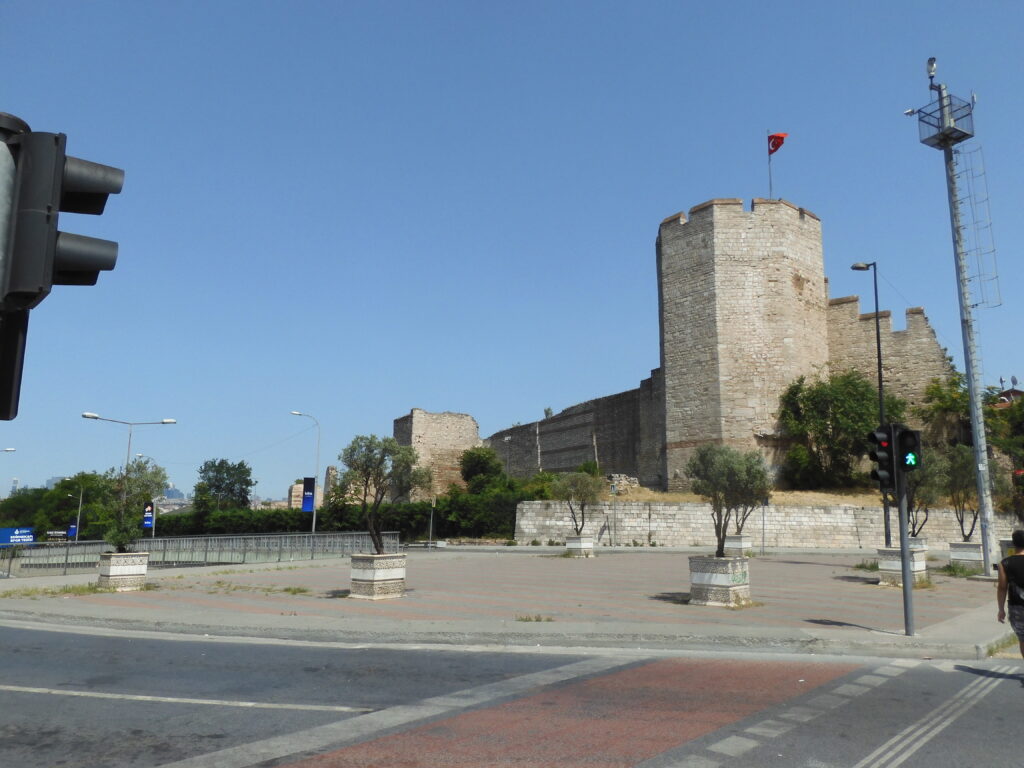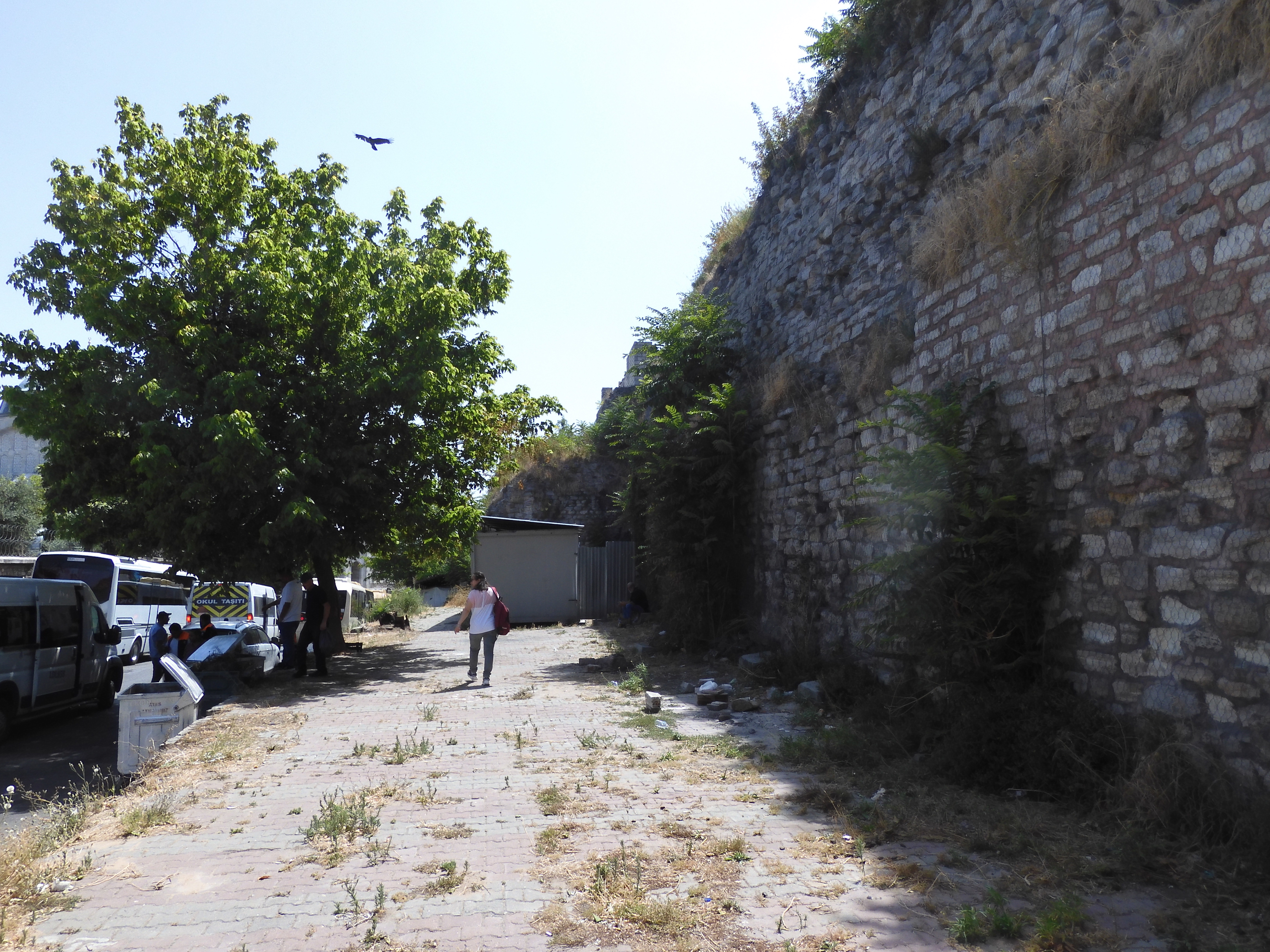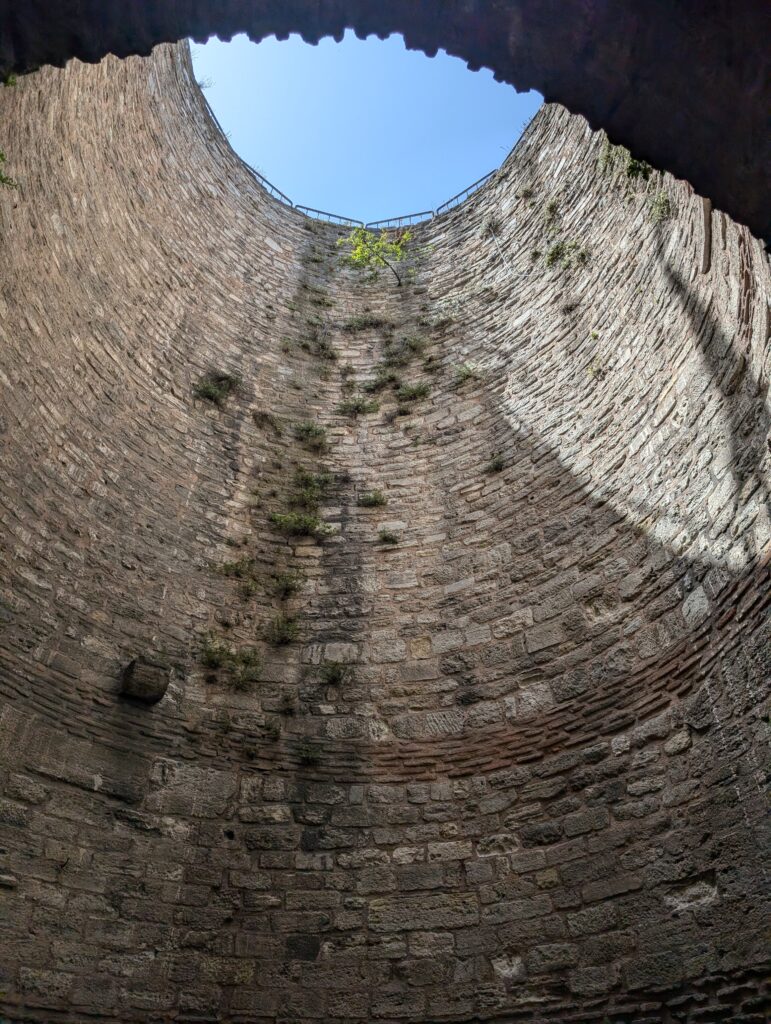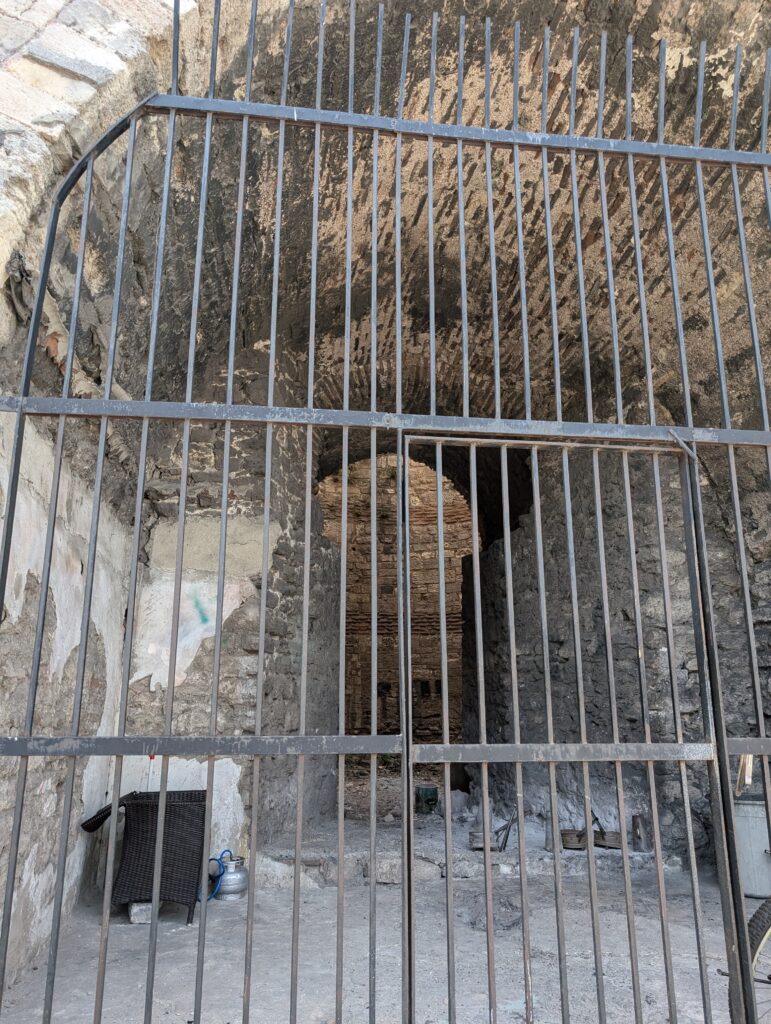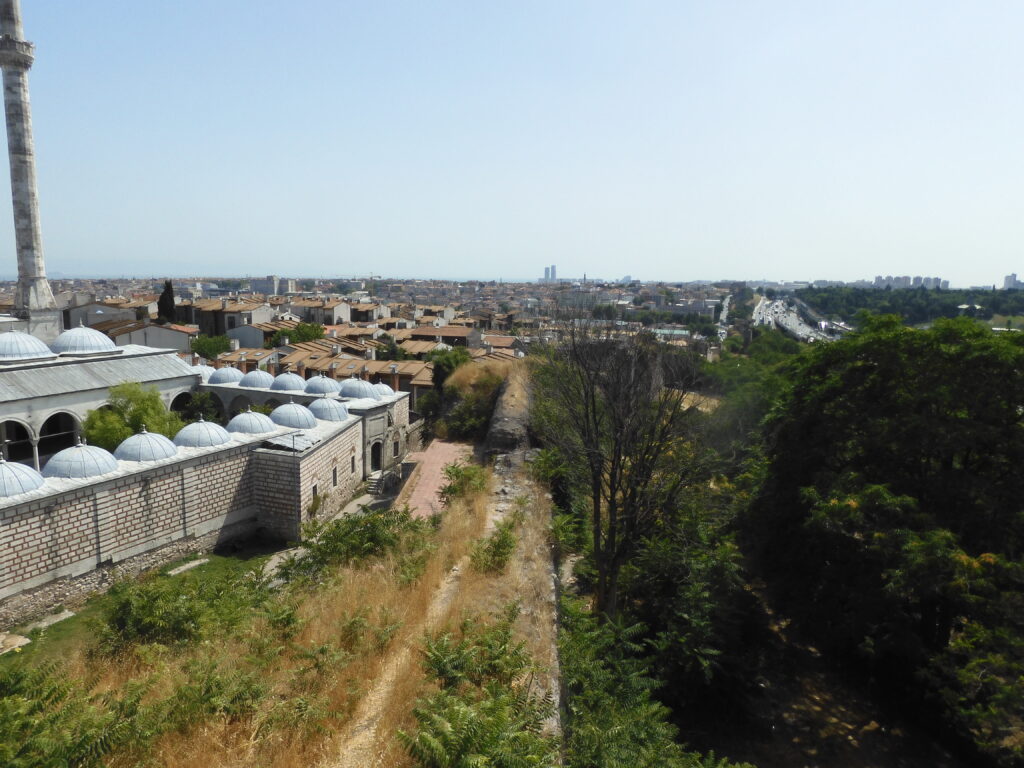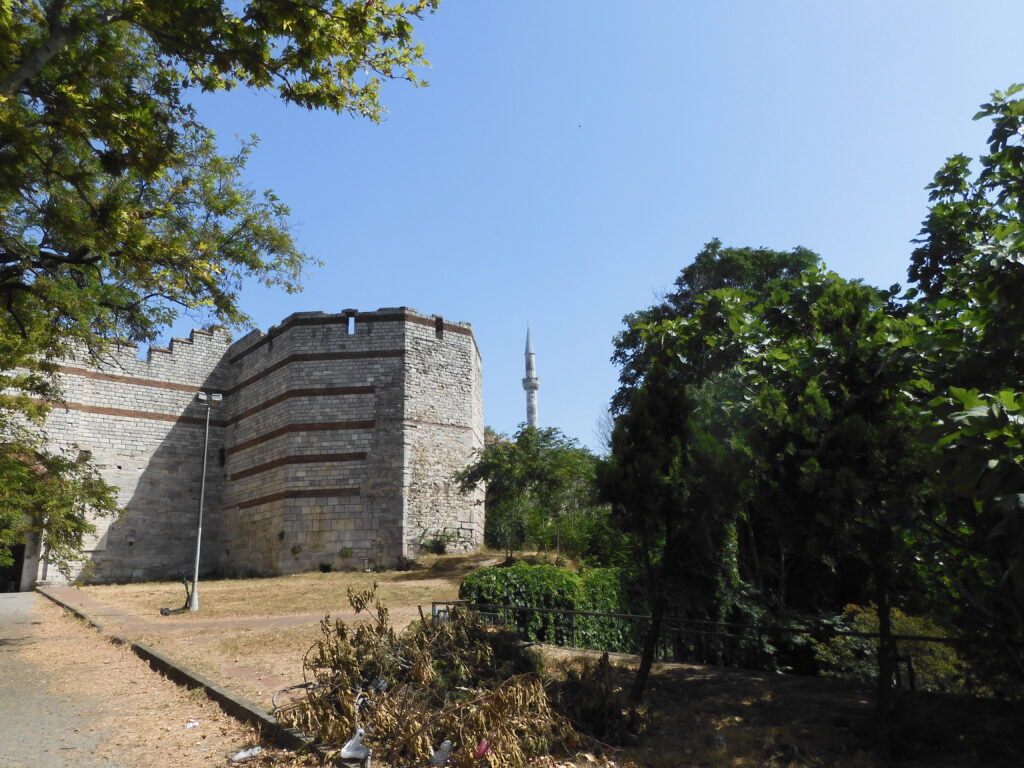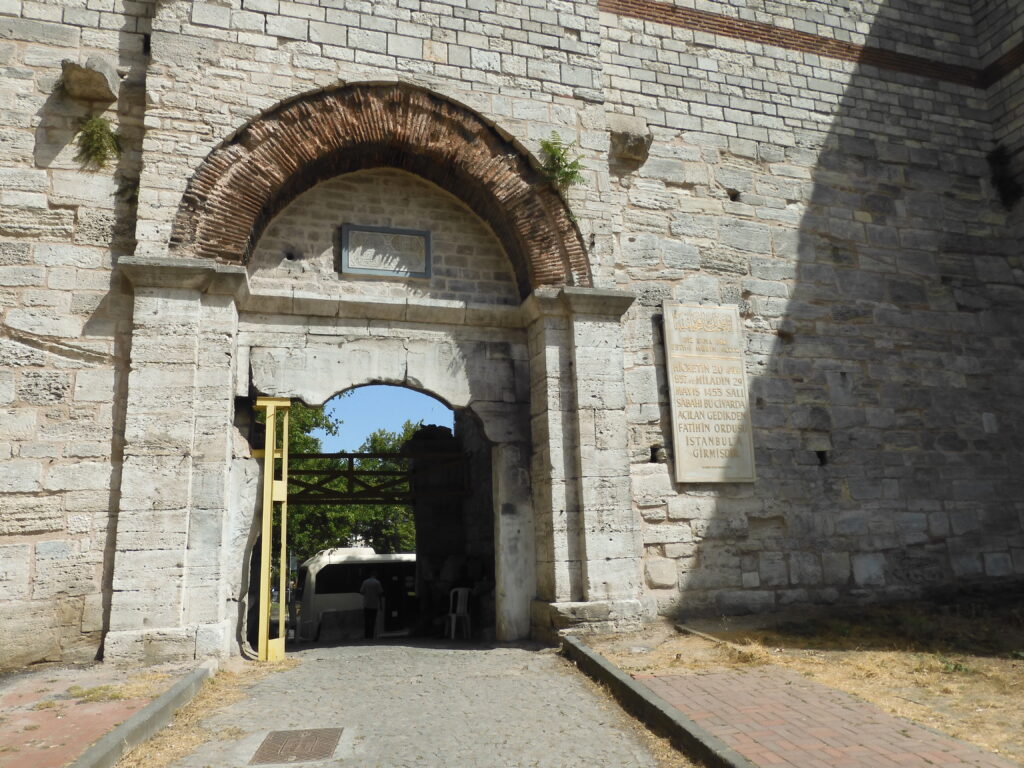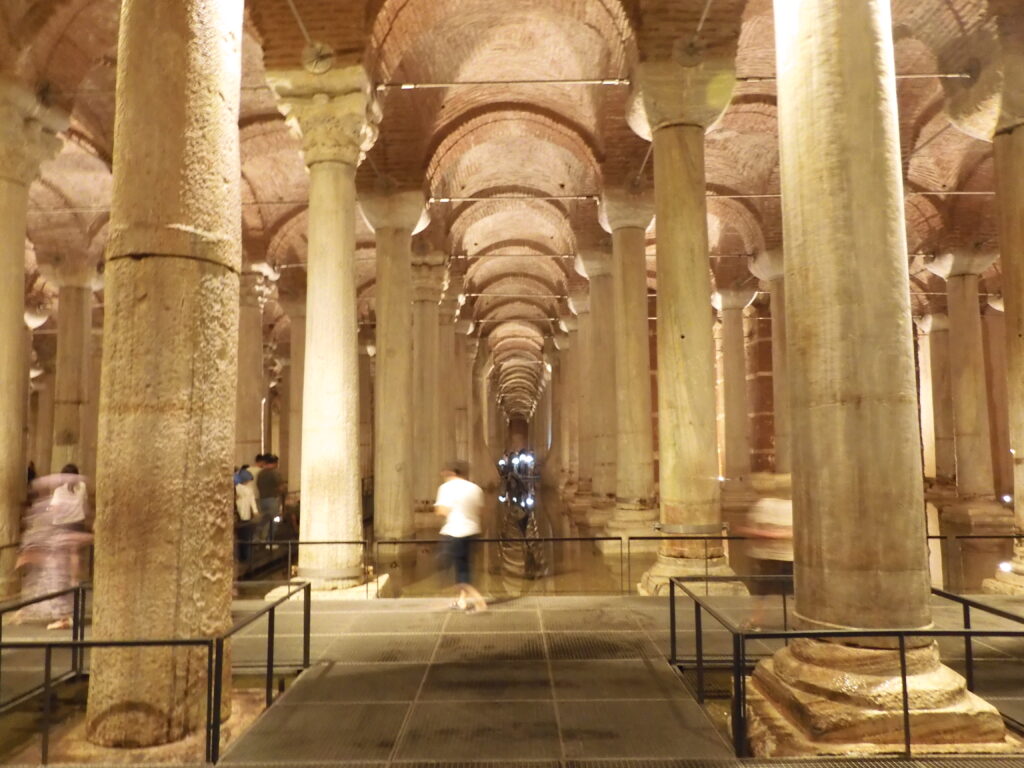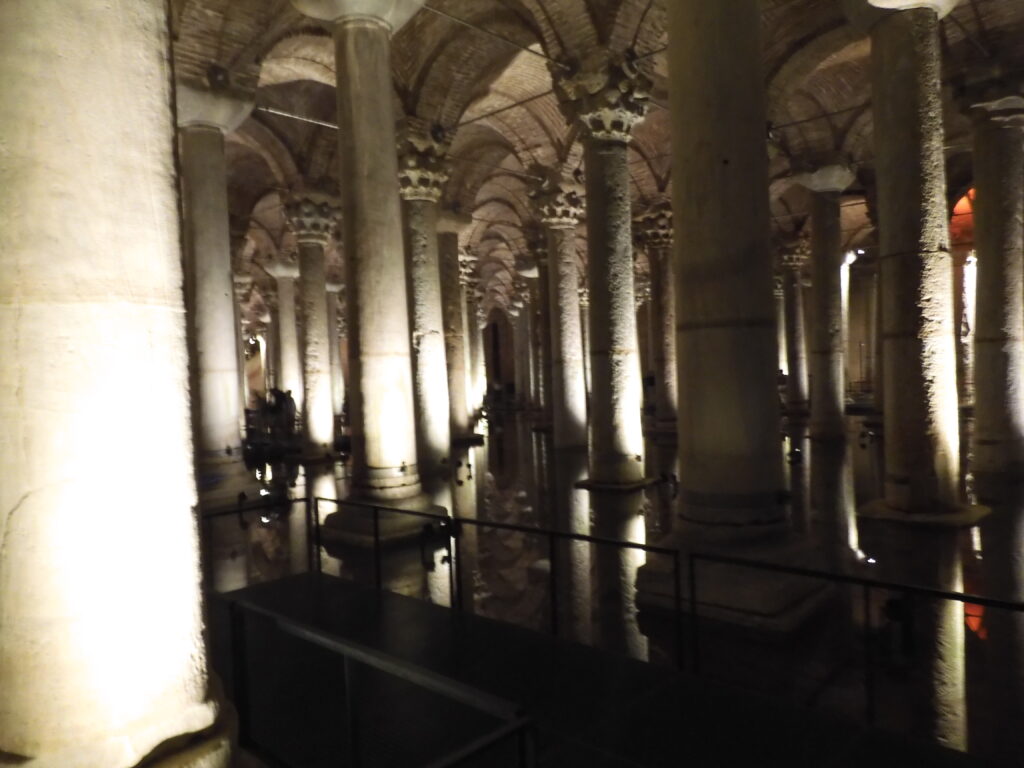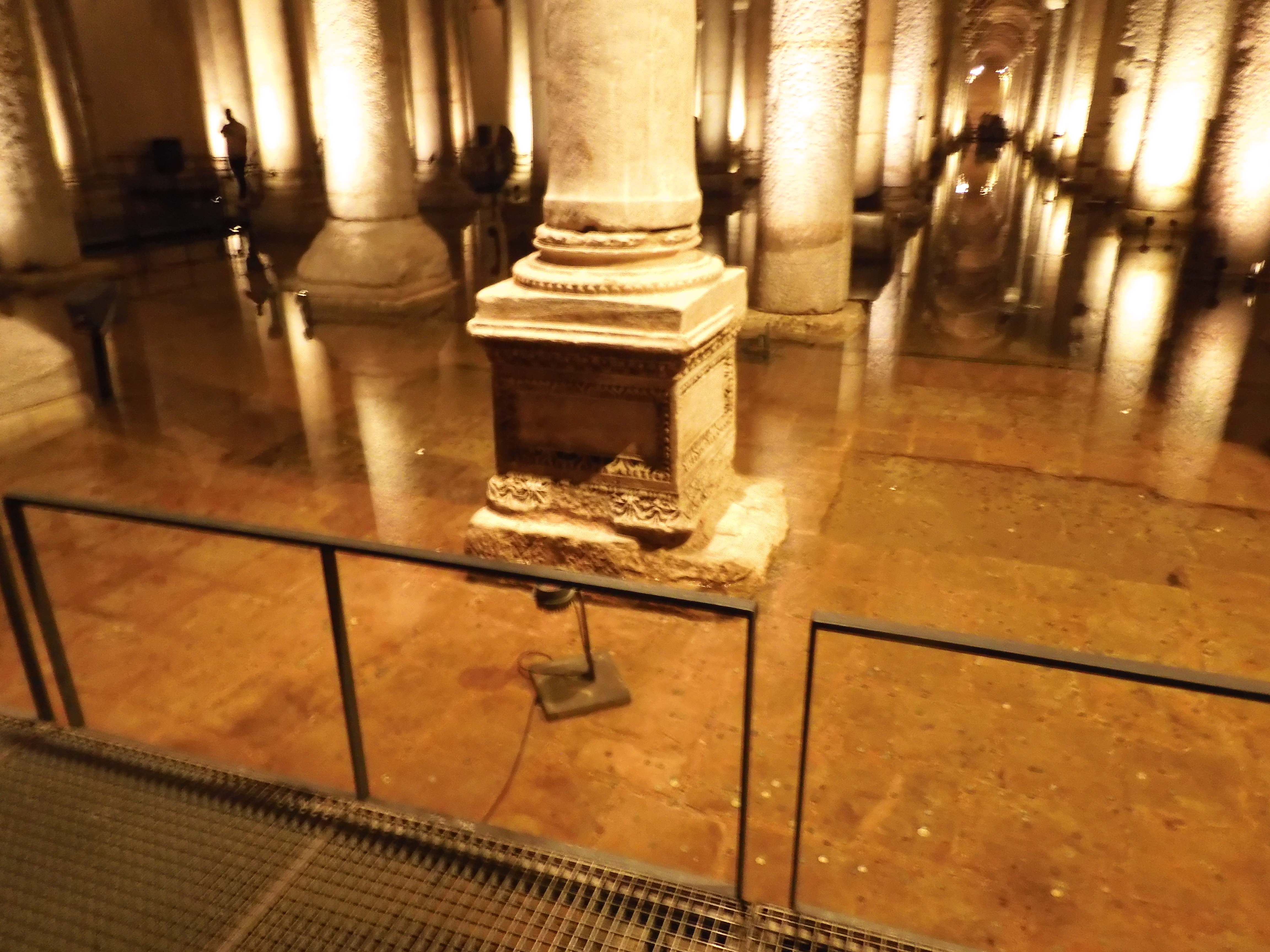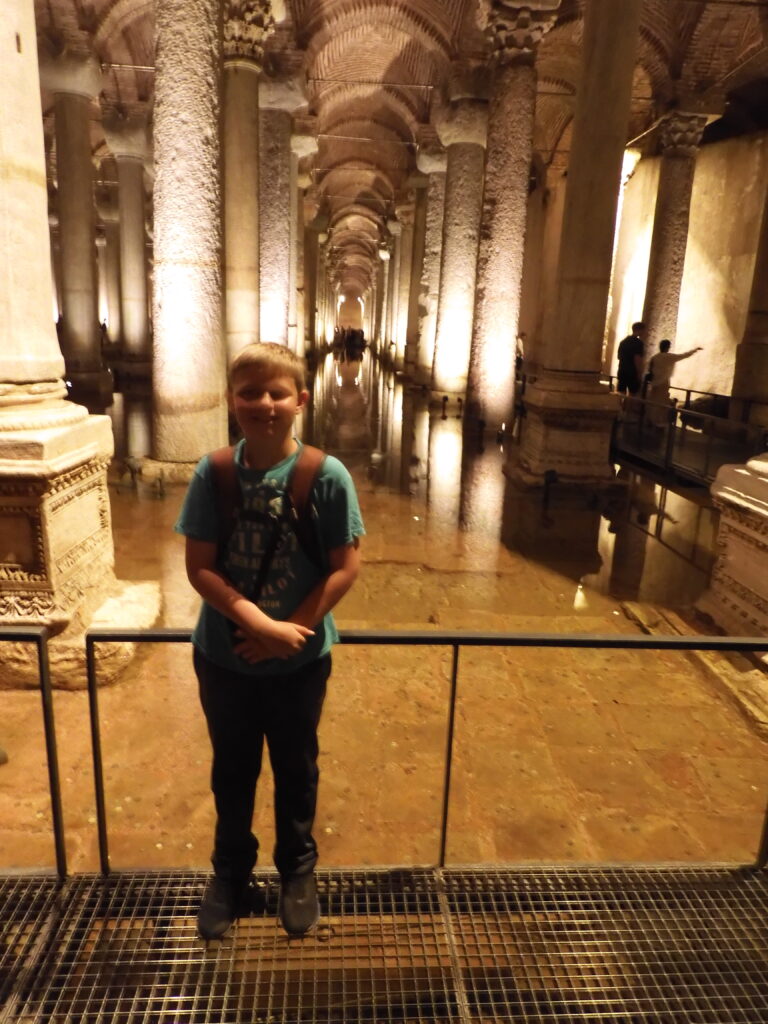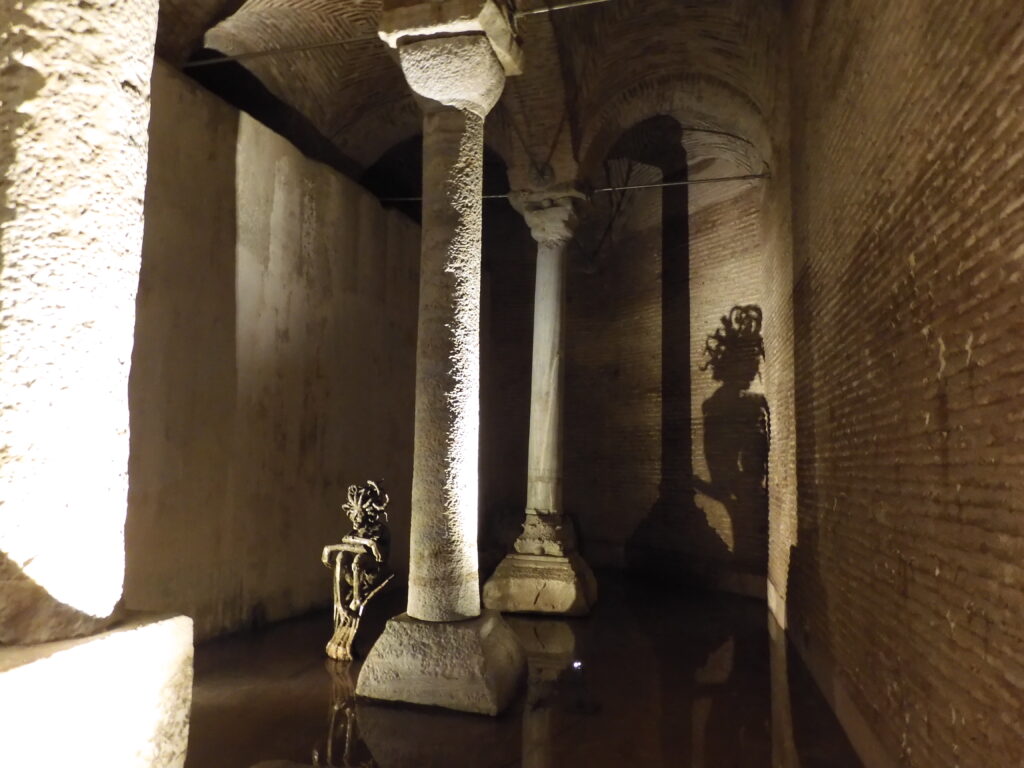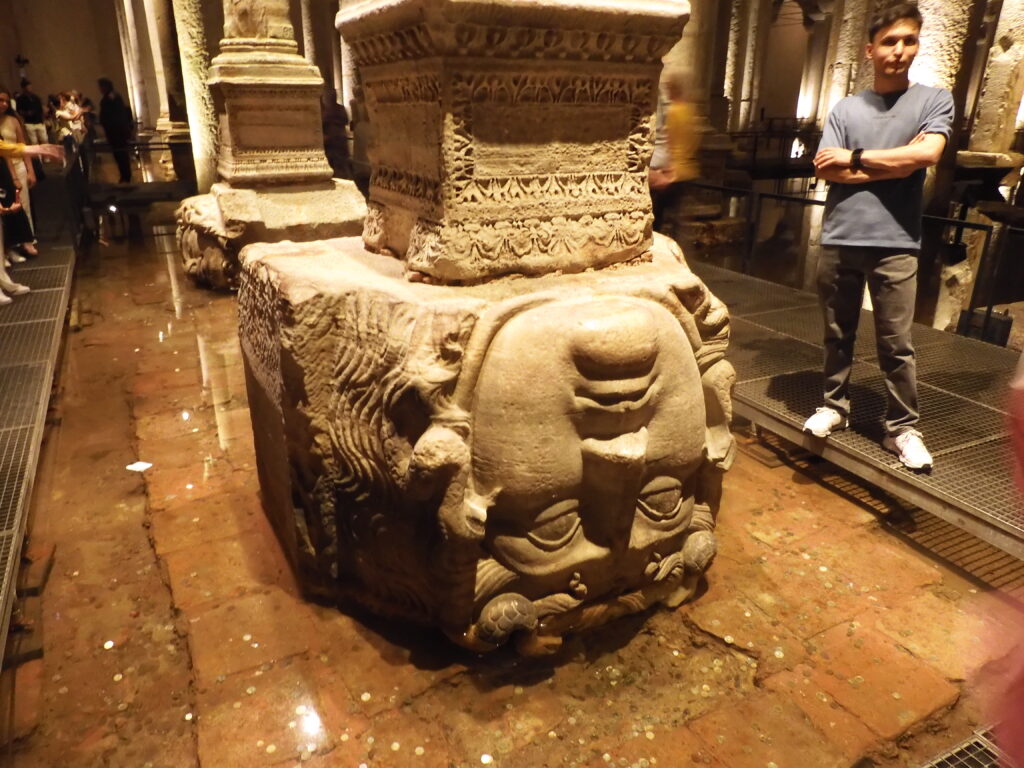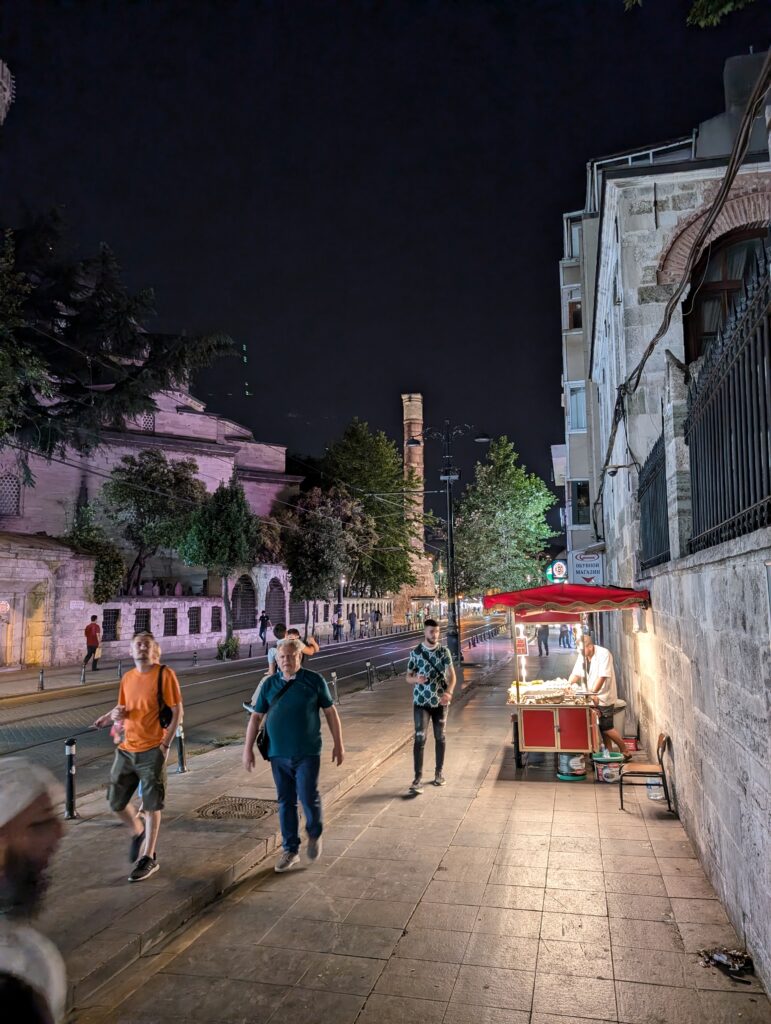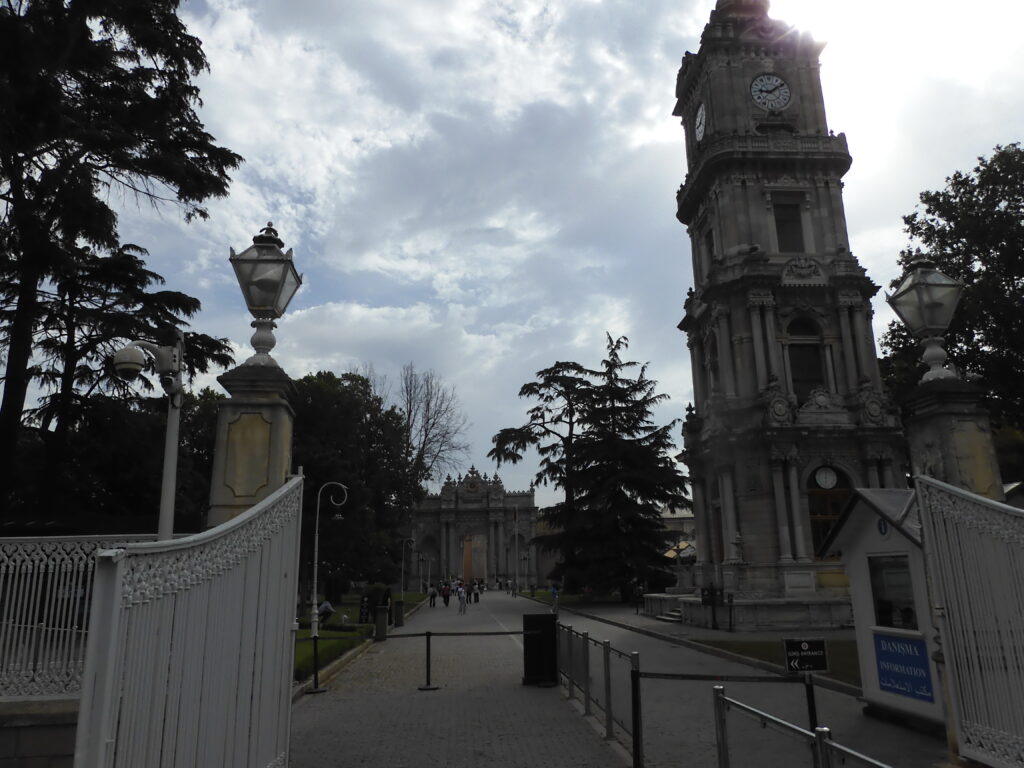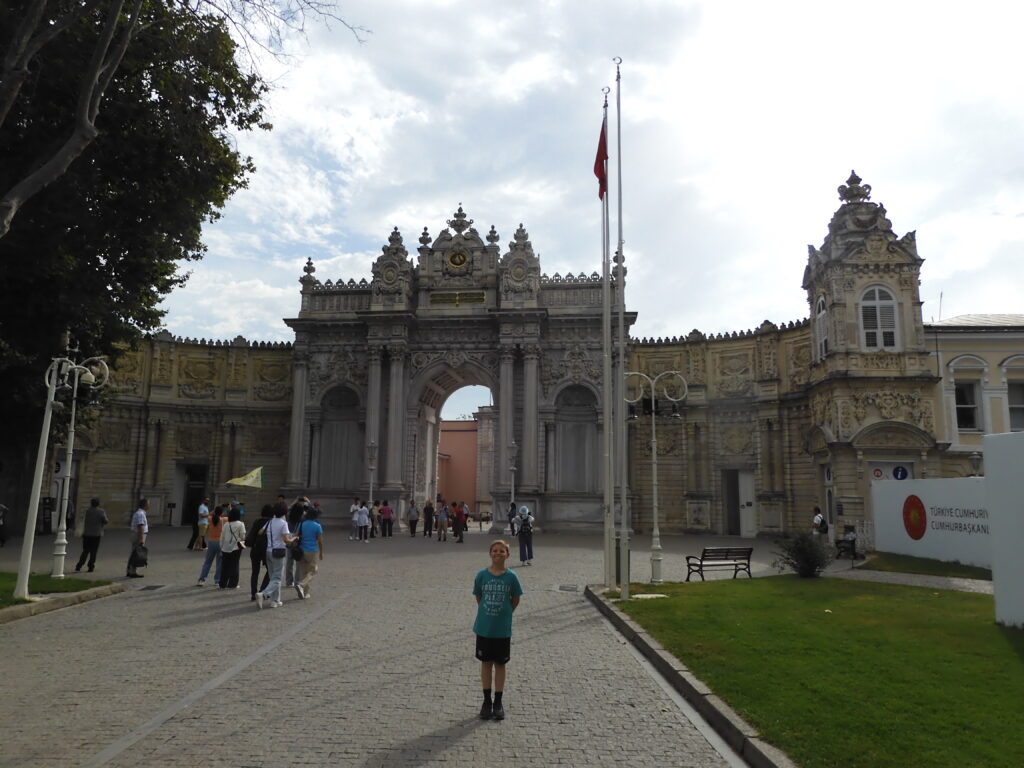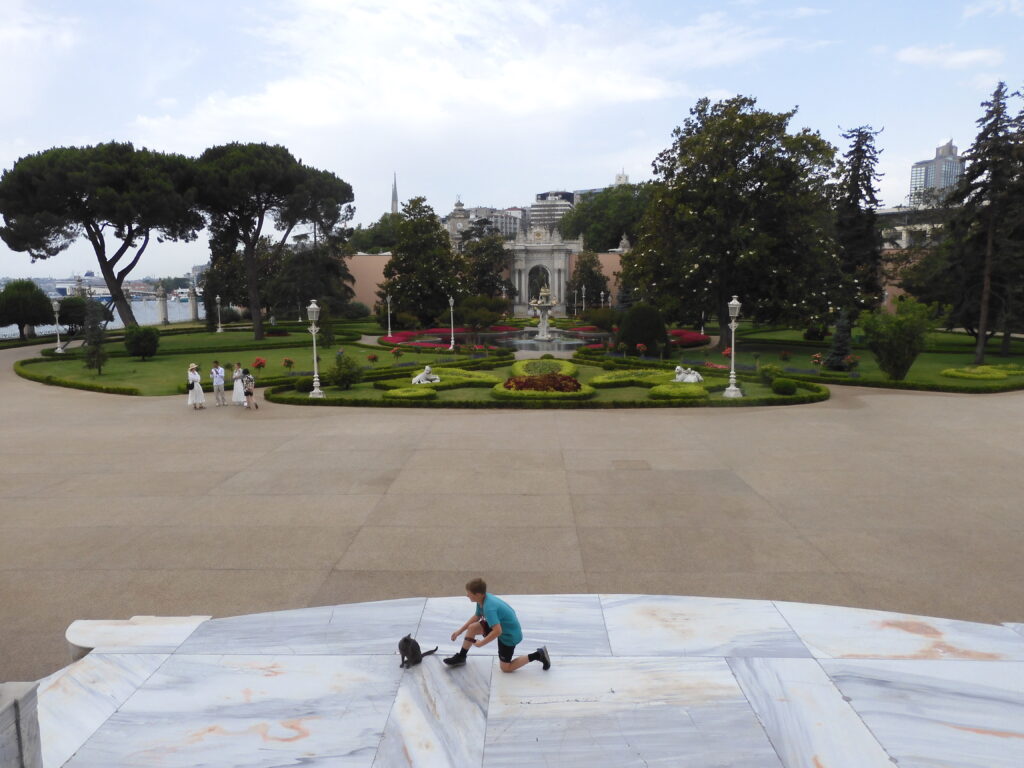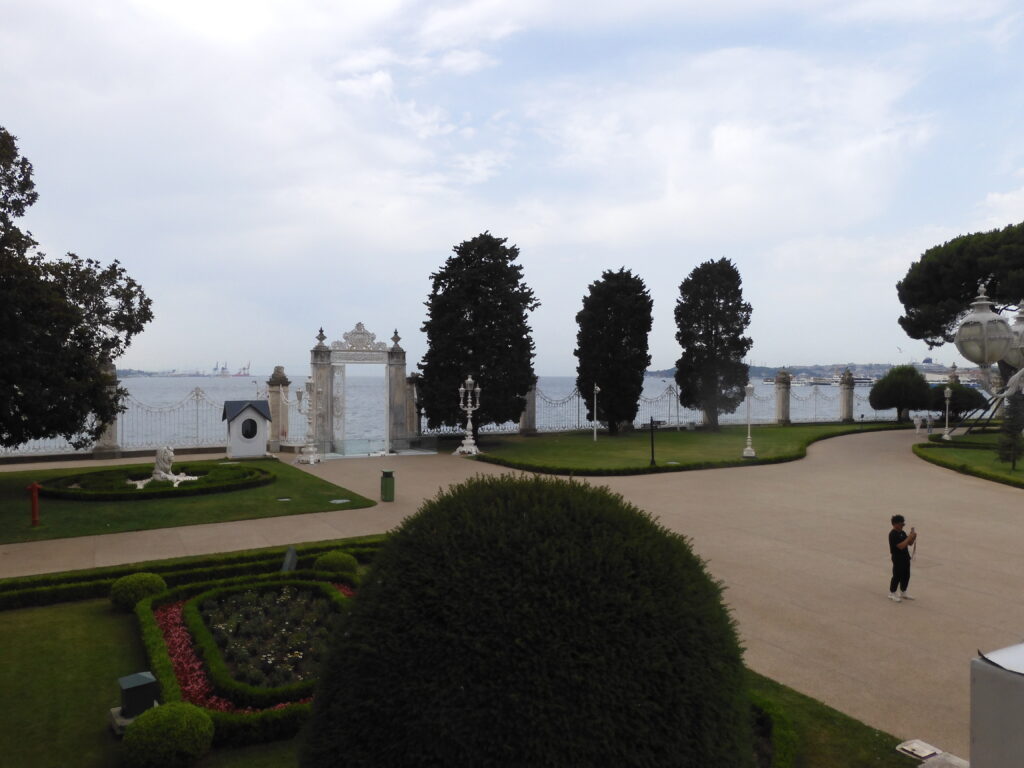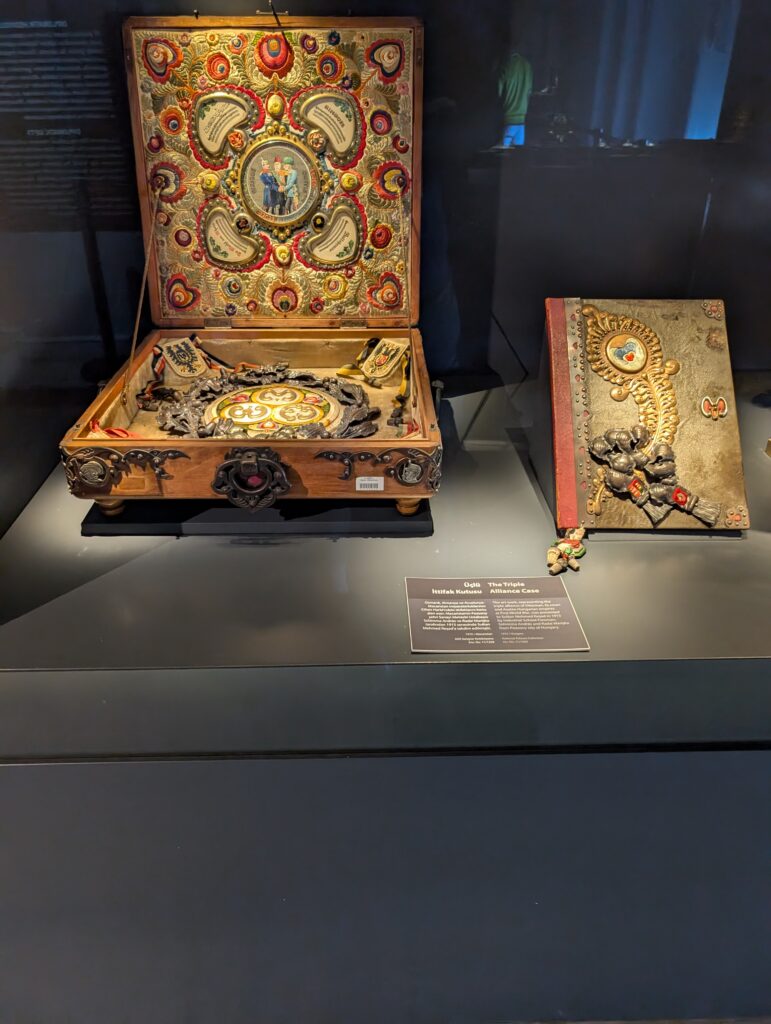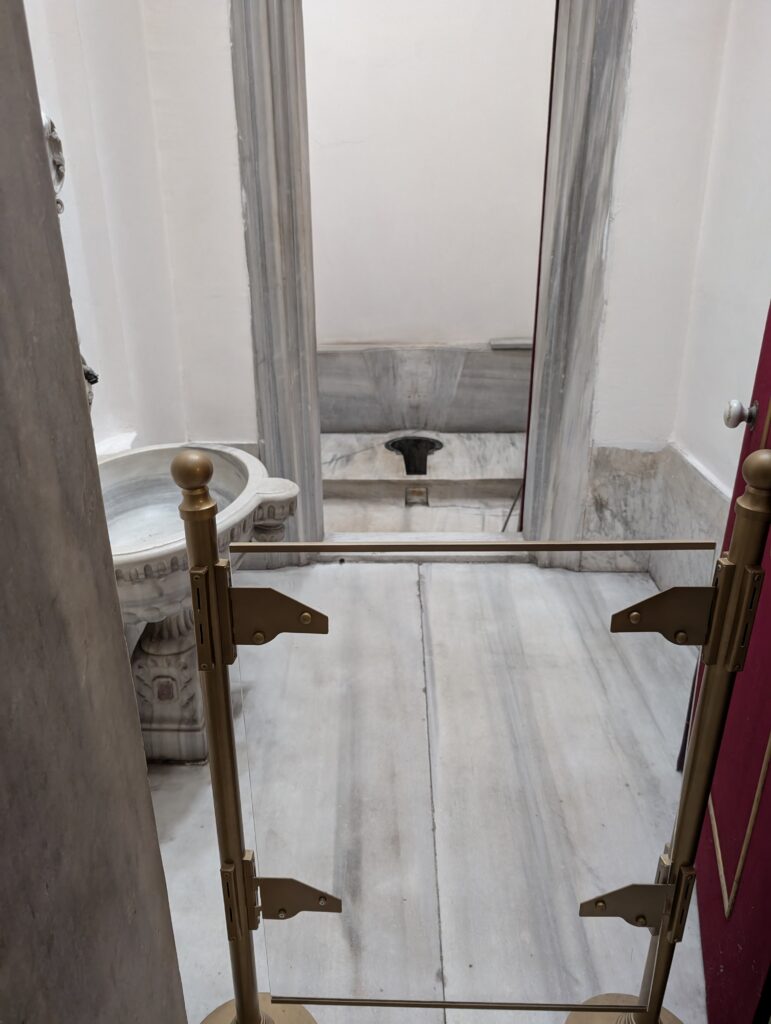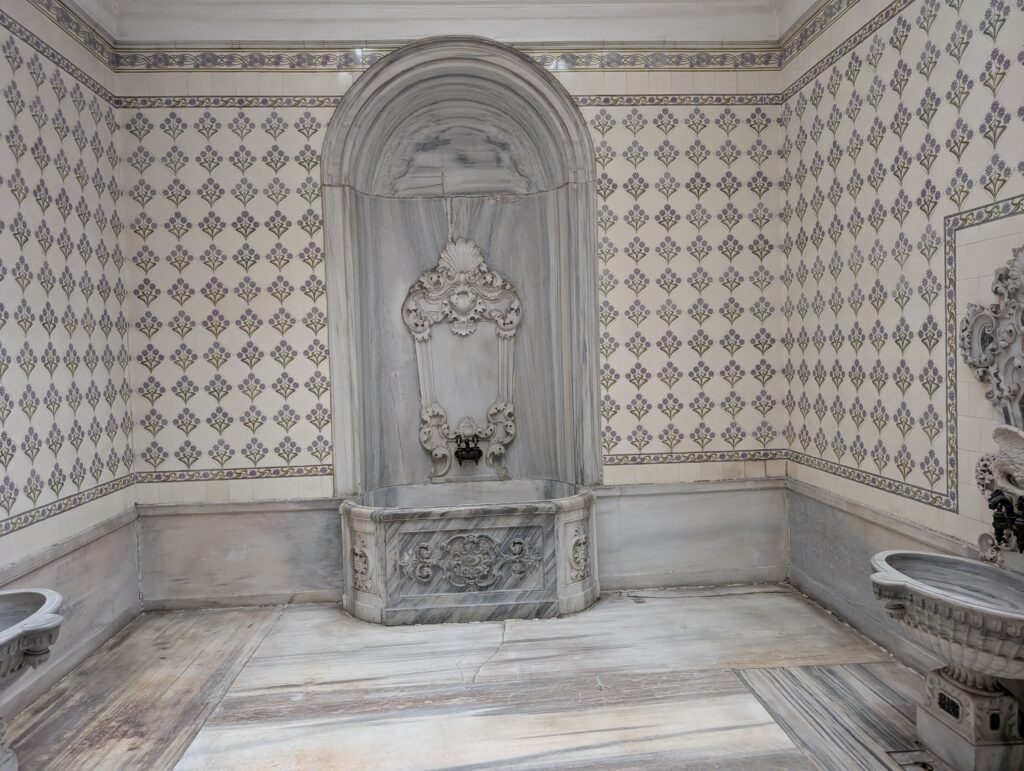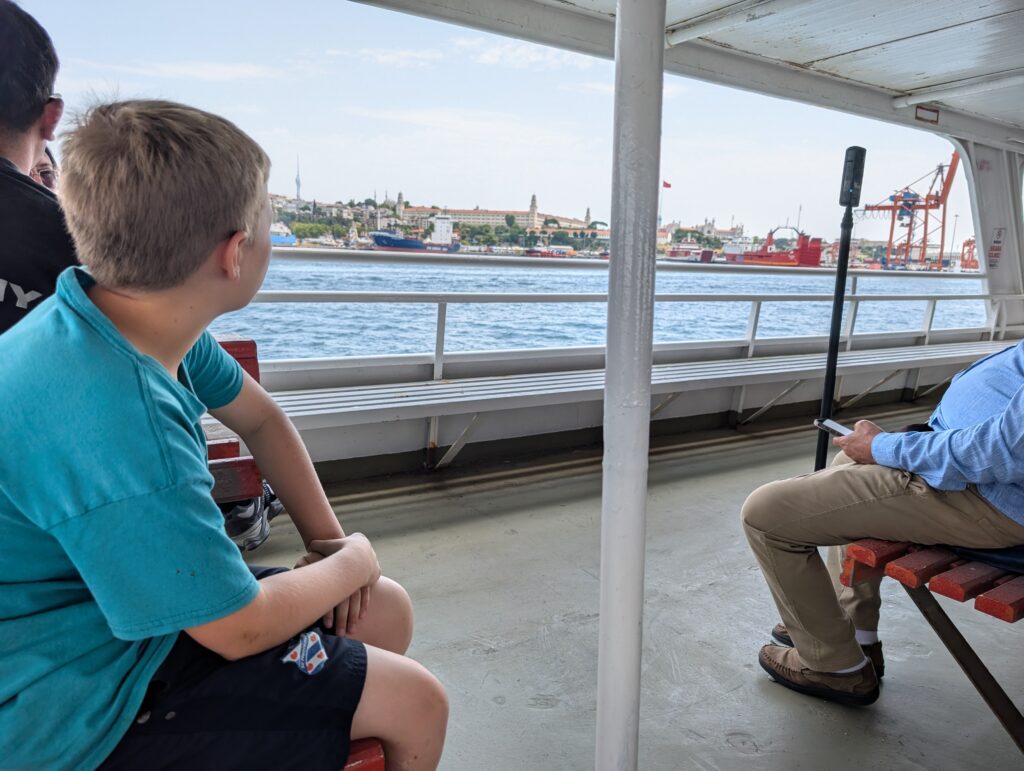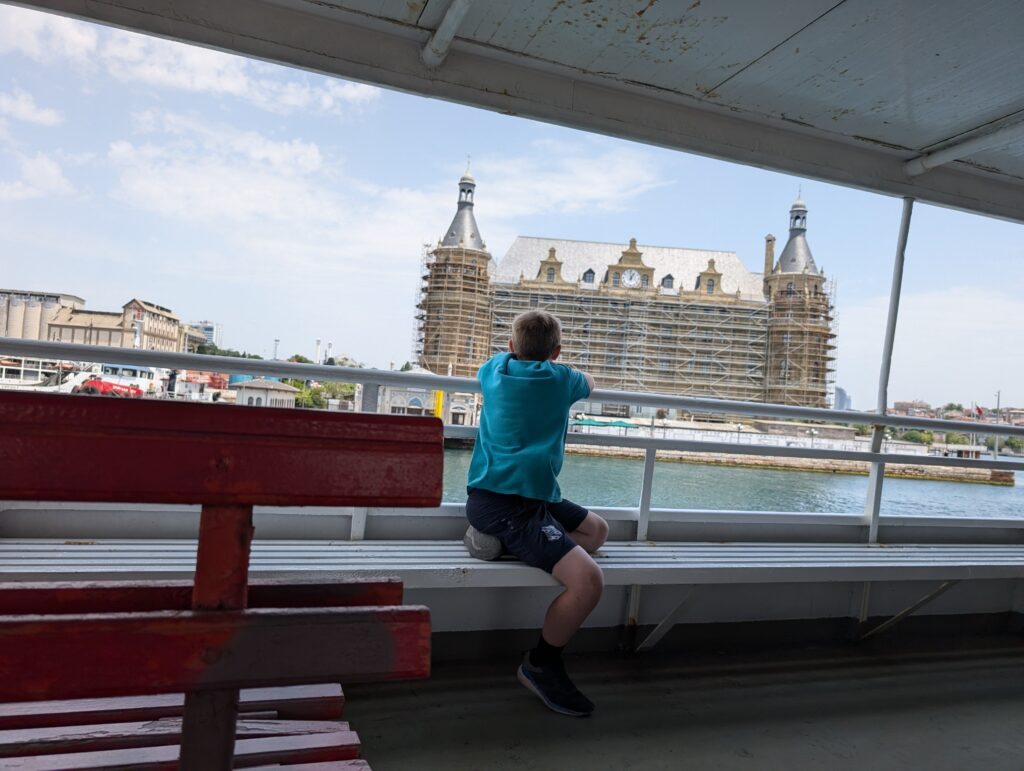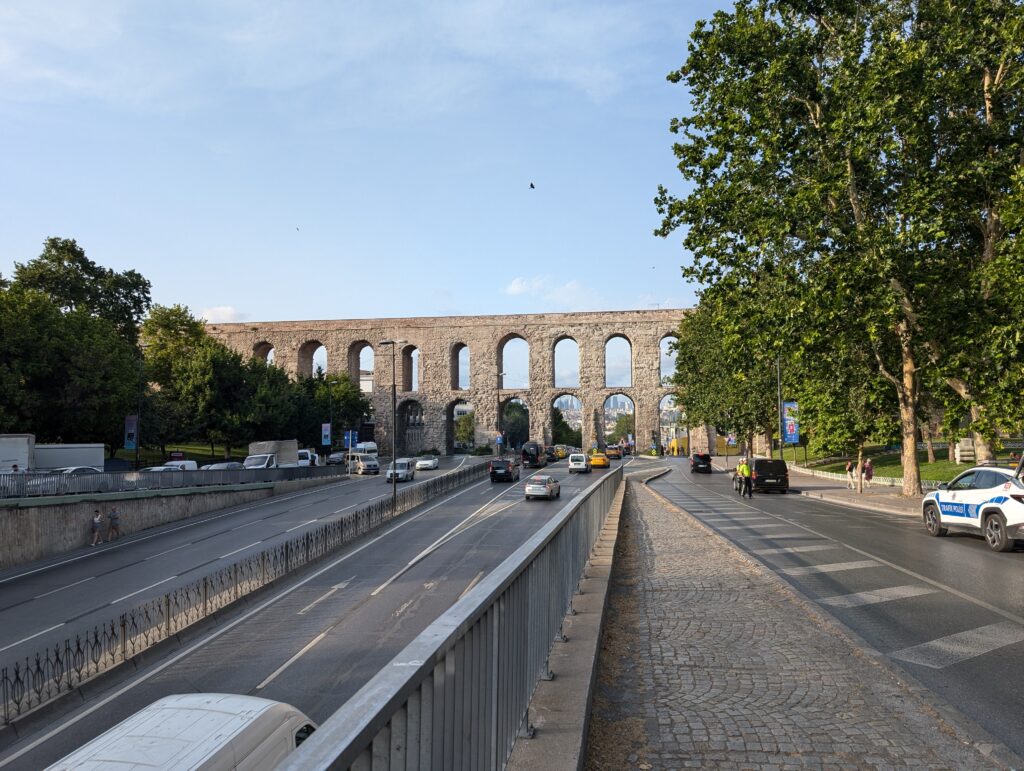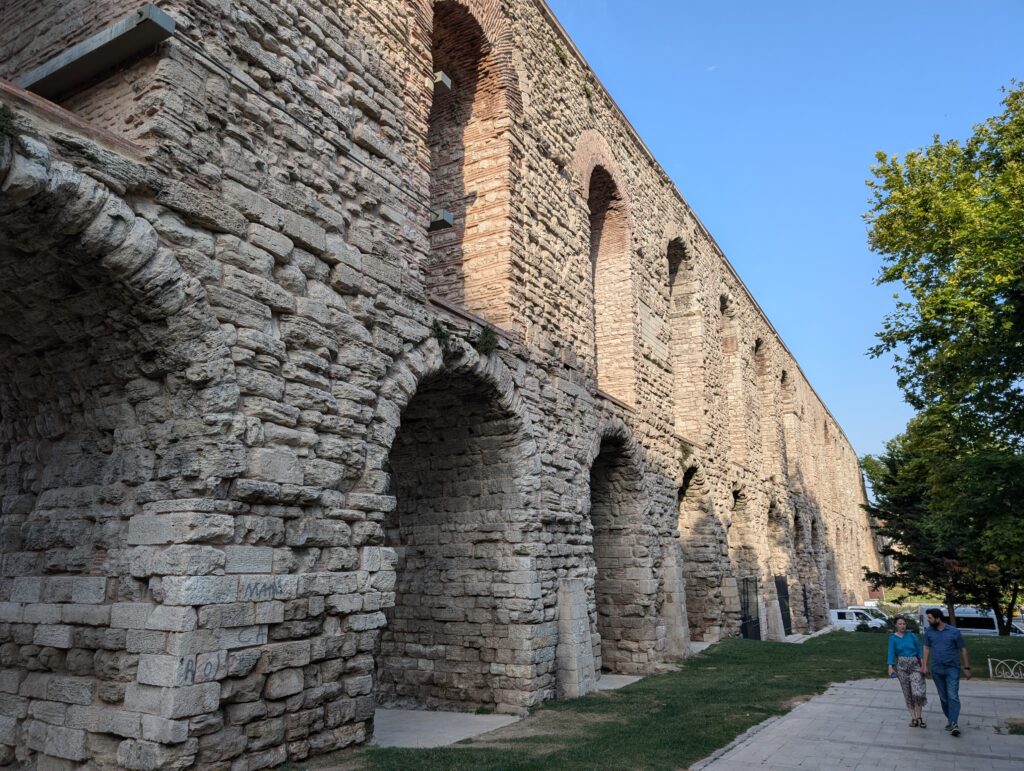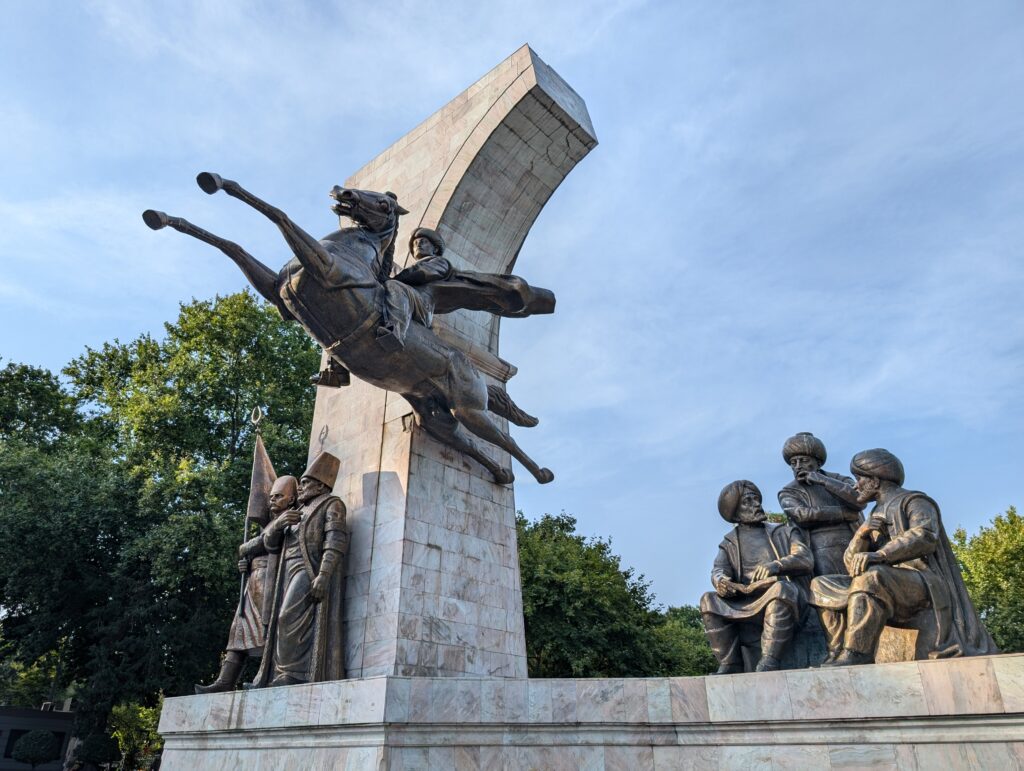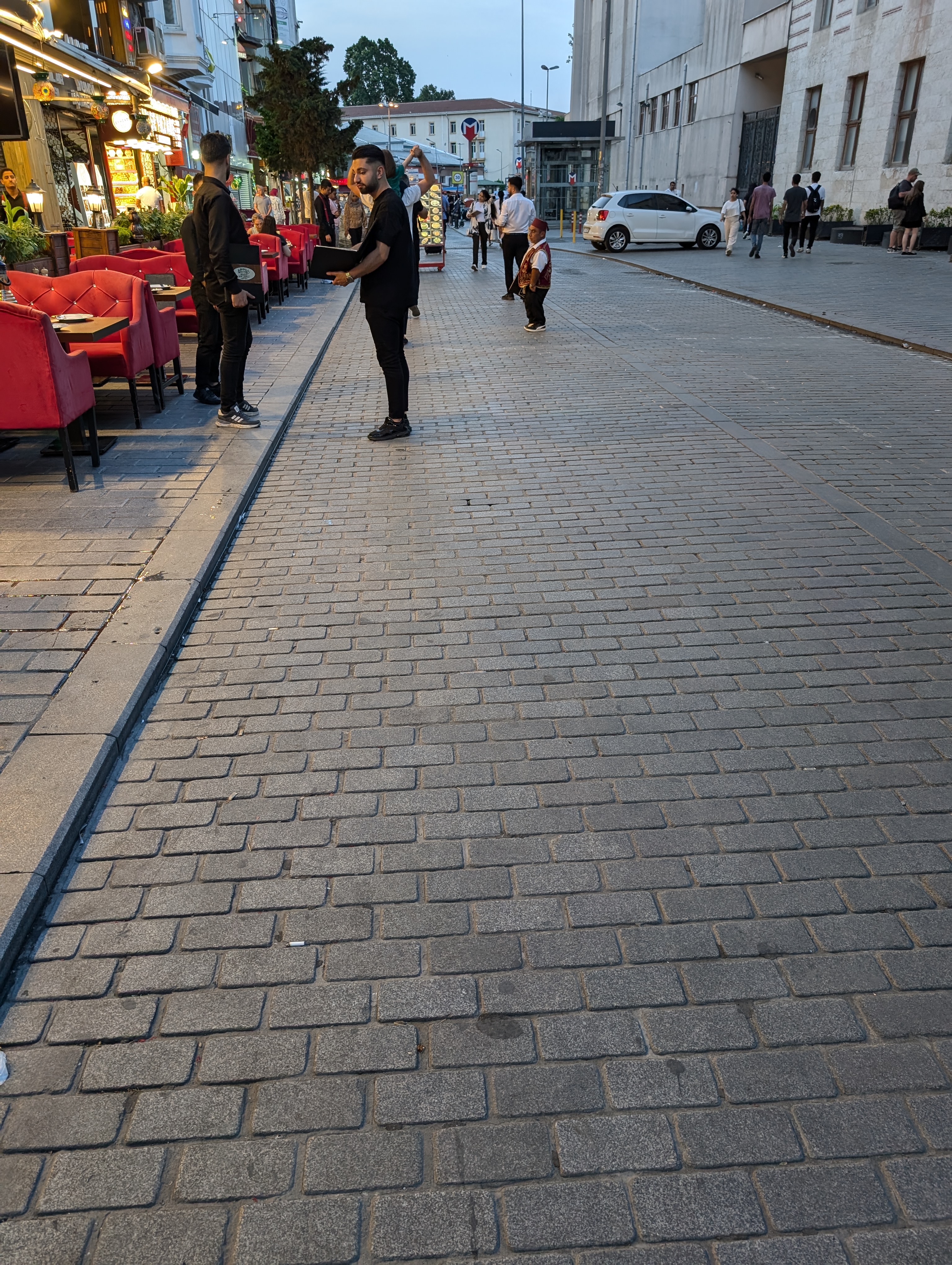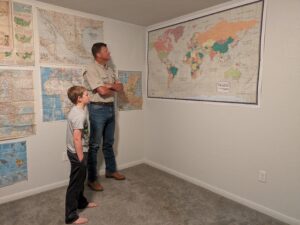Turkey
Istanbul: Crossroads of the World
From the beginning of recorded history, people have always known there was something special about the straits that divide modern Turkey. Here sits Istanbul that was once Constantinople. It has also been New Rome and Byzantium. It sits on the crossroads of the old world, at the junction of Europe and Asia, and also at the junction of the Black Sea and the Mediterranean. The old spice roads that connected Europe with the Far East went through here before the Ottoman Empire closed passage, forcing the Italian City States and other European powers to search for sea routes to the Orient, indirectly leading to the discovery of the Western Hemisphere continents.
Because of this pivotal location, it sat at the heart of several empires. Most people would say Rome collapsed in the fifth century when Germanic tribes took the city of Rome. By then, Rome had been divided into an Eastern and Western portion. Historians later referred to this Eastern Roman Empire as the Byzantine Empire, but its citizens always thought of themselves as Romans, even if they spoke Greek and had a Hellenistic culture. This Eastern Roman Empire lasted nearly another millennium. It wasn’t overrun by the Turks until 1453.
From 1453 until after the first world war, the Ottoman Turks based their empire – an Islamic Caliphate – at Constantinople. The Sultan was in theory the religious and political leader of all the world’s Muslims. This Caliphate survived until it was replaced by the Republic of Turkey in 1924. They controlled vast swaths of land directly, and ruled over much of the rest of the Muslim world through tributary or vassal states like Morocco, Algiers, Tripoli, and Tunis.
The Ottoman Empire never really placed much value on the historical significance of the political, religious, and cultural artifacts left by their land’s previous rulers or inhabitants. The first thing Sultan Mehmed II did after capturing the city was to make his Muslim prayers in the Hagia Sophia, a massive domed Christian cathedral completed in the year 537. Even now, the Turks have converted nearly every ancient church of any importance into a mosque (even though there are already mosques on nearly every corner in the city), rather than just allowing them to remain as museums. They have scavenged other ancient Roman buildings and fortifications for building materials, allowed newer buildings to be constructed in or on them, and have just generally not valued the importance of the historical sites that predated their domination of the area.
Knowing some of this, I wasn’t sure how much time I really needed to dedicate to Turkey. I knew there were some famous sites in Istanbul I wanted to visit. Ultimately, Turkey far exceeded my expectations. Although it is the fifteenth largest city in the world and a developing country to some extent, navigating the tourist parts of the city was relatively easy. Most of the major attractions are in a compact area easily accessible by public transport. We stayed in the Sultanahmet neighborhood. From there, you could walk to the Topkepi Palace, the Blue Mosque or the Hagia Sophia in a few minutes. Anything else was accessible by tram or metro within 15-30 minutes, with rides costing about 17 Turkish Lira. This amounts to fifty cents.
On our first day, we decided to hit the walkable sites near our guest house. A reservation was needed for Topkapi Palace, so we started there. For the most part, Turkey is inexpensive to visit. The main tourist sites are an exception. For an English language guided tour, we paid $95 each. We really enjoyed the tour. Our visit included the harem, and all of the ancillary museum exhibits the Turkish government has on display here. Topkapi Palace was the Sultan’s residence and center of government from the time Mehmed the Conqueror captured the city until the more modern palace was constructed in the 19th century. It really was a city of its own. The royal family and harem lived there. The eunuchs and servants lived there. High ranking officials and viziers did business there. The population of the palace alone was over 5,000. It was built with a commanding view of the Bosphorus Straits. Not only did the sultan enjoy this view, but the apartments of his favored concubines and even his mother overlooked the city and seascapes. A huge entry courtyard leads into a middle courtyard where such business was transacted as collections of royal tributes and payment of royal obligations. The grand vizier’s office was here. The ground housed a school for eunuchs. Castrating men was against Muslim dictates, so the Ottomans never castrated their own citizens. They were very good customers of people who did, however. Many senior government officials were eunuchs well into the nineteenth century. Of course, men who looked after the harem were also all eunuchs, too.
One area of the palace I found interesting was the treasury. There were actually two treasuries. One outer treasury supervised by the grand vizier. From this, imperial obligations were settled and into it taxes and tributes were collected. The sultan’s private treasury, on the other hand, housed precious objects too valuable to be very far out of sight. In late antiquity and the middle ages, Christians placed a high value on religious relics. Many places, for instance, claimed to have splinters of the “true cross,” or nails from it. Physical remains of saints were also popular. Hagia Sophia and other Orthodox churches in Constantinople had long histories and held many relics that had been accepted for centuries as authentic. Many of these were lost when the 4th crusade sacked Constantinople in 1204. When the Ottoman Turks captured the rest, the sultan entered them into his treasury where they remained. Today, the museum has an arm and a skull fragment they claim belonged to John the Baptist. They have Moses’ staff and the sword David used to slay Goliath, they say. They say this, of course, because that’s what the Eastern Romans said. They also have several of Muhammad’s beard hairs, a seal of his, and multiple preserved footprints they claim are his. There are some letters and documents from Muhammad as well as some early followers. Like many other treasuries, this one houses some pretty cool war trophies. Sultans were given many items as gifts and tributes, but they also captured a lot of their smaller neighbors’ royal accouterments, so there is a lot of jewelry on display. One piece of jewelry contains an 86 karat diamond, and no one knows where it came from. The palace does have an armor and weapons collection, but these are all ceremonial pieces.
We paid extra to see the palace harem. This was moderately interesting, but there is nothing particularly salacious and nothing any more extravagant than the rest of the palace. I did learn a few interesting tidbits, however. The Ottoman equivalent to the Queen Mother – the sultan’s mom – held a particularly esteemed position at the palace. This is why she commanded one of the best apartments. She was essentially the chief of the harem. Often when the sultan came back from a long military campaign he went first to the harem, but not for the reasons one might assume. His mother knew all of the inside information as well as palace intrigues which he could catch up on before taking care of other matters. The palace grounds themselves are quite large and it took all morning for us to see them. We grabbed a snack and then walked to the nearby Hagia Sophia.
(Continued)
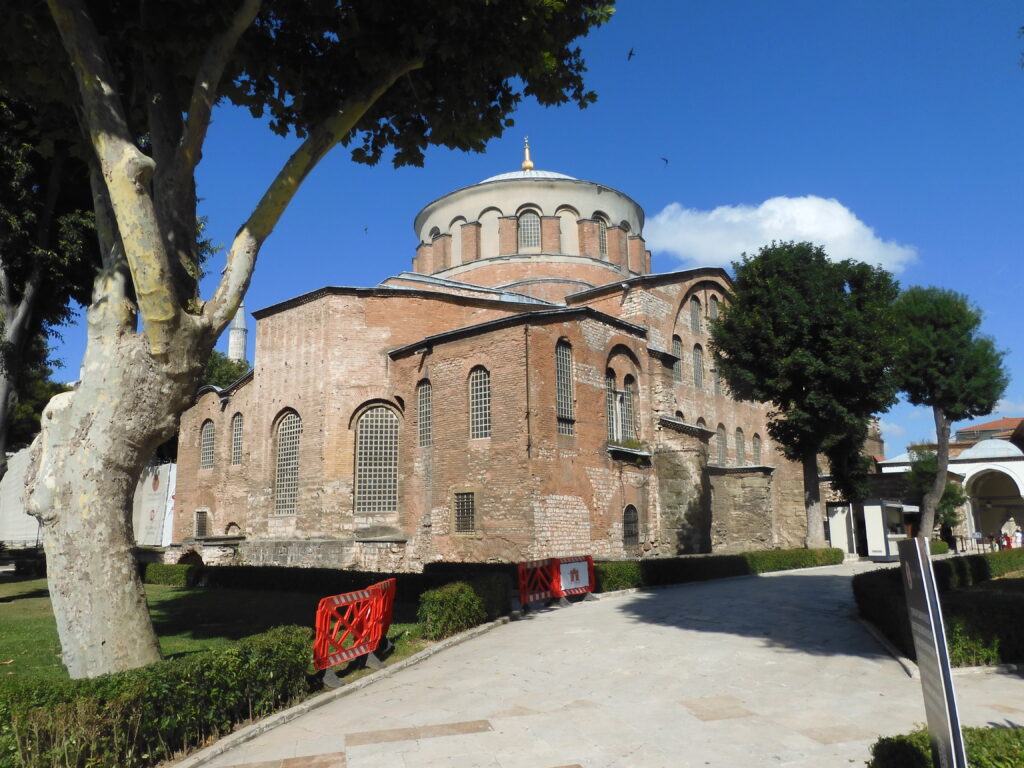
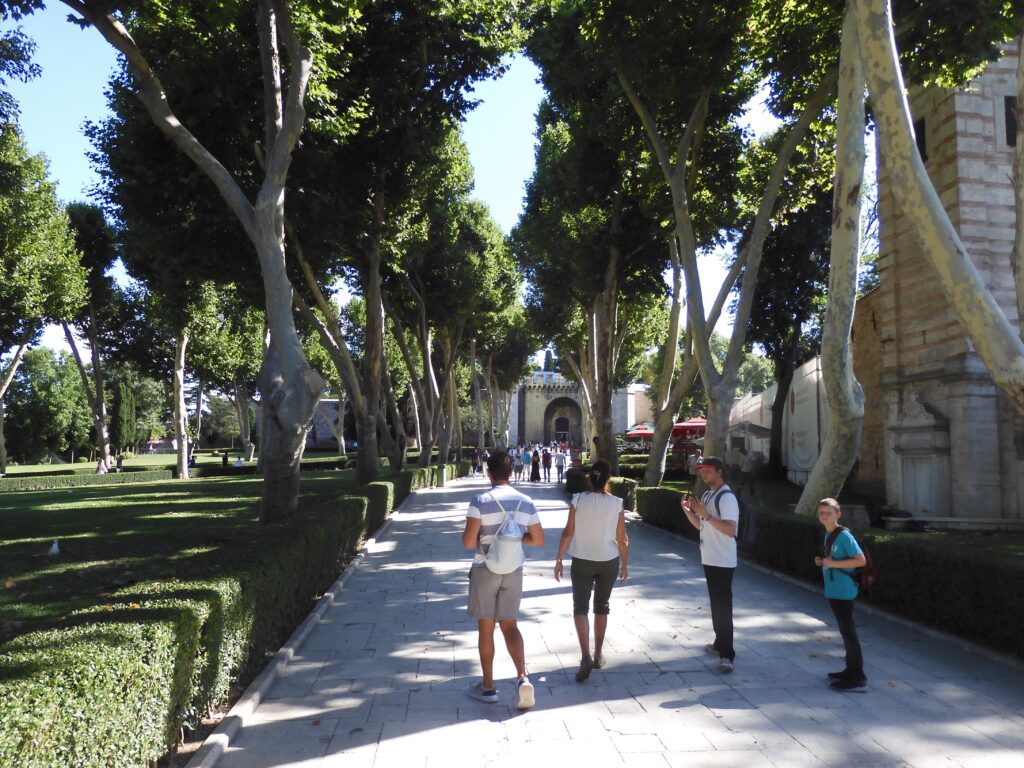

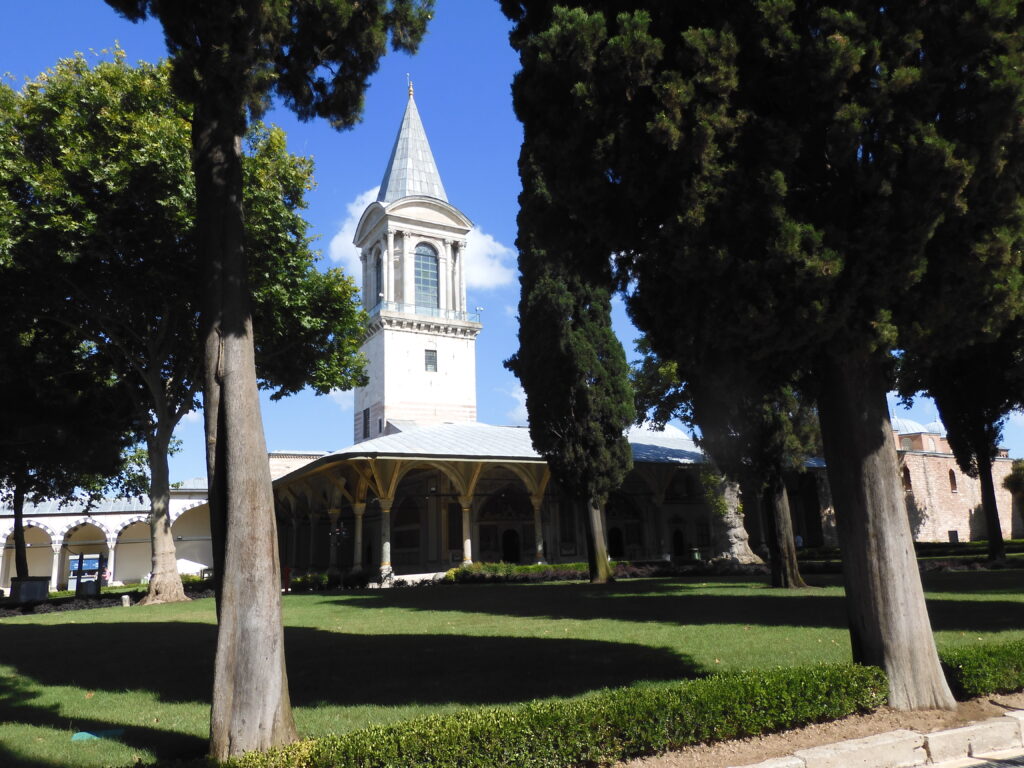

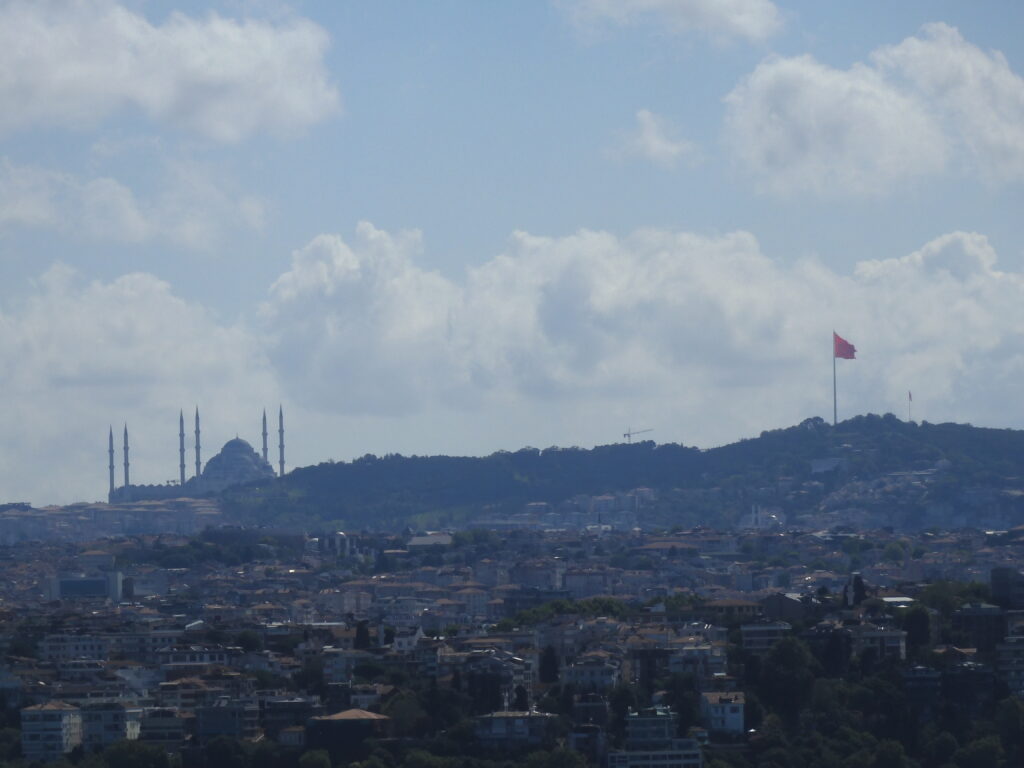
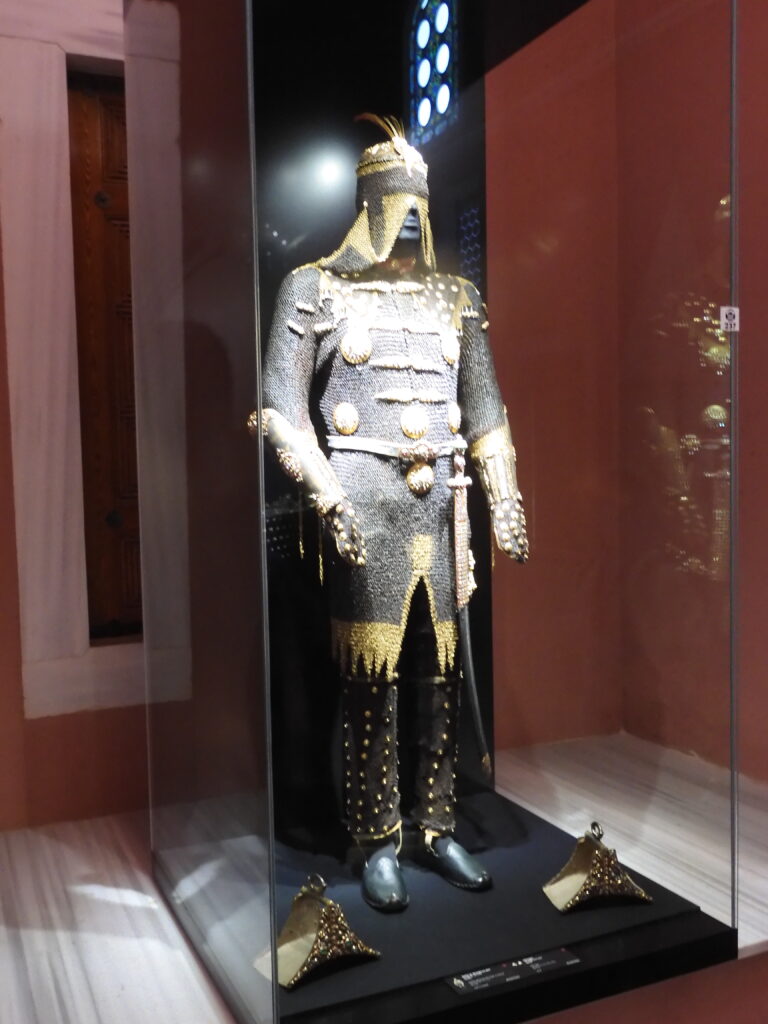
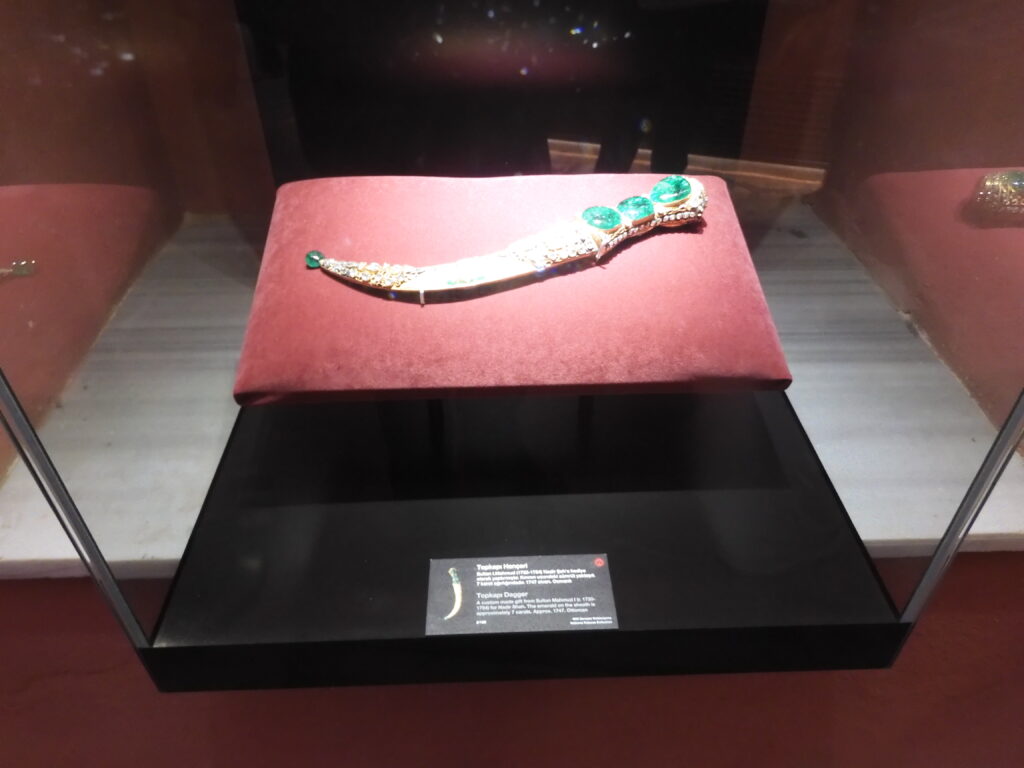
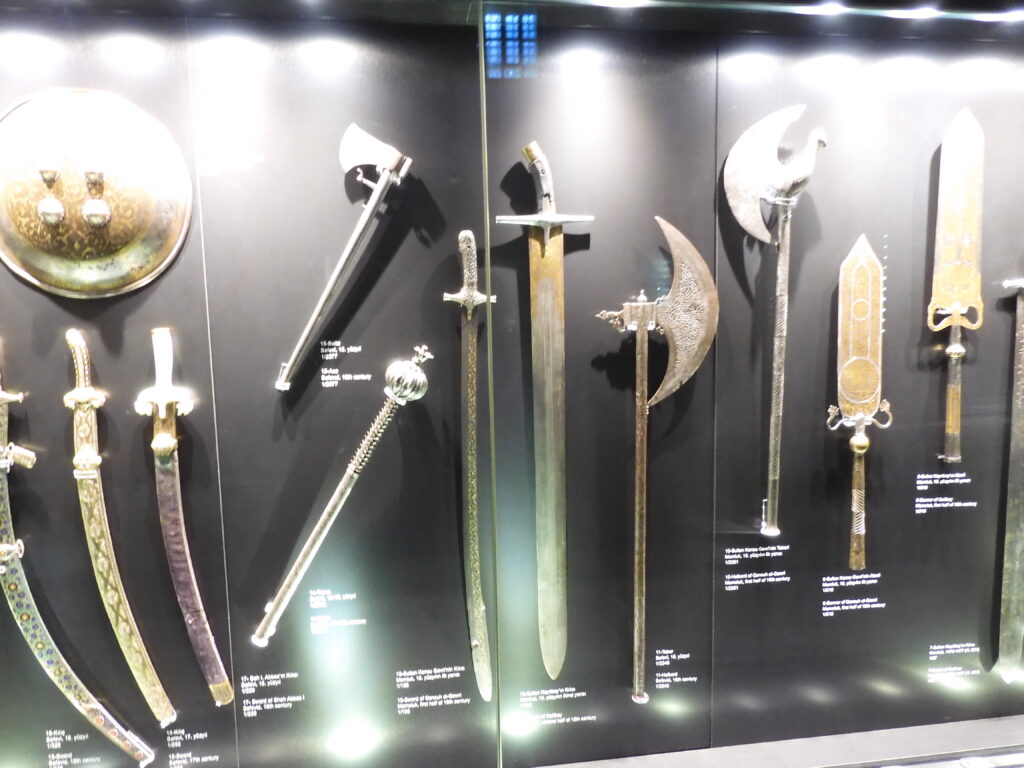
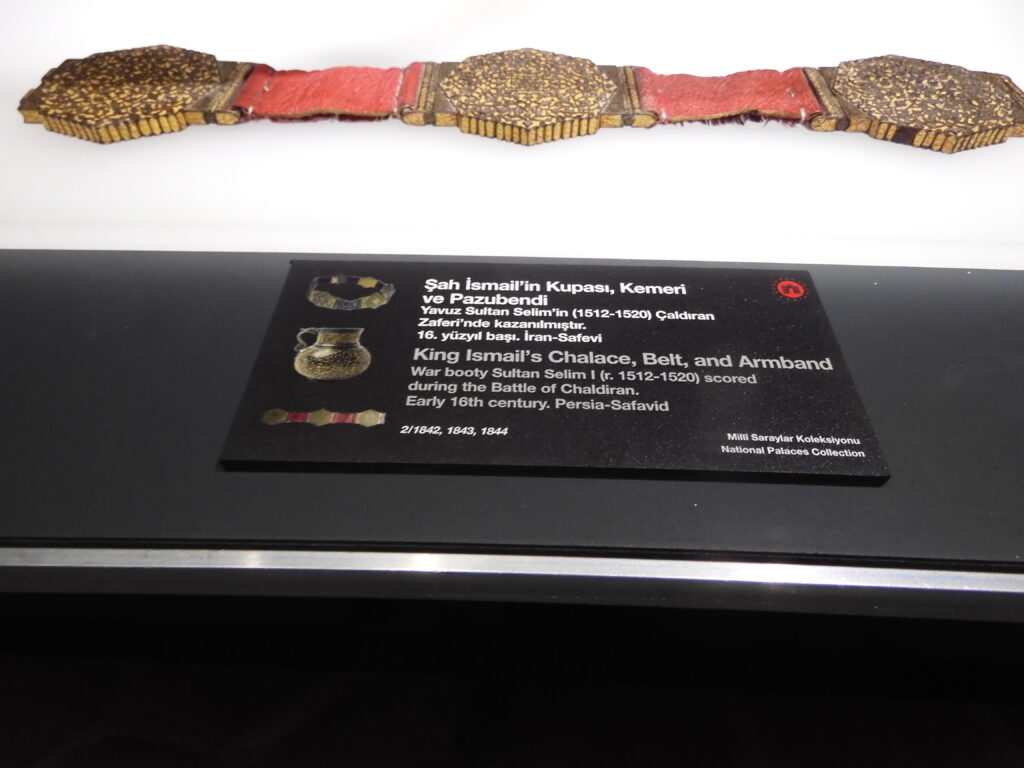
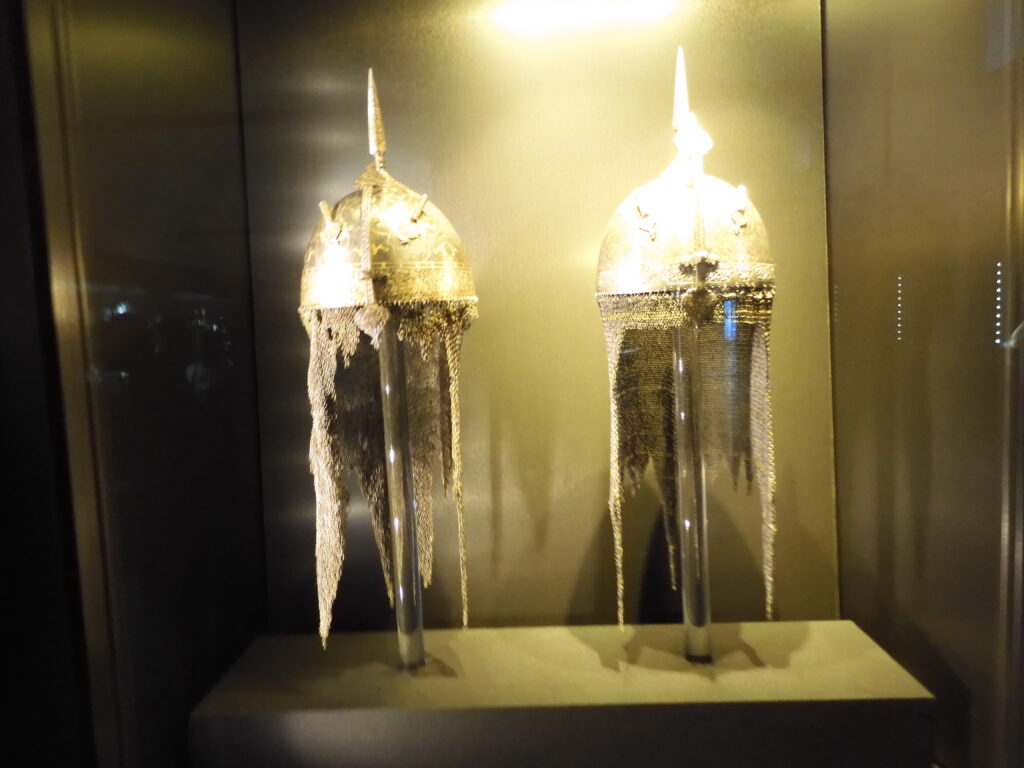



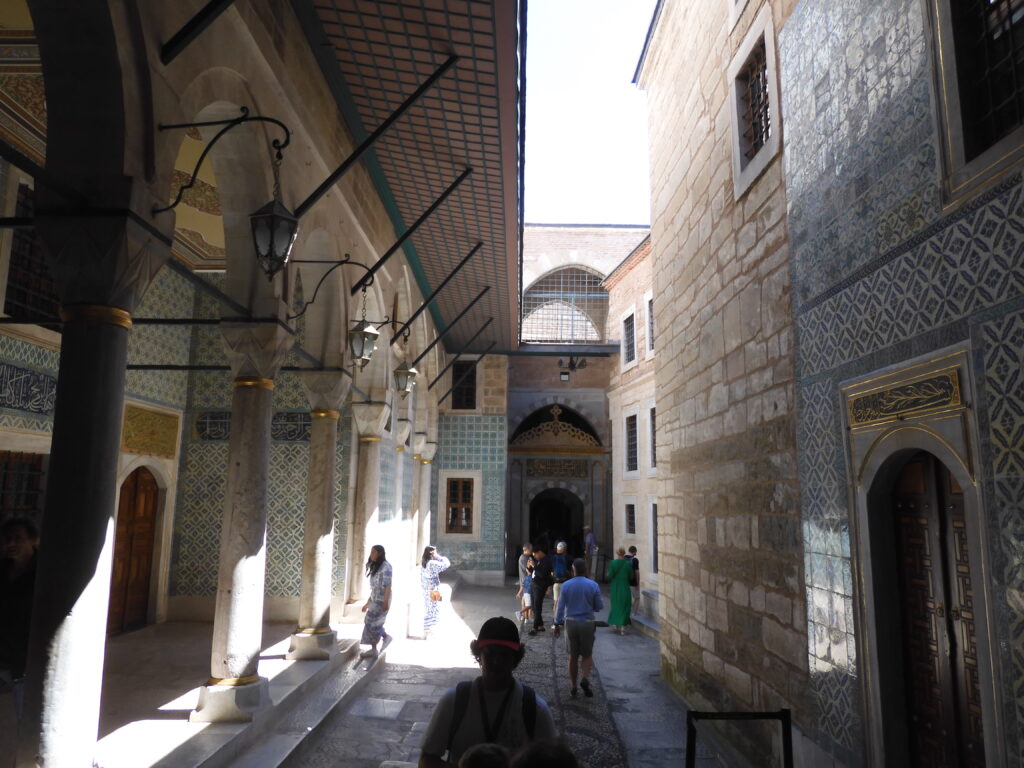
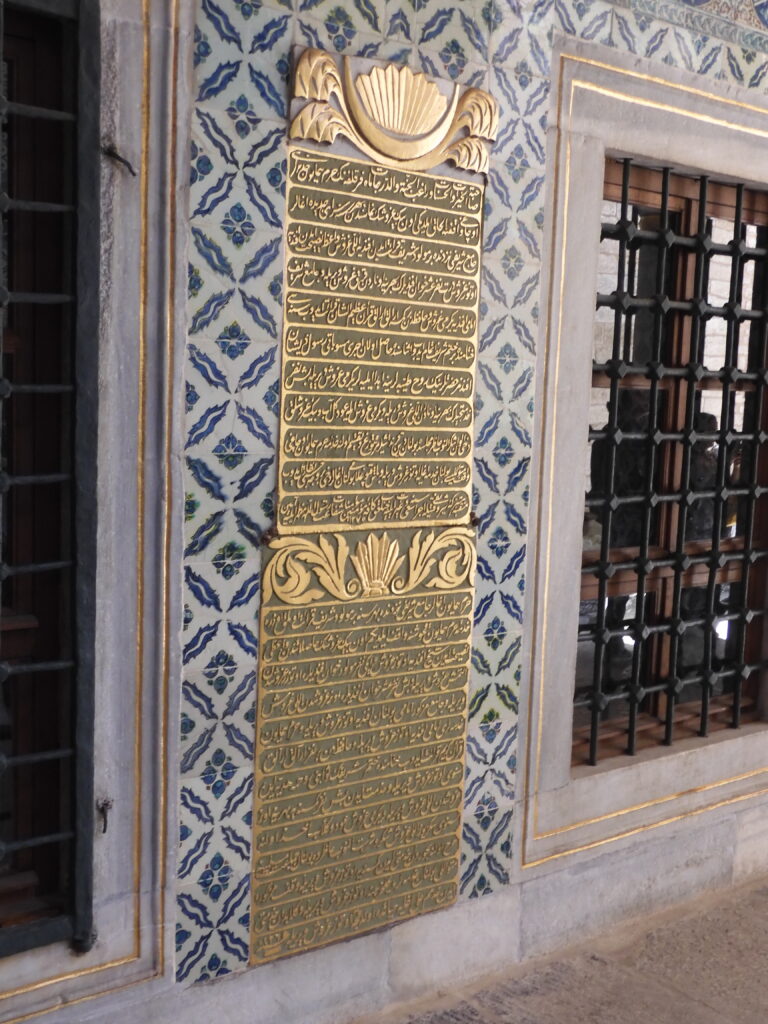
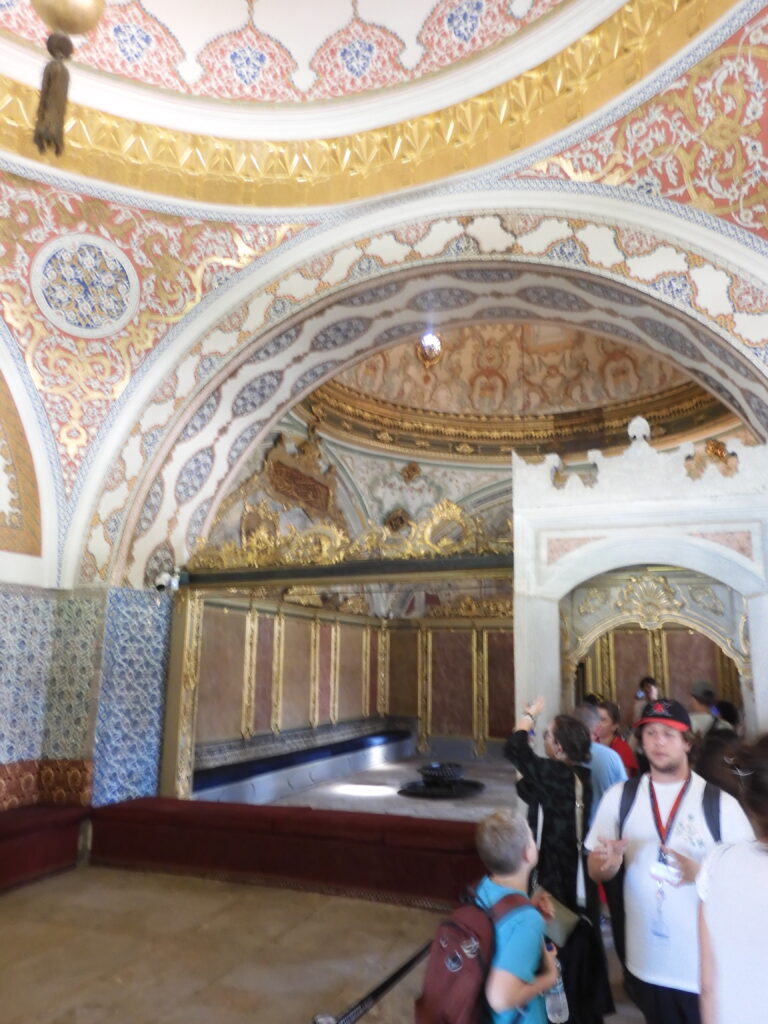
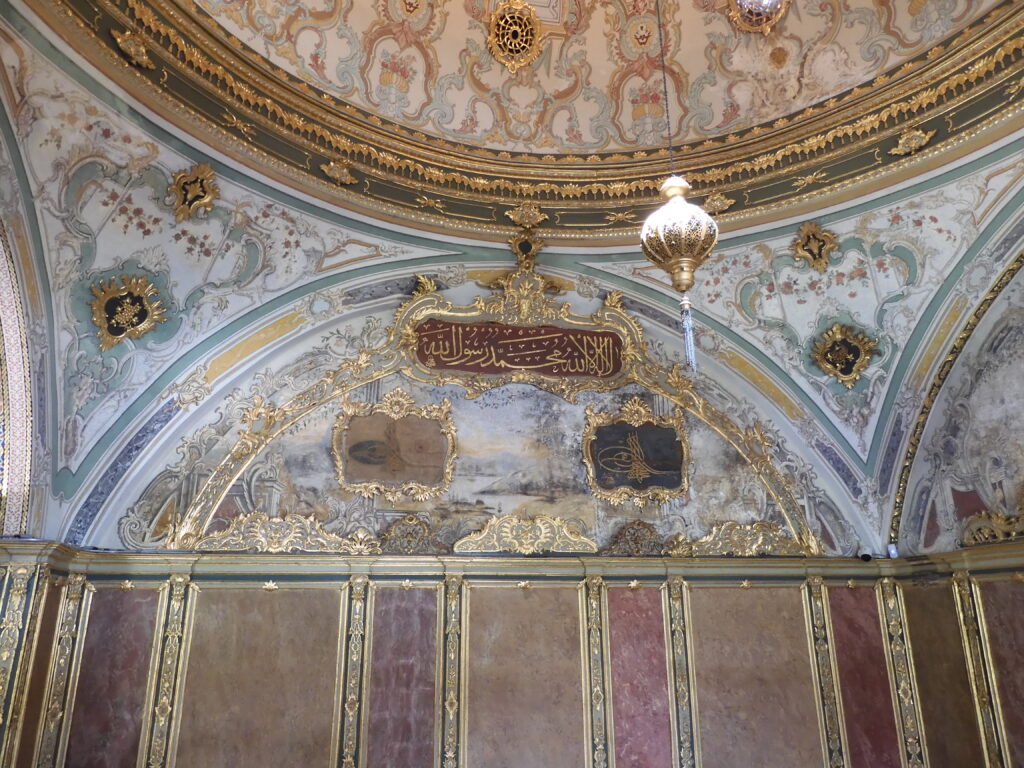
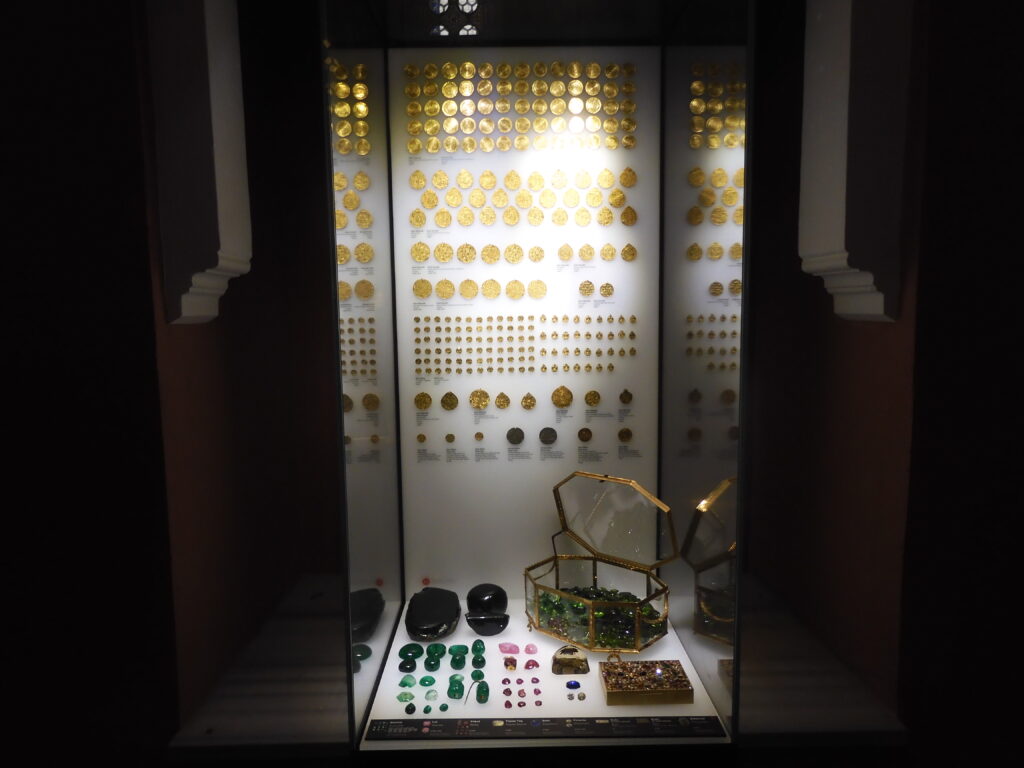
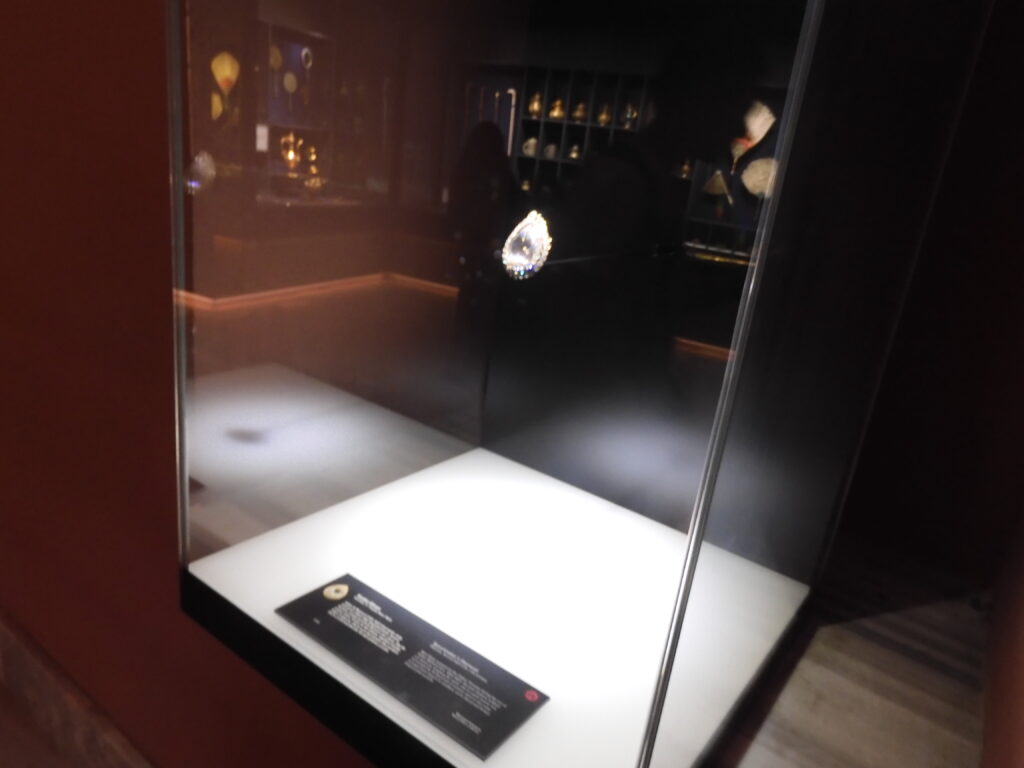

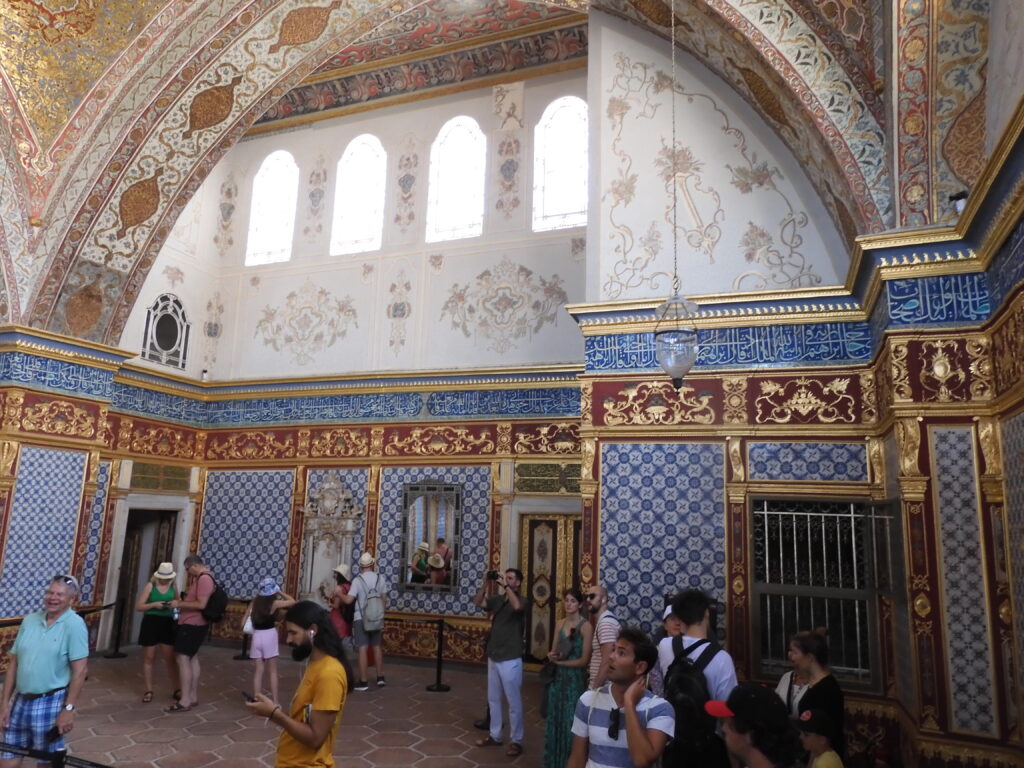

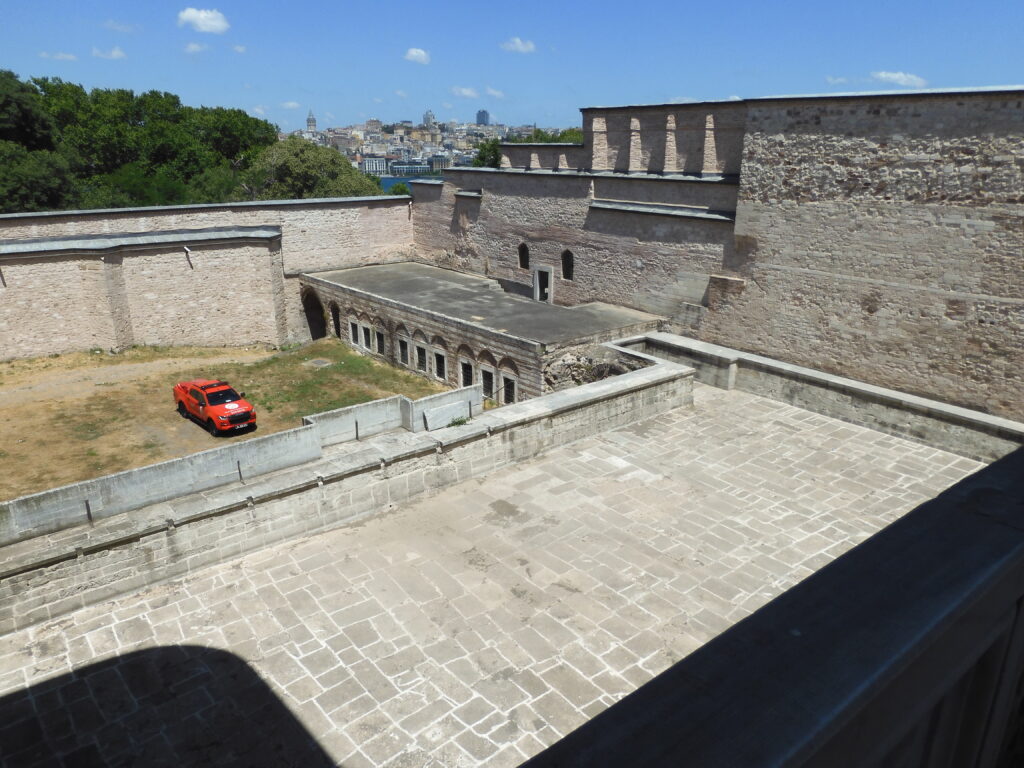
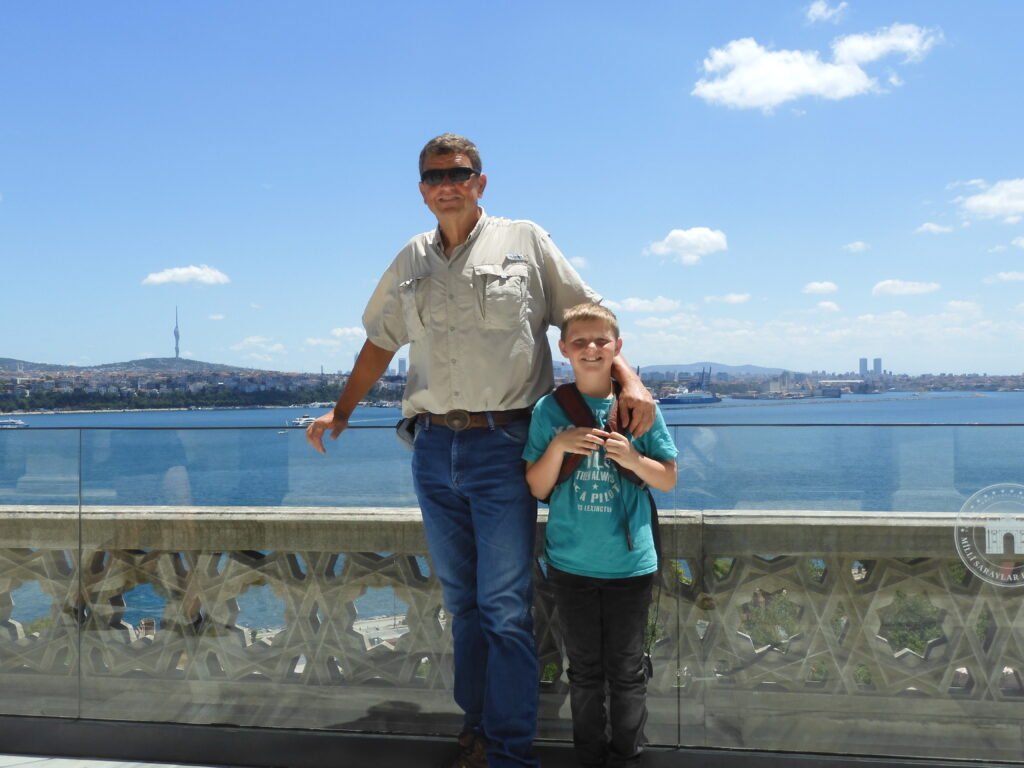
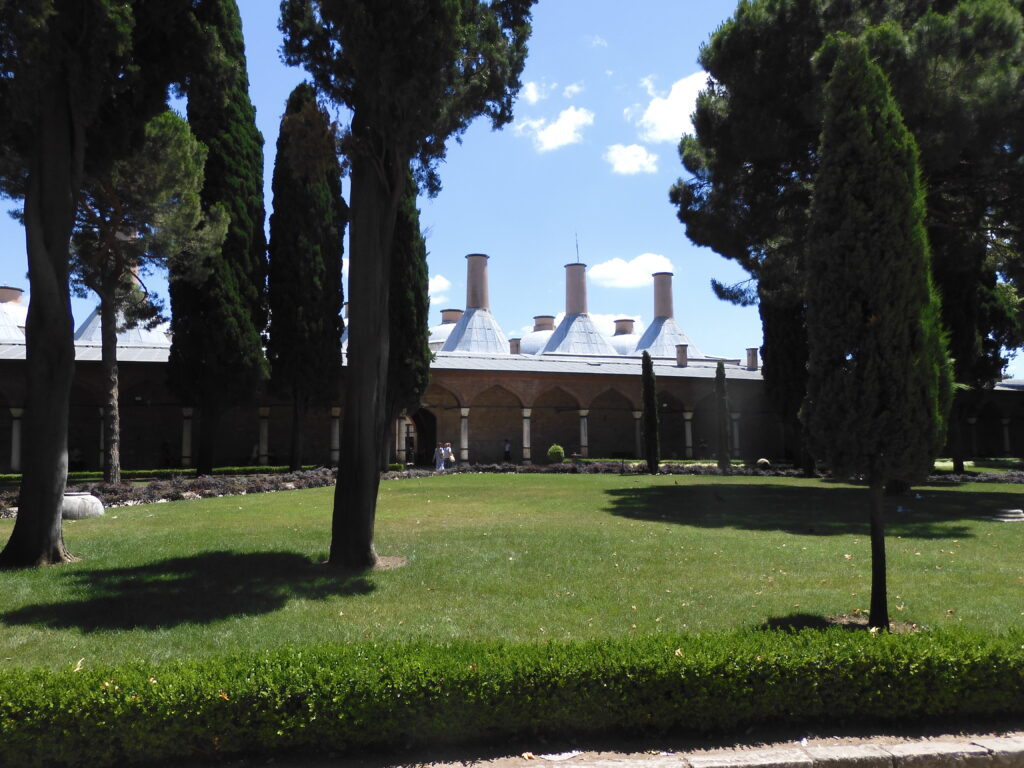


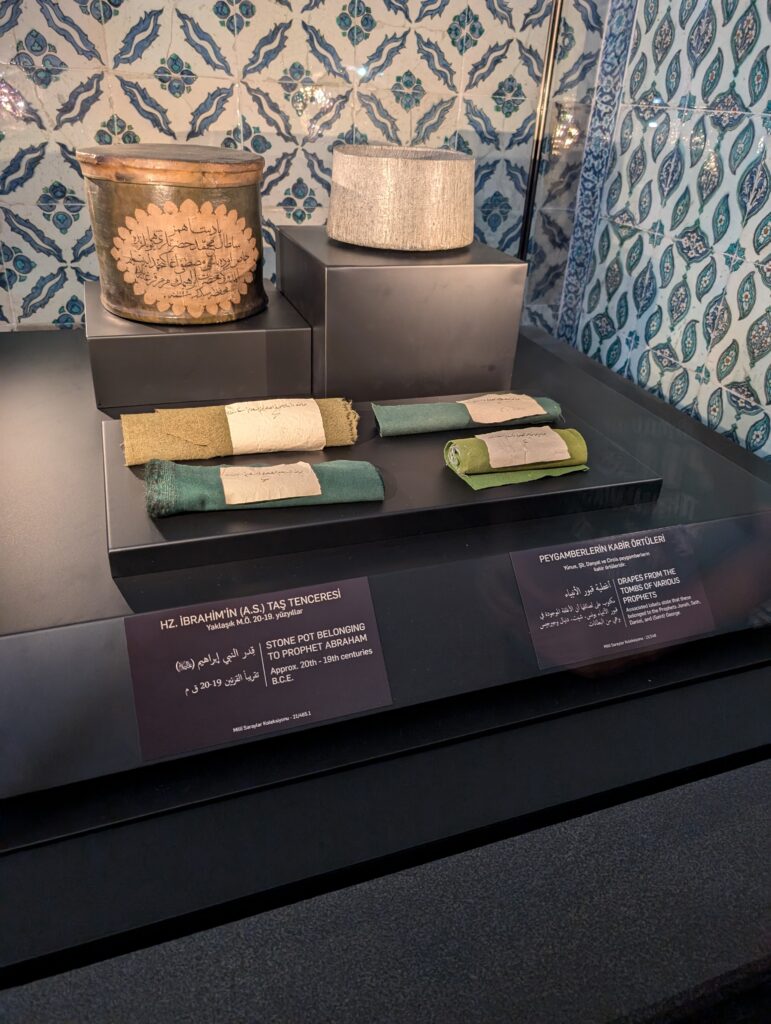
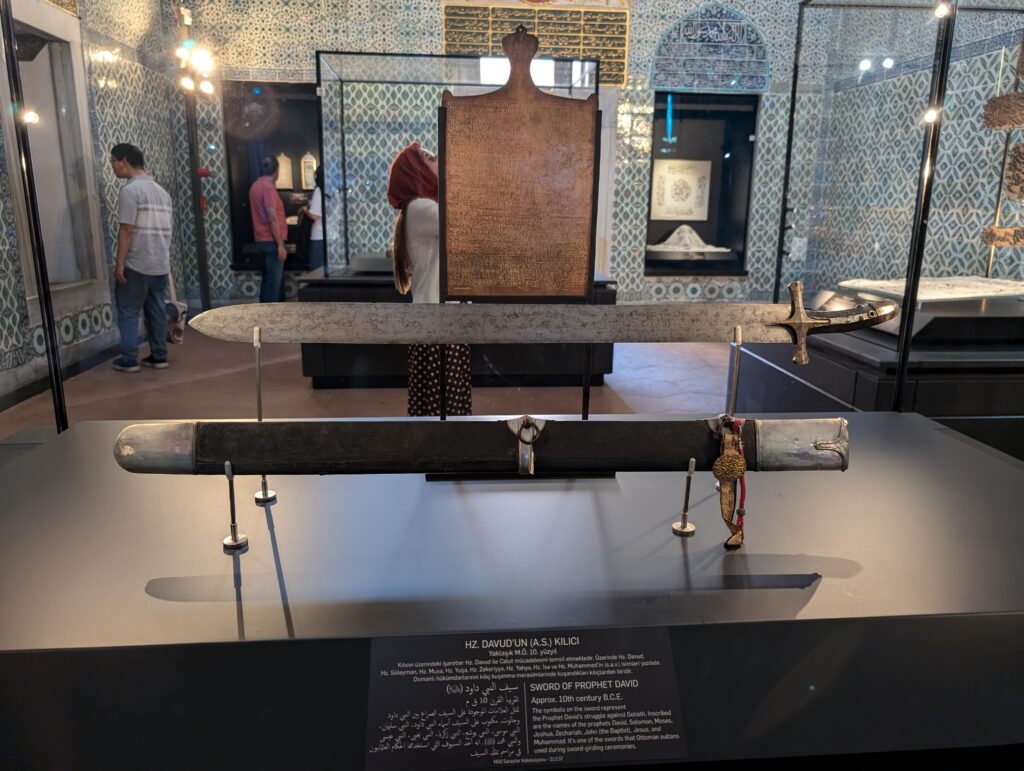
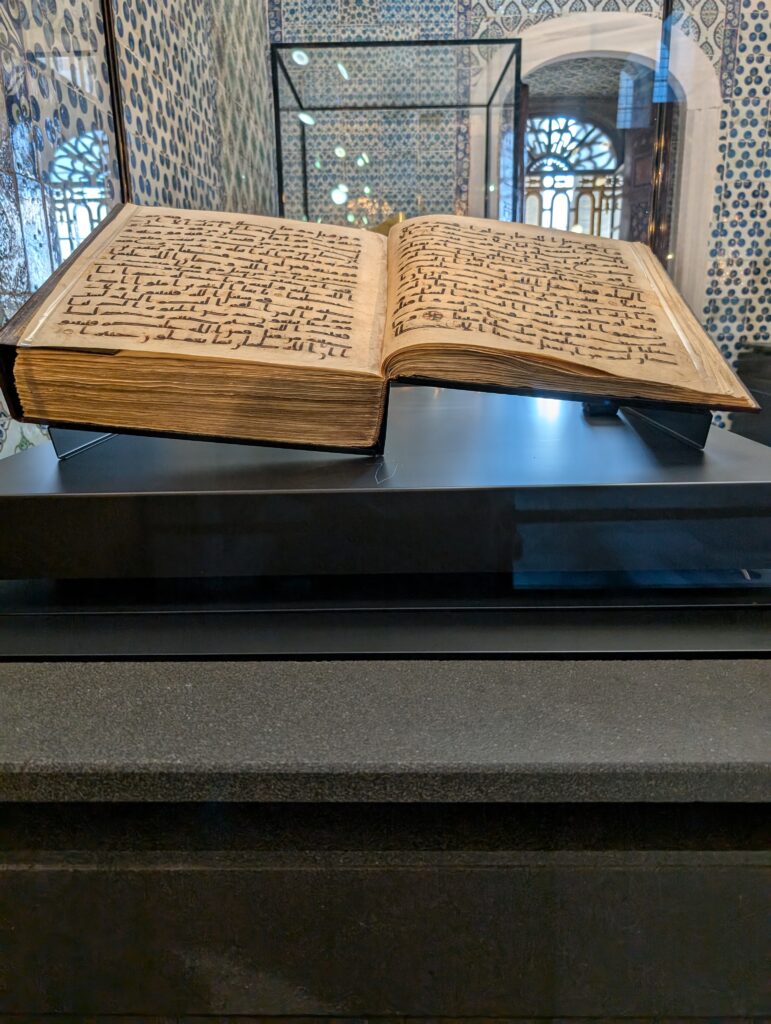

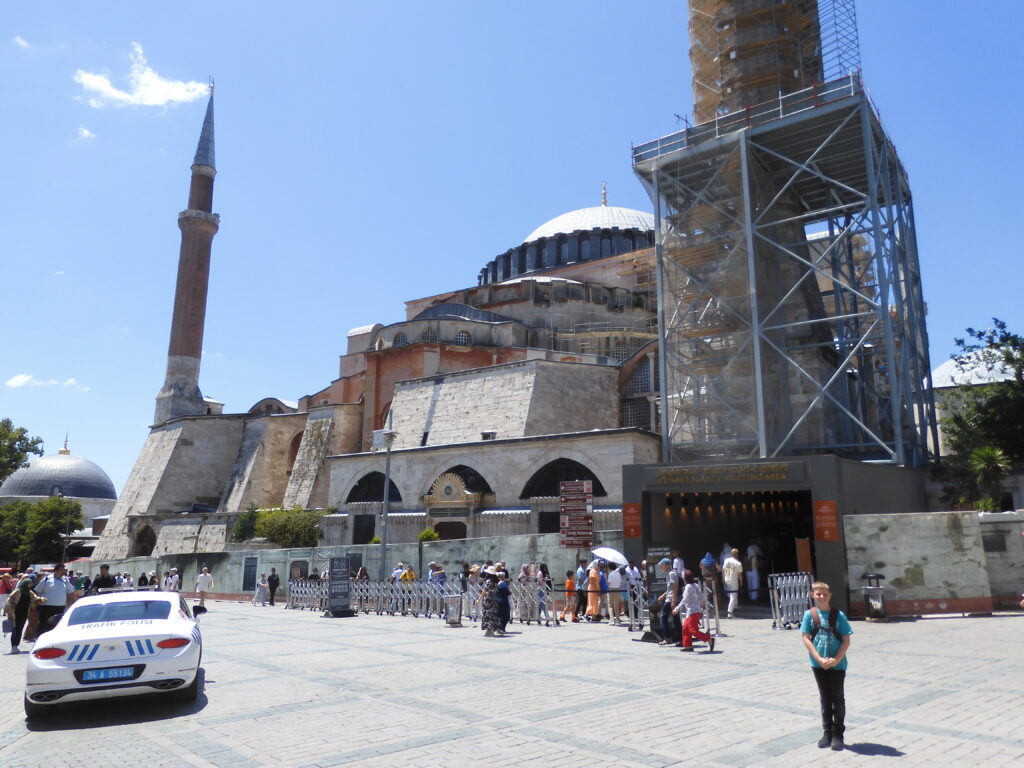



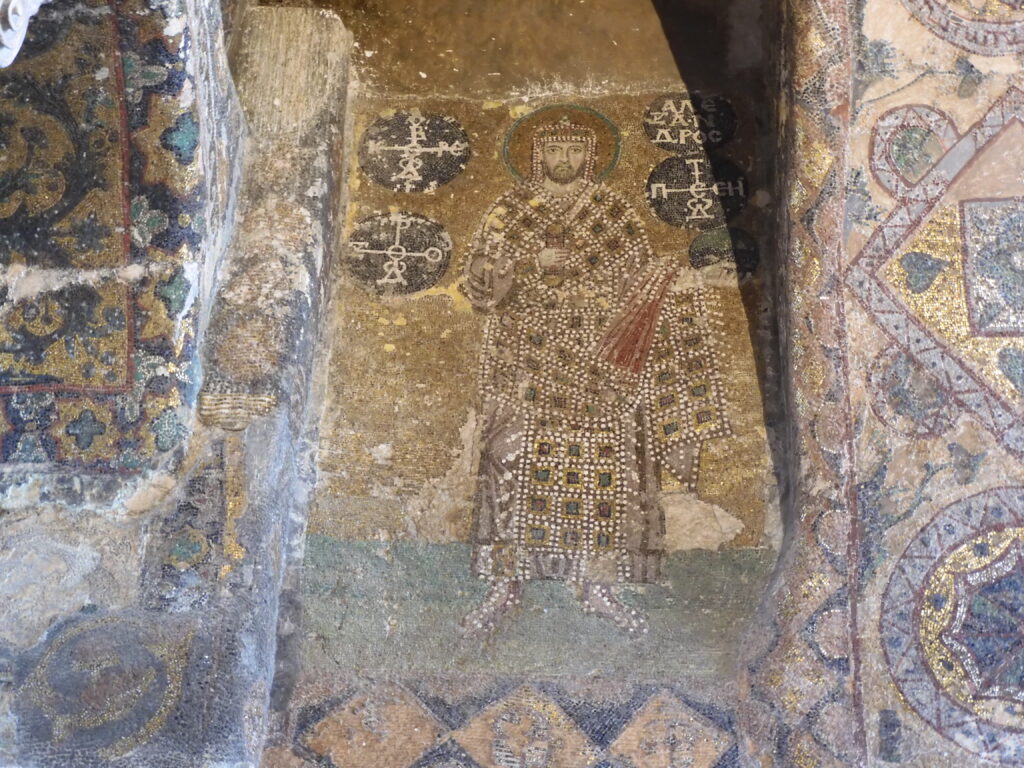
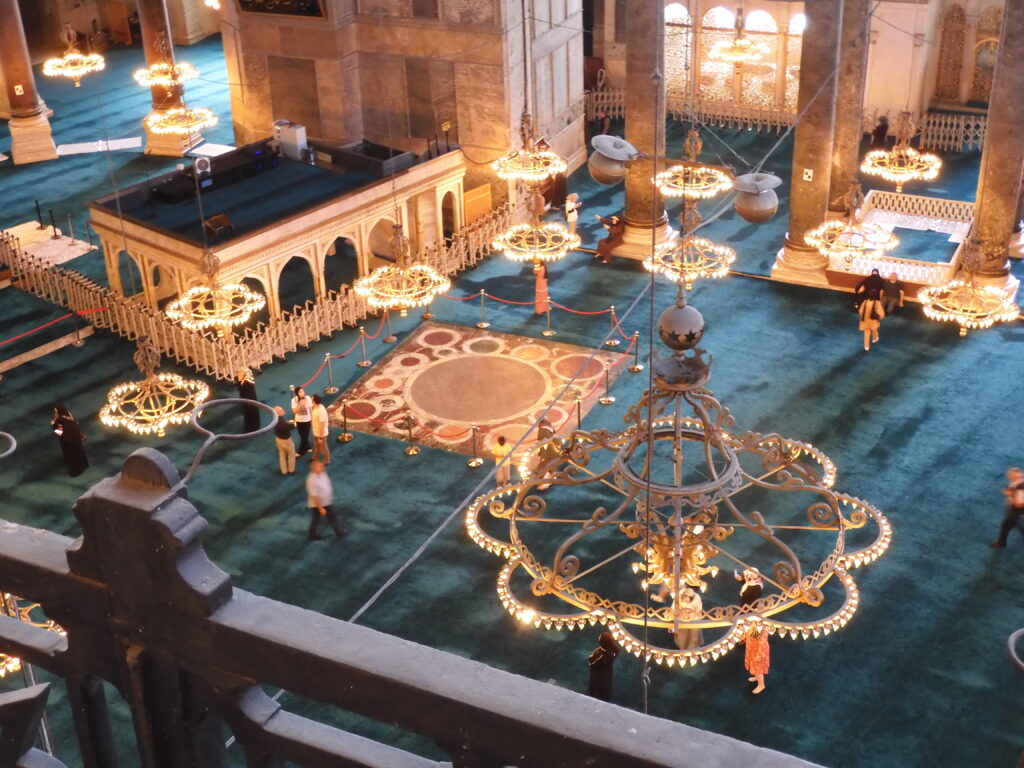


For most of its life, Hagia Sophia has been a church. It was built in the 530s and served as a church until 1453 when it was converted to a mosque. From 1935 until 2020 it was a museum before being turned back into a mosque. One nice thing about it being a mosque was that for a time, it was free to enter. Wanting to have their cake and eat it too, the Turks now allow Muslims to enter the mosque free of charge, but require anyone else to pay a fairly steep admission for which you are only allowed to access the second floor. Of course, I still shelled out the money to see one of the oldest surviving buildings in the world, and one of the most famous and important churches.
The building itself is massive. It was the largest indoor space in the world when it was constructed. It remained the largest cathedral in the world until the 16th century. Much of the building’s religious artwork had been covered up for Islamic worship services. Aside from the fact that the artwork itself was Christian, Islam contains very strict rules regarding iconography. Islamic artwork always contains geometric and floral patterns, but no clear depictions of people or animals, as they consider this idol worship. Christianity had its own strife over icons. In the eighth and ninth centuries, Byzantine churches hotly debated the issue and occasionally mobs stormed churches and destroyed Christian artwork. Certainly, Muslims defaced some of it, too, and much of it fell victim to the effects of time. Eventually, the Orthodox church concluded that two dimensional images were OK, but not three dimensional figures.
Many old European churches contain frescoes on the ceilings and walls. By far, though, mosaics are my favorite form of Christian artwork. These pieces – usually from late antiquity or the middle ages – are constructed from small pieces of colored stones. Sometimes, they are very obviously mosaics. Other times, the artist’s craft was so fine that at first the piece looks like a fresco, and only upon closer examination do you notice it was actually a mosaic. Several large sections of these mosaics have survived in Hagia Sophia. Aside from the massive dome and impressive architecture of the ancient building, the mosaics are worth paying to see. As I will share later, there are other churches with more and better mosaics. If you could only visit one church in old Constantinople, though, you would have to go to this sixth century colossus.
The Hagia Sophia admission also gets you into a neighboring interpretive museum. There were some nice artifacts in it. The highlight of this museum for us, though, was the engaging audio-visual explanation of the basic history and context of the building. I think Caleb absorbed a lot more of the basic story having seen this museum. It also had excellent air conditioning, which could not be said of the 6th century Hagia Sophia or the 15th century Topkapi Place.
The Blue Mosque is a much later building. It is similar in size to Hagia Sophia, and built to be a sort of rival structure. This is a bit odd, since Hagia Sophia was designated a mosque centuries before construction of the Blue Mosque was even a distant dream. They are separated only by a park that was once the old Constantinople hippodrome. It is a pretty building, and admission is free. We walked around it and looked, but not for as long as we spent at Hagia Sophia or Topkapi.
As I mentioned earlier, many Roman artifacts have not survived time or the Ottomans. There are a few, however, in the park between Hagia Sophia and the Blue Mosque. When Constantine moved the Roman Imperial capital to Constantinople (which he called “New Rome”), he moved many landmark objects here to make it look like a great capital of antiquity. Bits and pieces of an old chariot racing facility can be seen here. As in Rome, the course proceeded around a pair of imported obelisks. The base of one of these remains, as does the entirety of one that was reconstructed in the 10th century after damage. A giant serpent statue was also present in this square. It apparently still had its head into the 19th century, but now is missing the top. The base and shaft of this monument are still there. Although they are hard to recognize, you can also find some spectator seating. Lastly on our first full day in Istanbul, we headed across the Golden Horn to Karakoy for some Iskander, the most popular Turkish meat dish. We rode a ferry back to Sultanahmet, which was part of the city transportation system. It was a big first day, but there was much more to do.
First on our agenda Tuesday was Galata Tower. Before it was severely curtailed by the Ottoman Empire following the fall of Constantinople in 1453, the chief means of trade with the Far East was the old Silk Roads. Traders making the brutal trek from Europe to China came as far as they could by sea – usually to the Eastern coast of the Black Sea or the Mediterranean before making the remainder of the journey overland. The Black Sea route led traders through Constantinople. In the late medieval and Renaissance periods, the Italian city states were big players in this trade.
Genoans built their own settlement on the north side of the Golden Horn, complete with architecture, street patterns and other cultural elements representative of Genoa. Since there was much to protect here, the city had a wall and a tower. The current tower was built in 1348 at the highest point on the Genoese wall. After the Ottomans captured the city, the walled neighborhood was used as a sort of dumping zone for foreigners and non-Muslims. These people were allowed to trade or worship here, but were confined to doing these things in a limited space and treated as second class citizens everywhere else (though this is glossed over in the museum presentation).
I don’t know that most people go to this, another surprisingly pricey museum, for its historical interpretation, however. Most go for the view, which is spectacular, and Galata Tower has a selfie line second only to the Mona Lisa in the Louvre on free night. The tower is on a lofty hill anyway, but then rises another 200 feet to allow stunning vistas in every direction. The museum briefly explains Galata’s purpose in the Byzantine and then Ottoman Empires and has some interesting architectural and cultural artifacts. The most surprising item I saw on display was a piece of the old sea chain. Constantinople withstood over thirty sieges in its history. This was partly because of the Theodosian Walls I will discuss later. It was also partly because the Golden Horn (the major inlet on the north side of old Constantinople) was protected by a giant chain across the sea that stretched from the peninsula of the old city to the Galata Tower. A key component of the city’s defenses, this barrier was only overcome on three occasions over the centuries. In the 10th century, the Rus hauled their longboats out of the water and put them back in inside the chain, but were defeated by the Byzantines using Greek Fire, an ancient flammable tar like substance the recipe for which has been lost over time. When the Fourth Crusaders sacked Constantinople in 1204, they got through by creating a special ship to ram through the chain. After failing to break the chain by the crusaders’ method, Mehmed the Conqueror used the Rus technique and hauled his fleet overland via greased logs and put them back in on the Constantinople side of the chain, setting the stage for the eventual capture of the city. Knowing the historical importance of this chain, it was a big deal for me to see a piece of it in person.
(Continued)

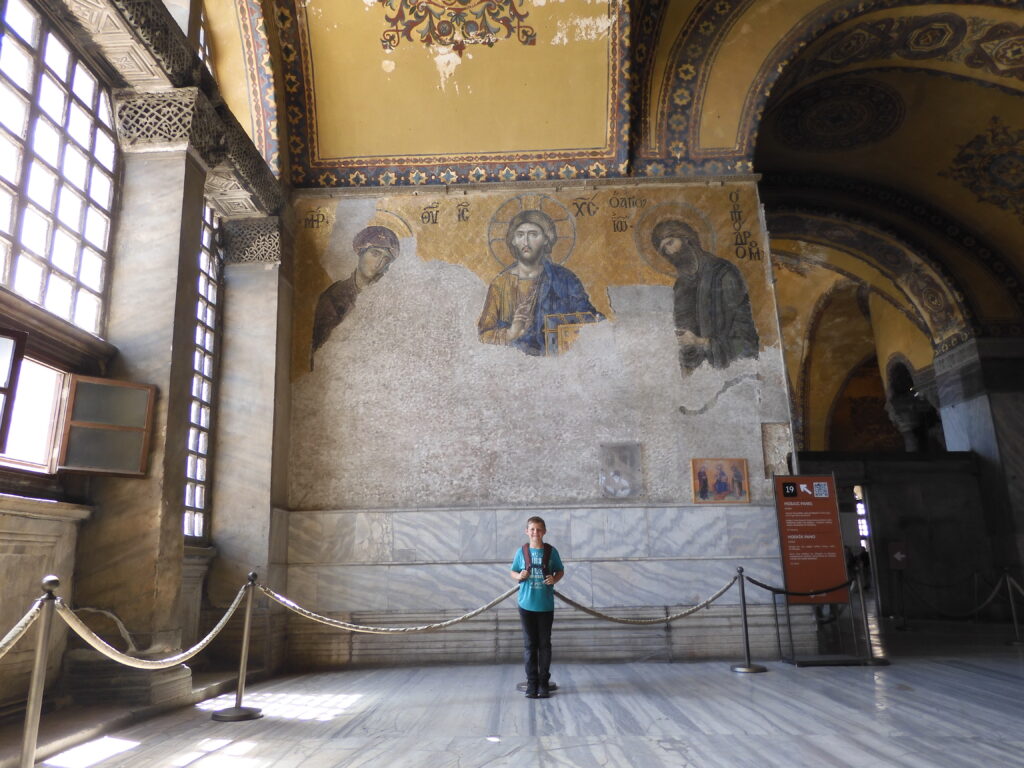
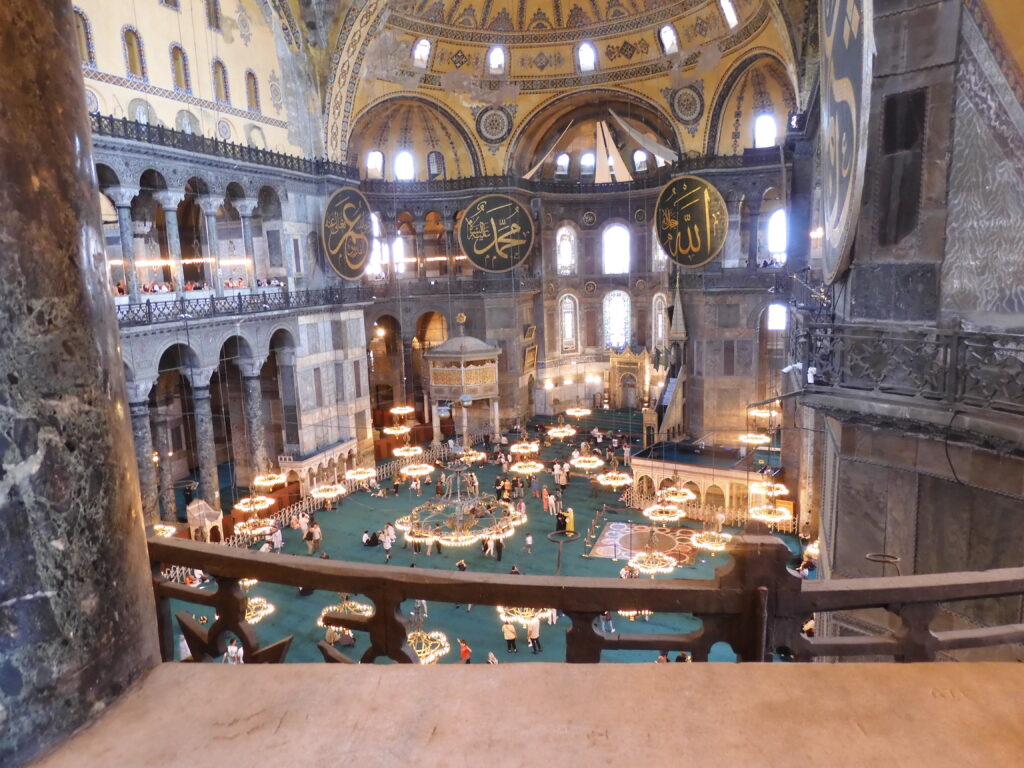
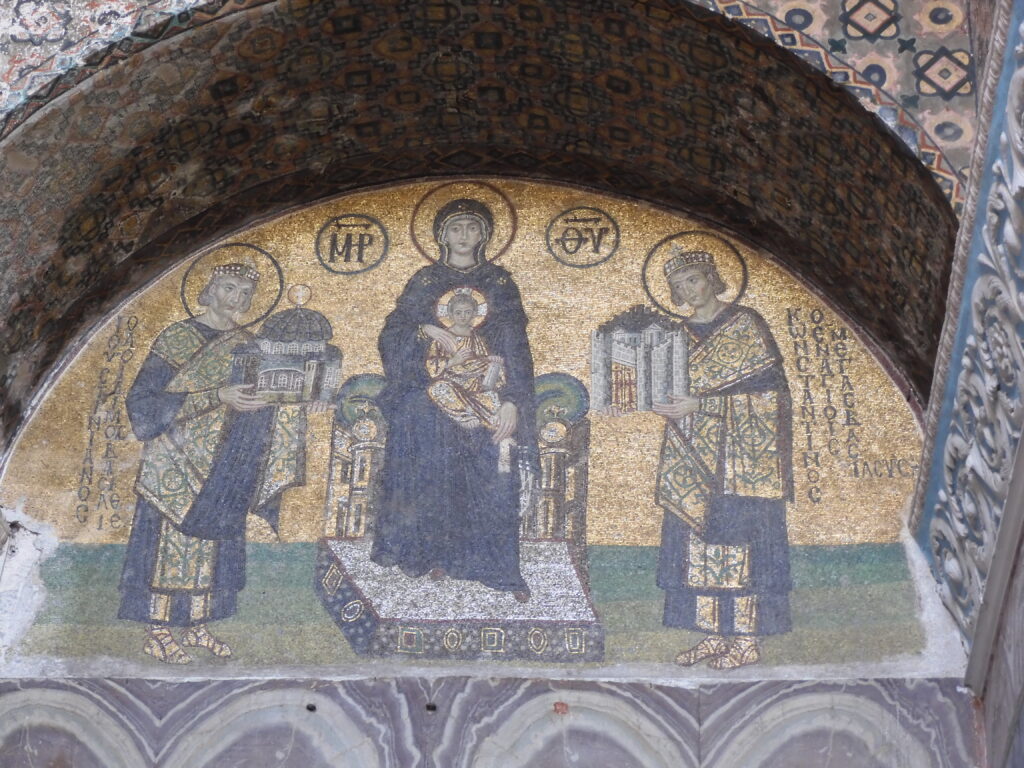
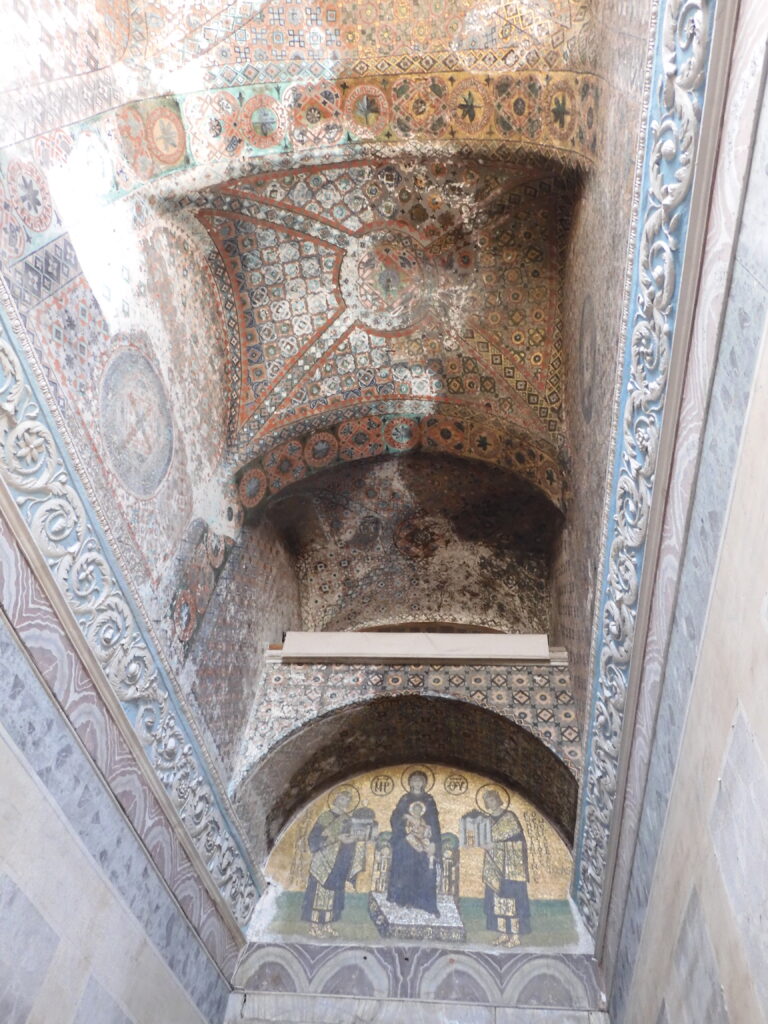



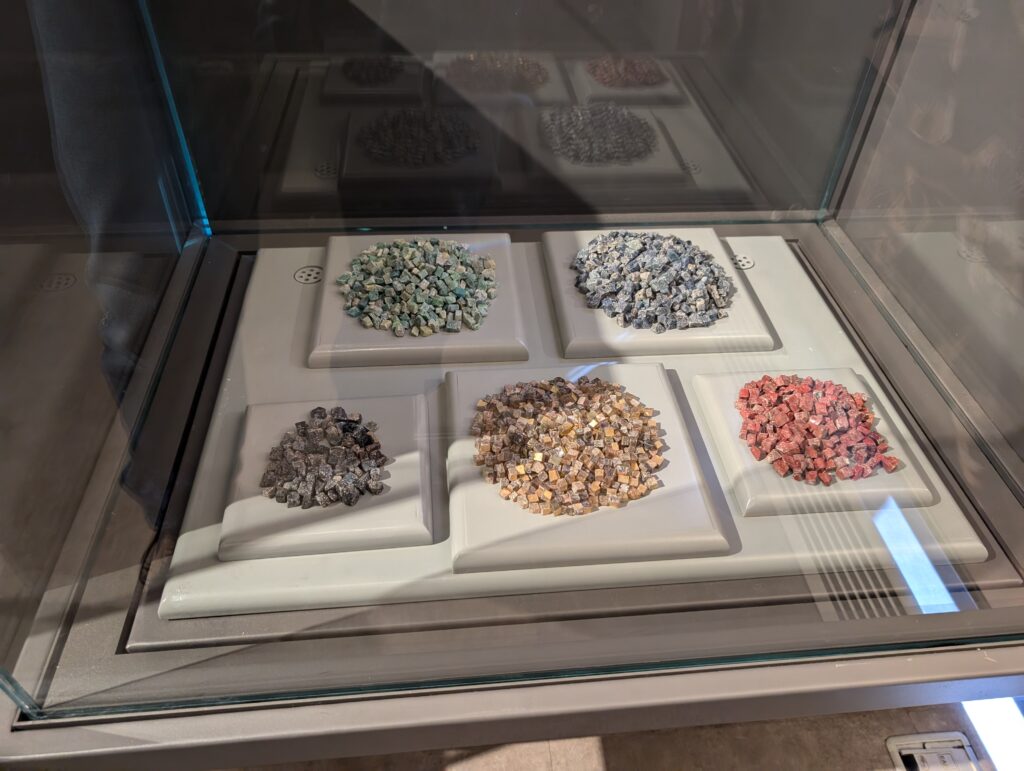
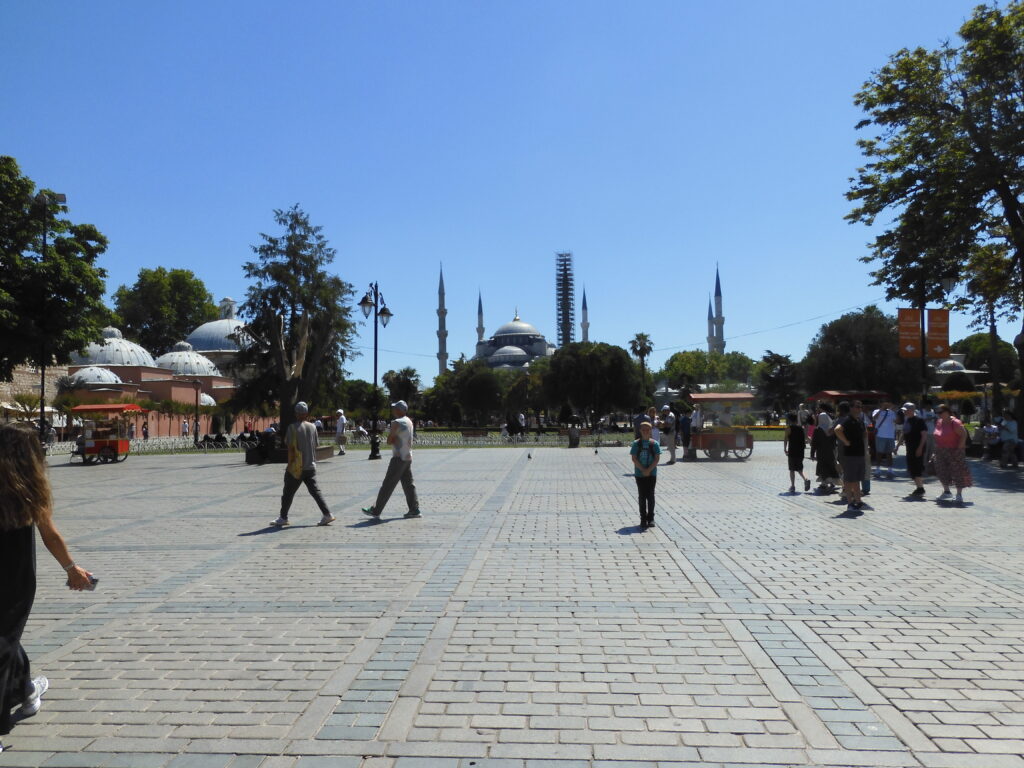
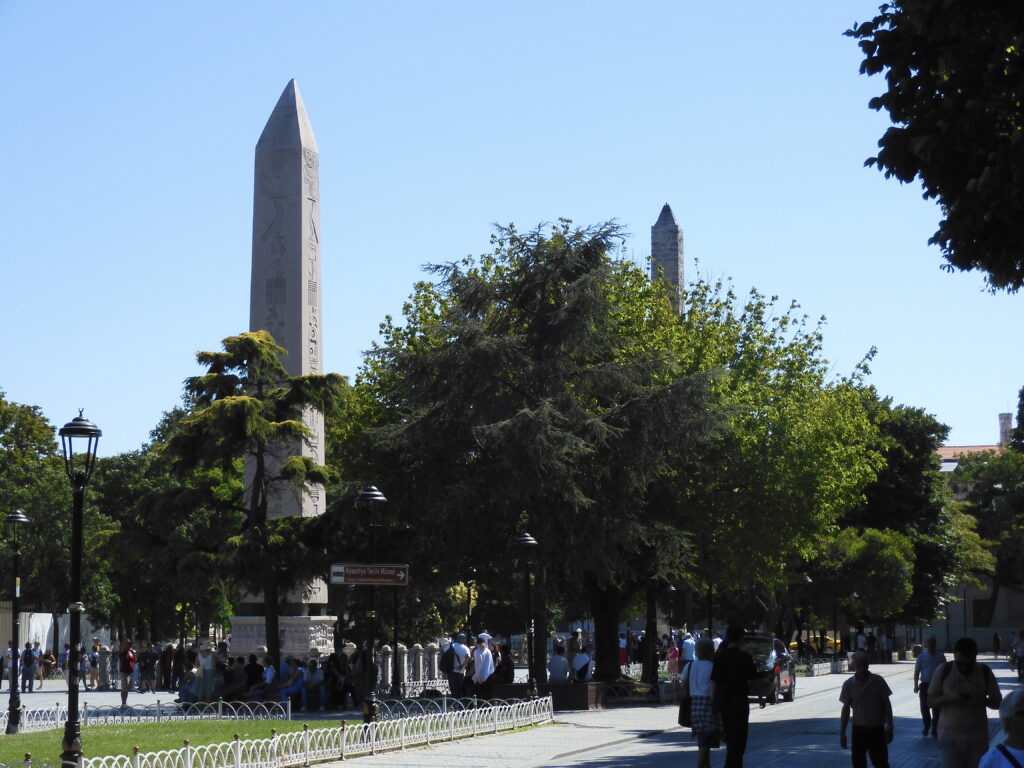
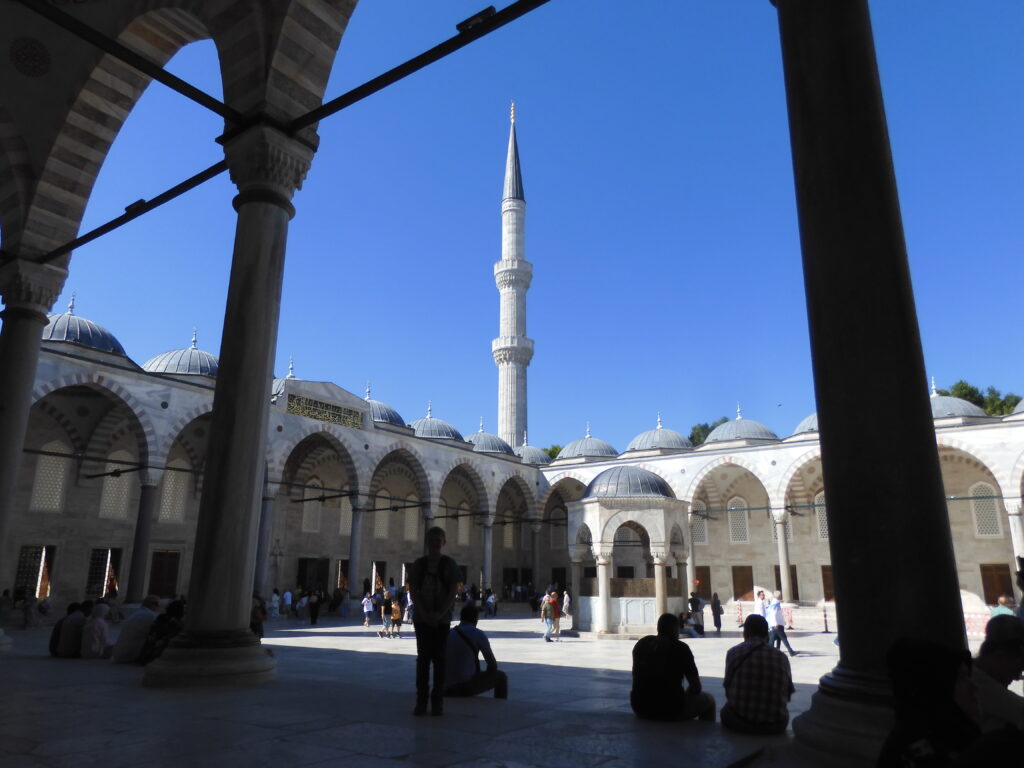
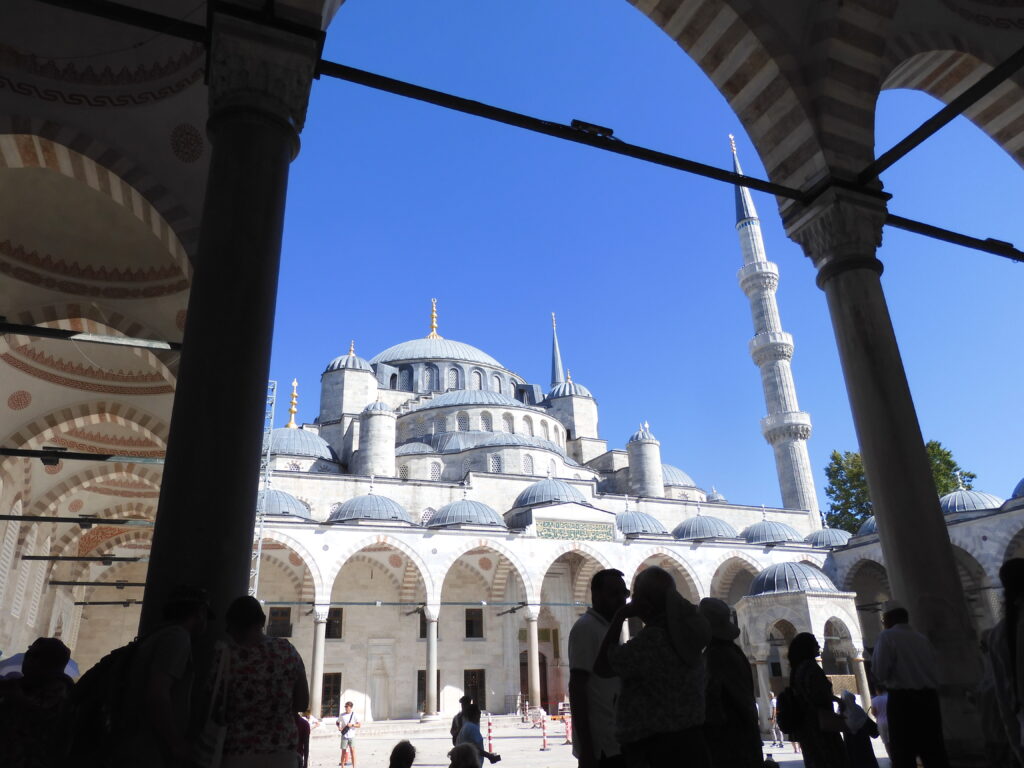
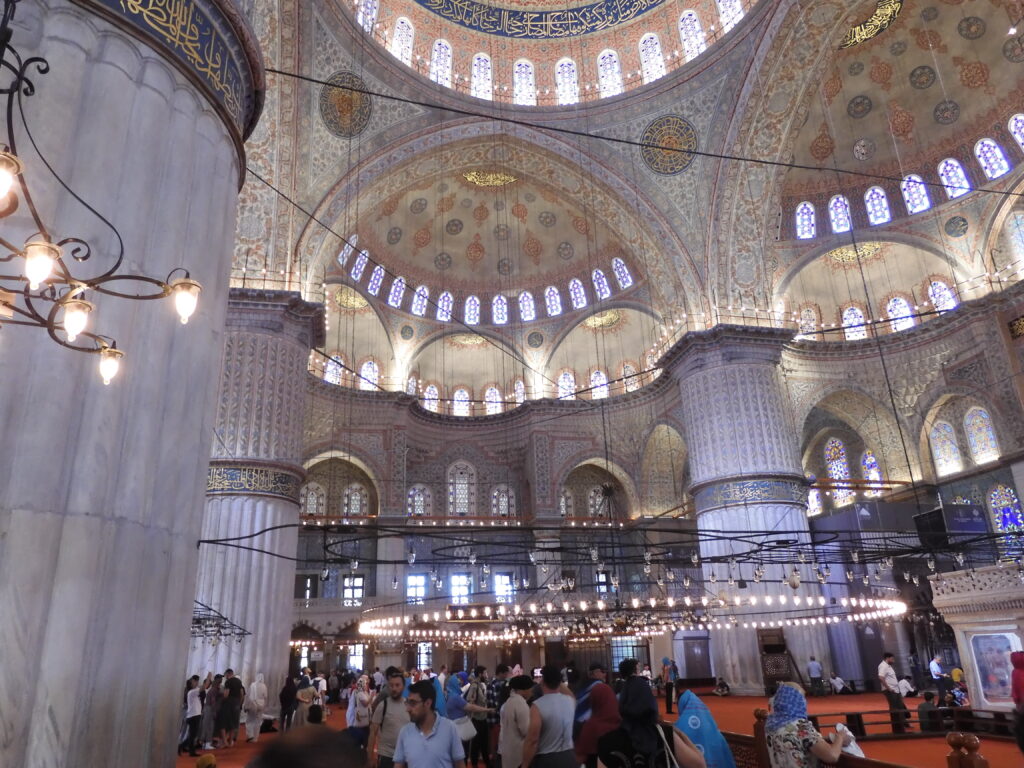

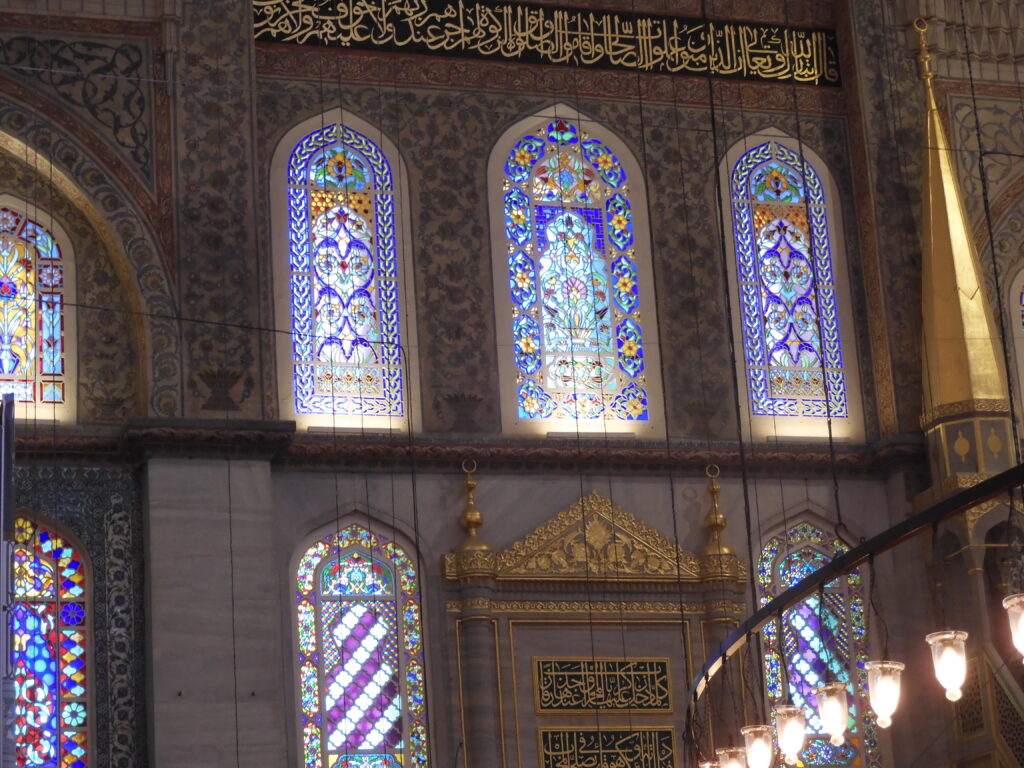
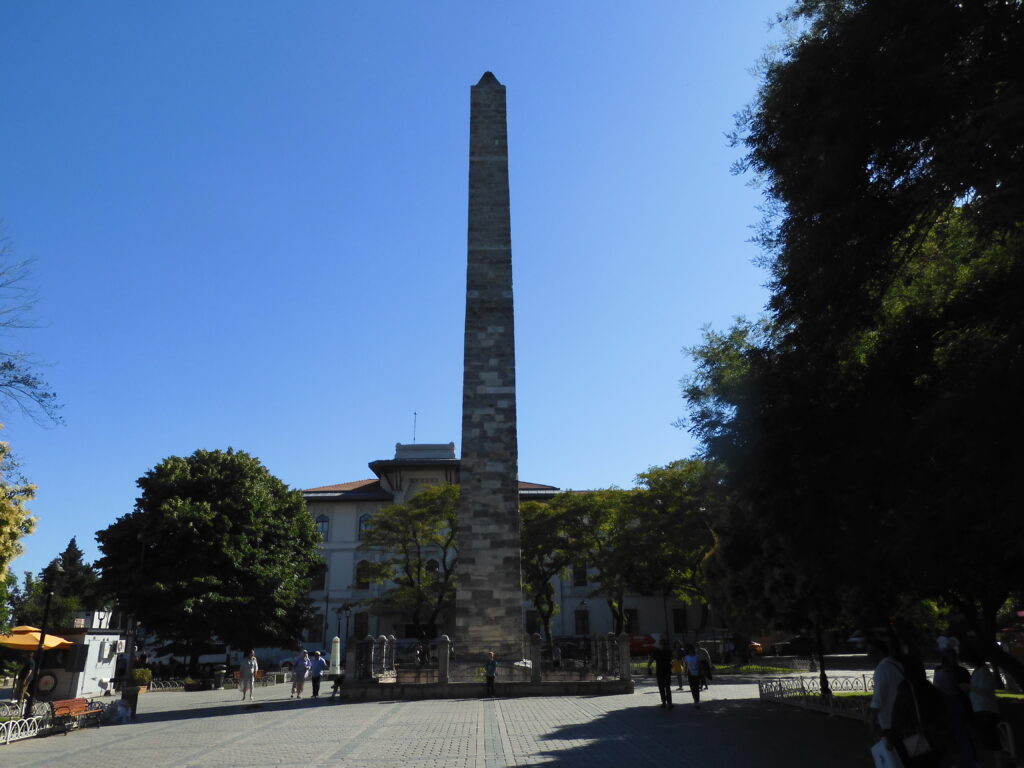
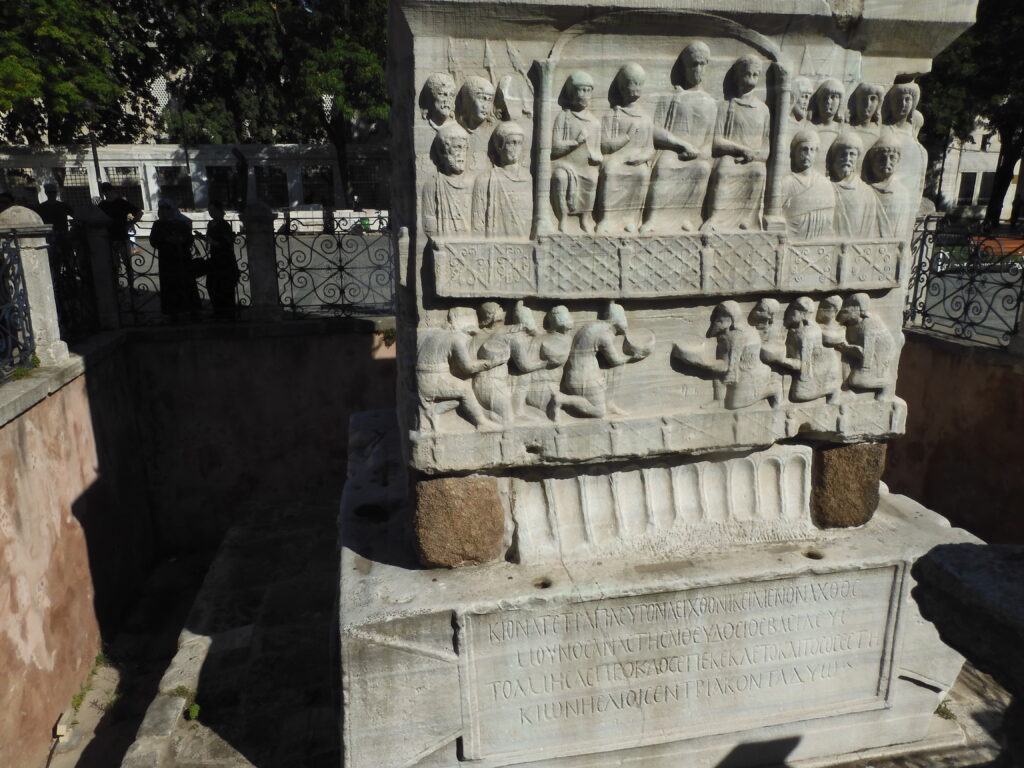

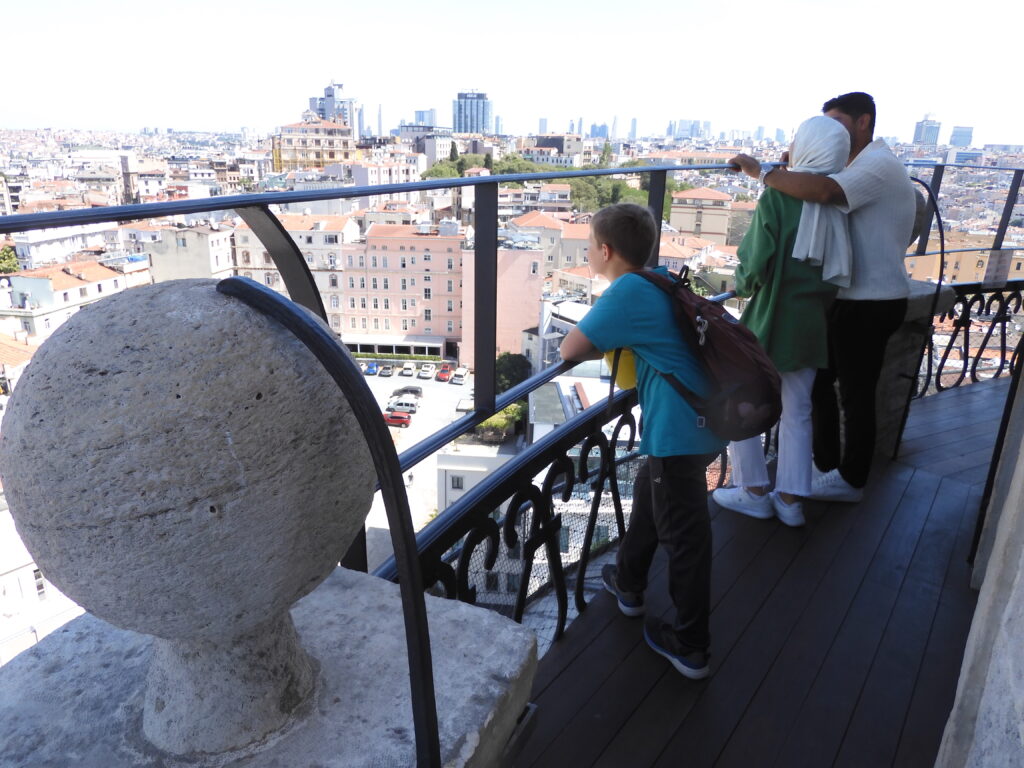
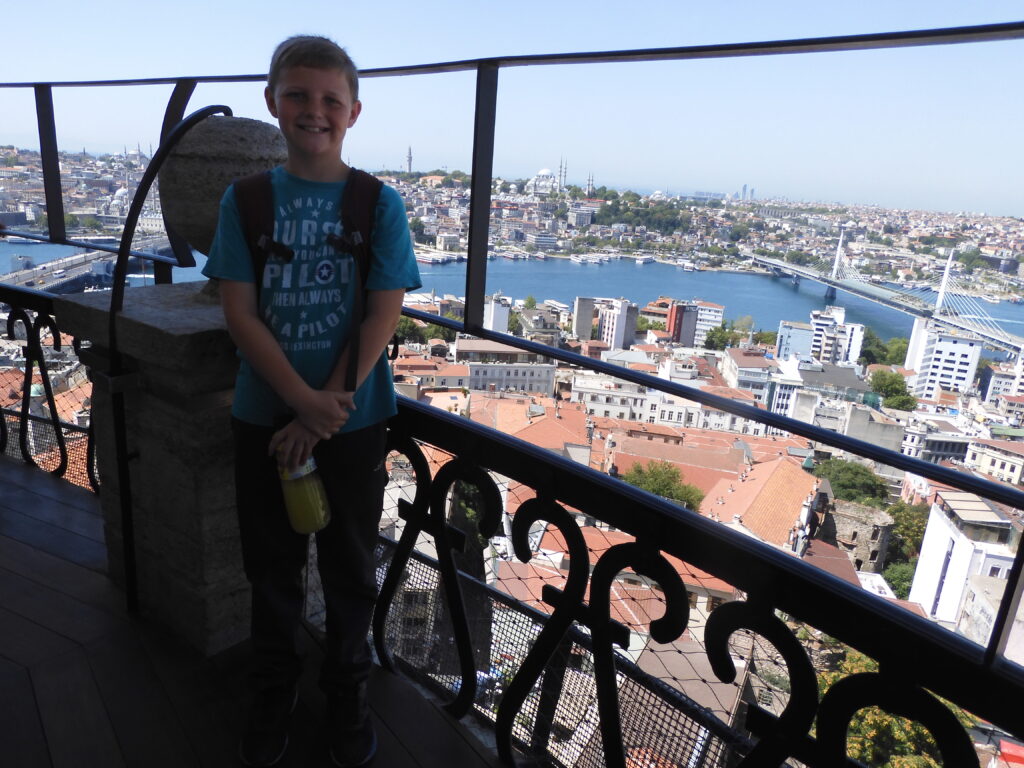
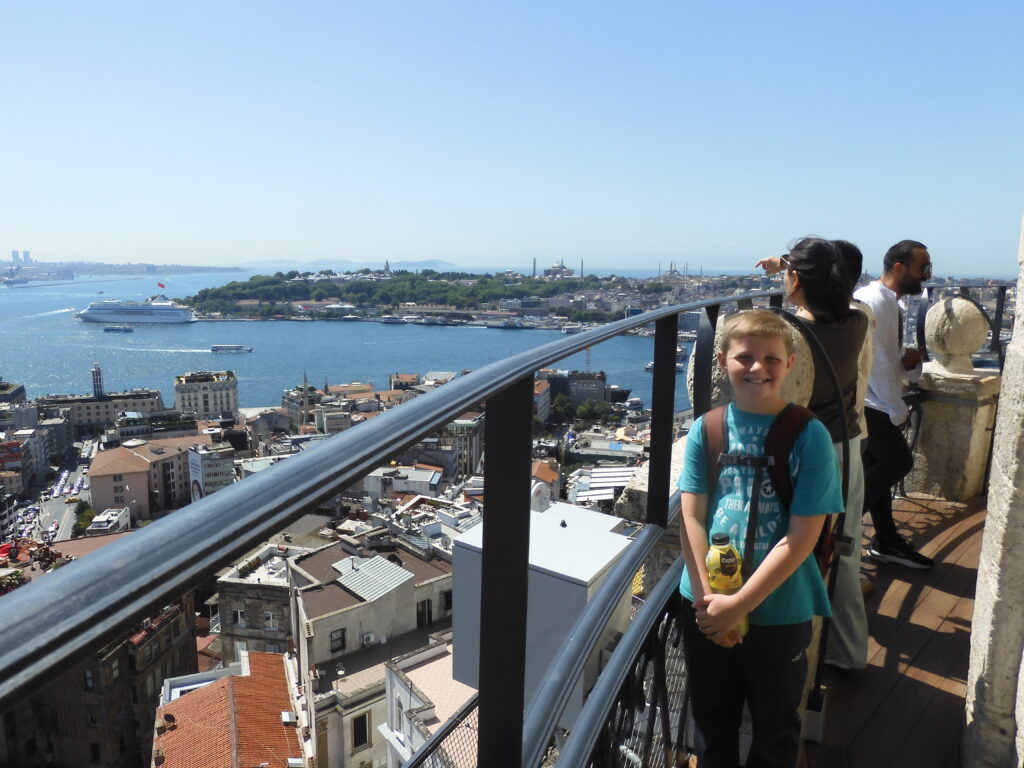




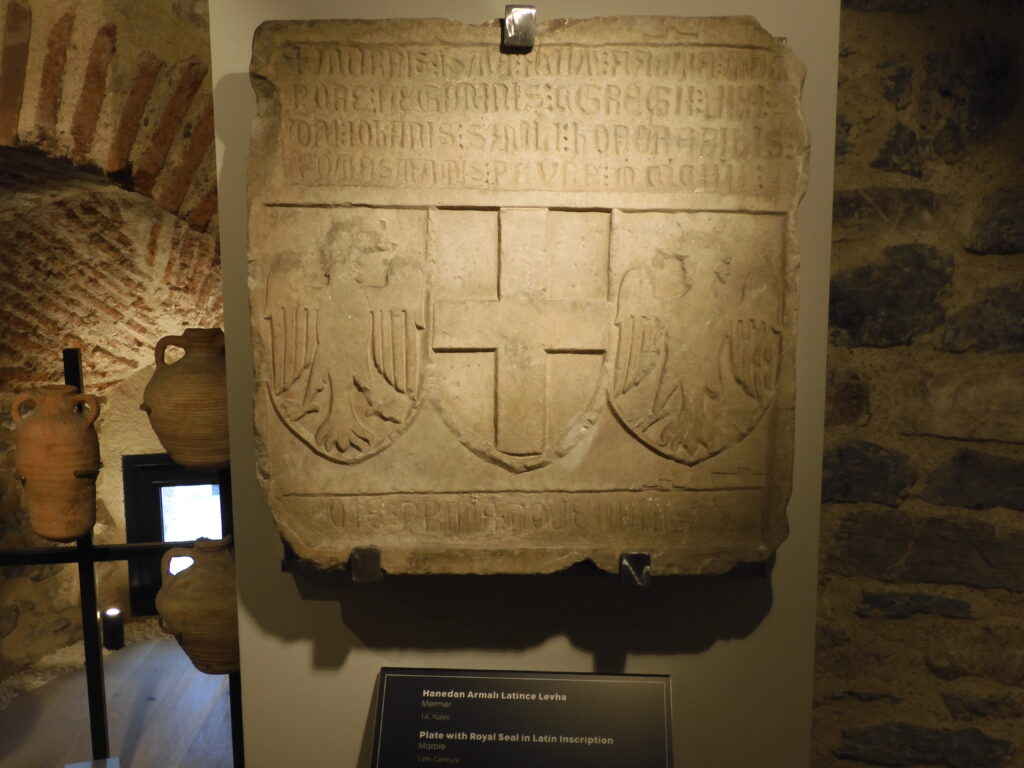
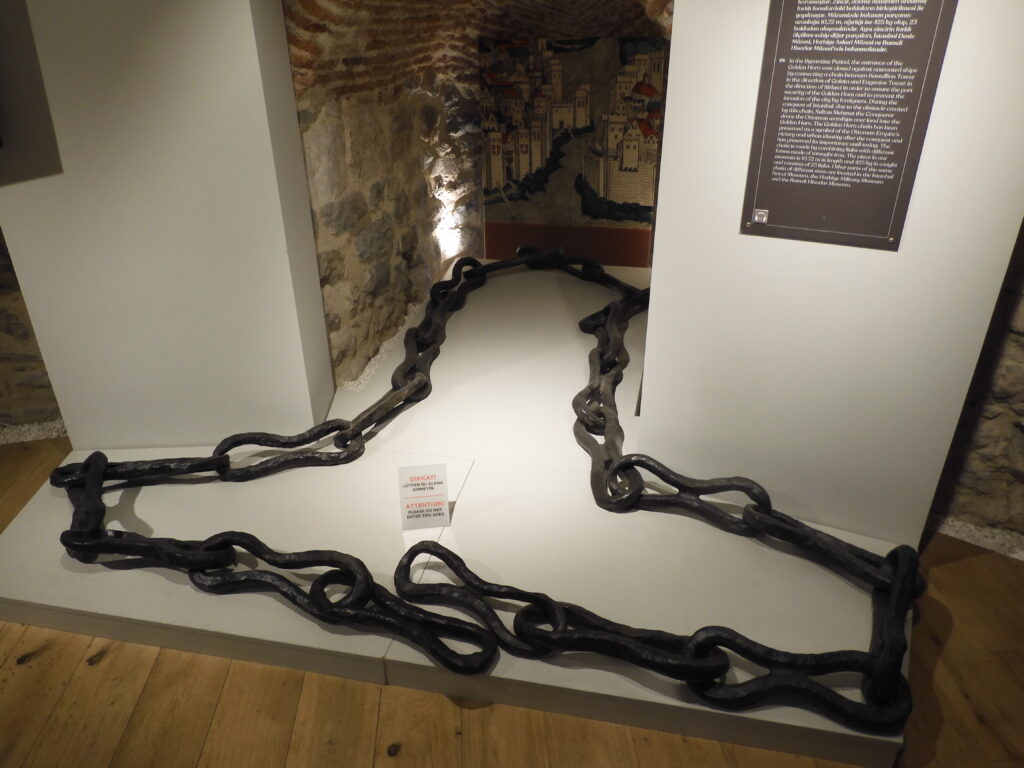
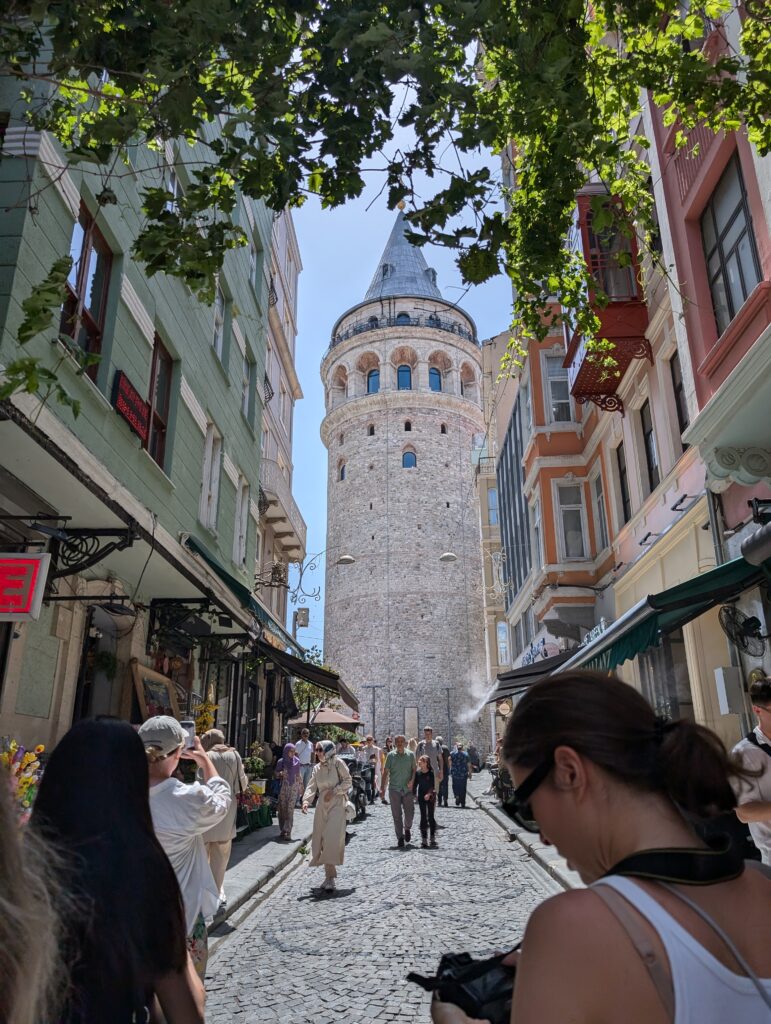
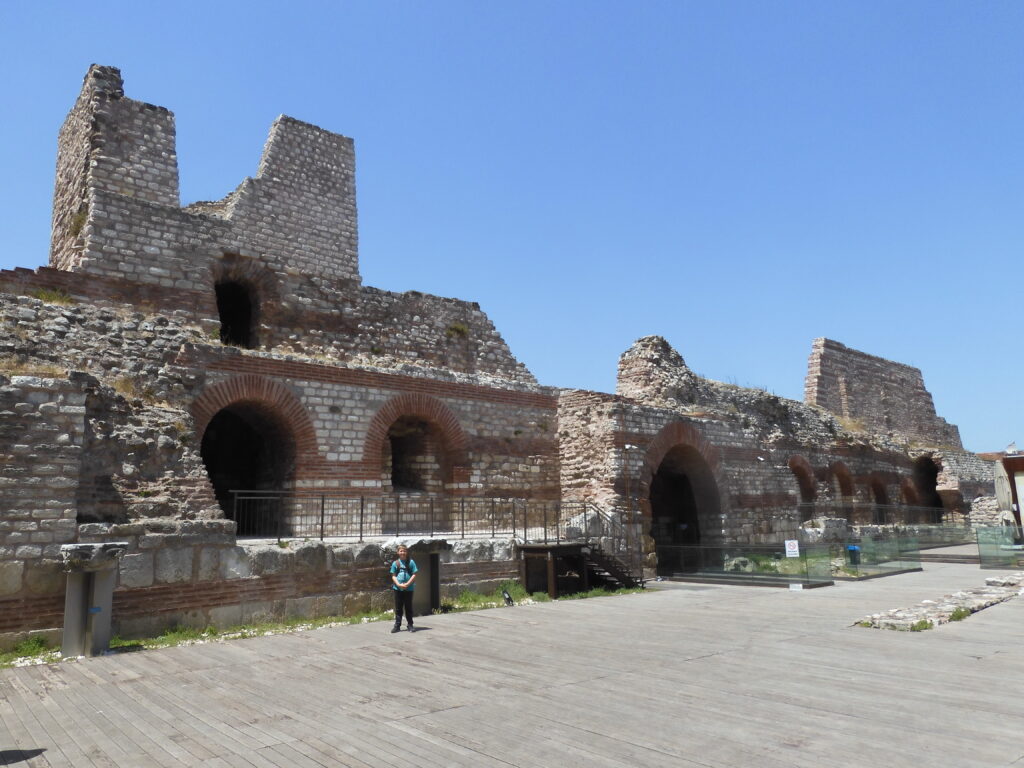
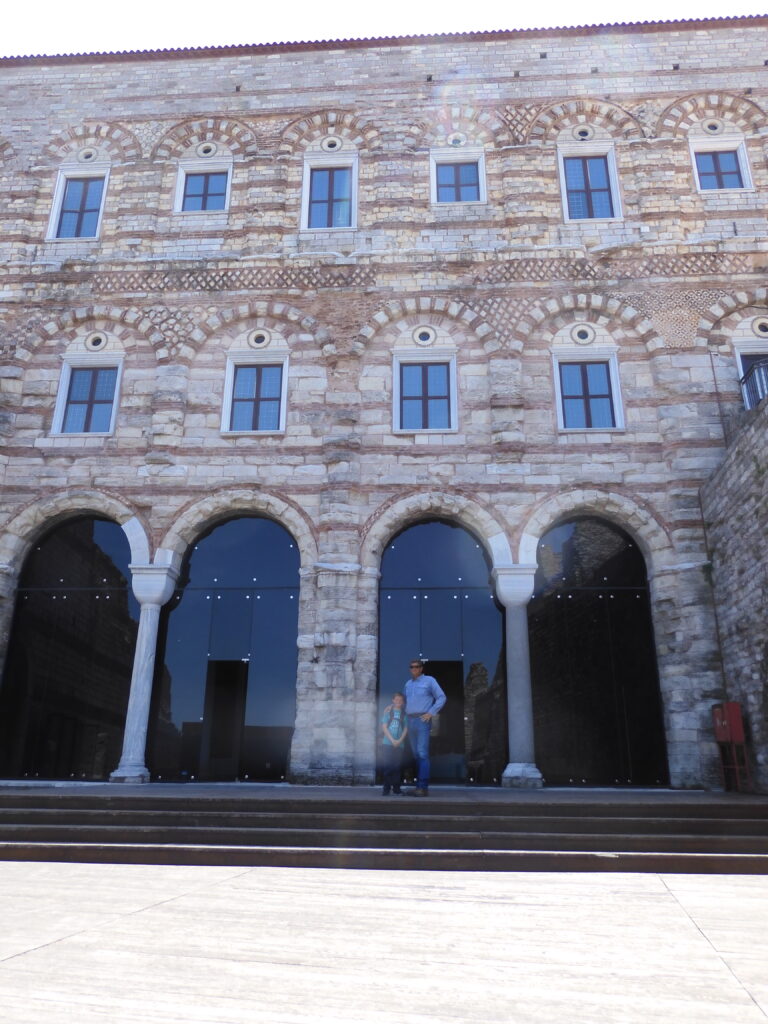
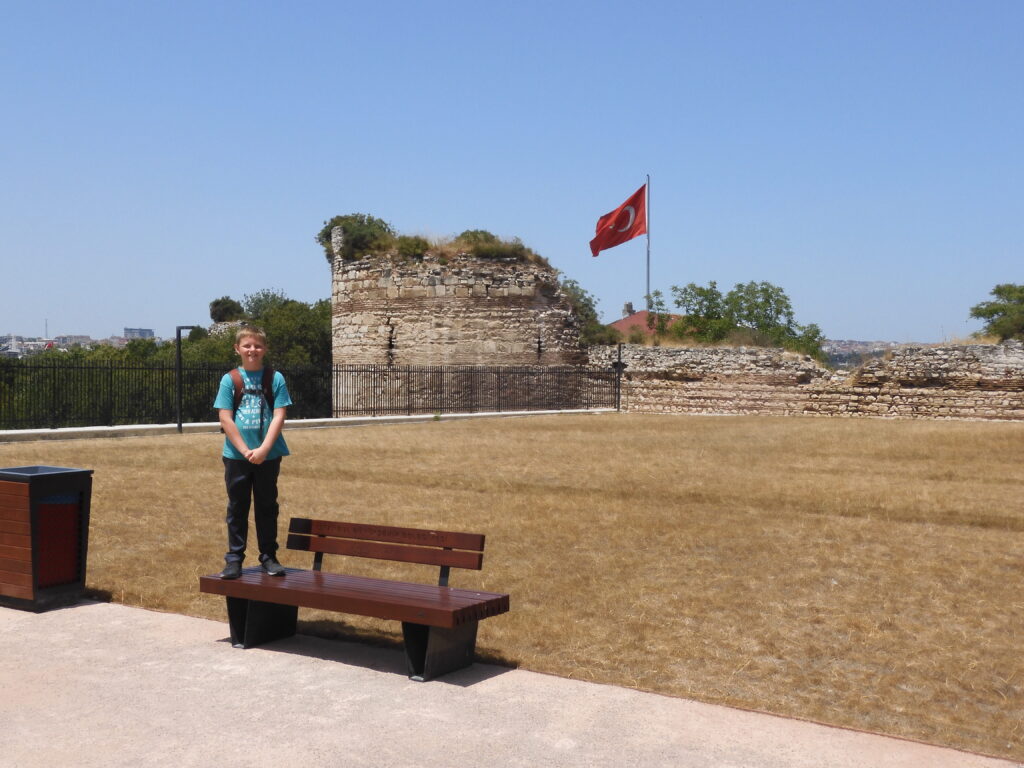
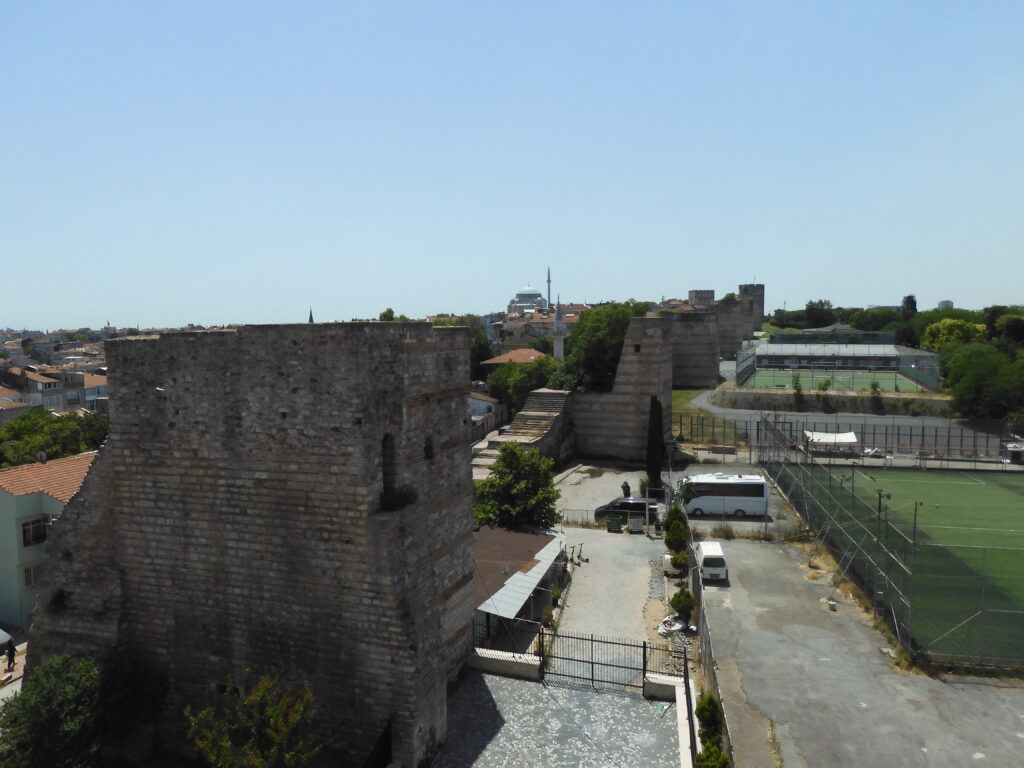
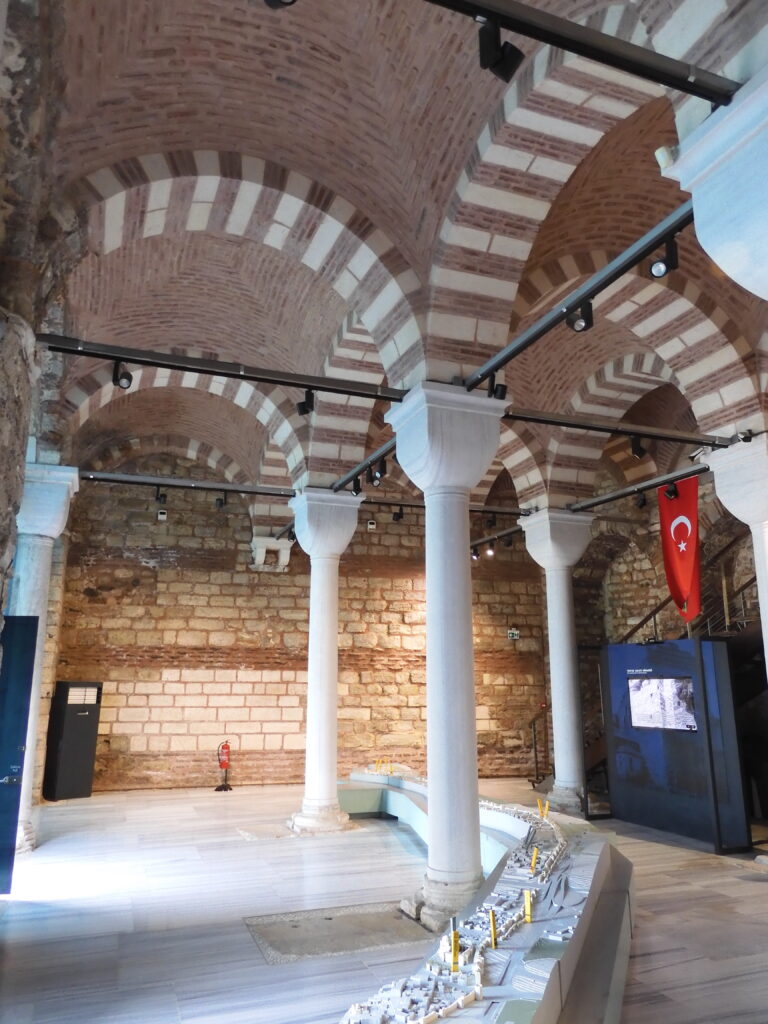
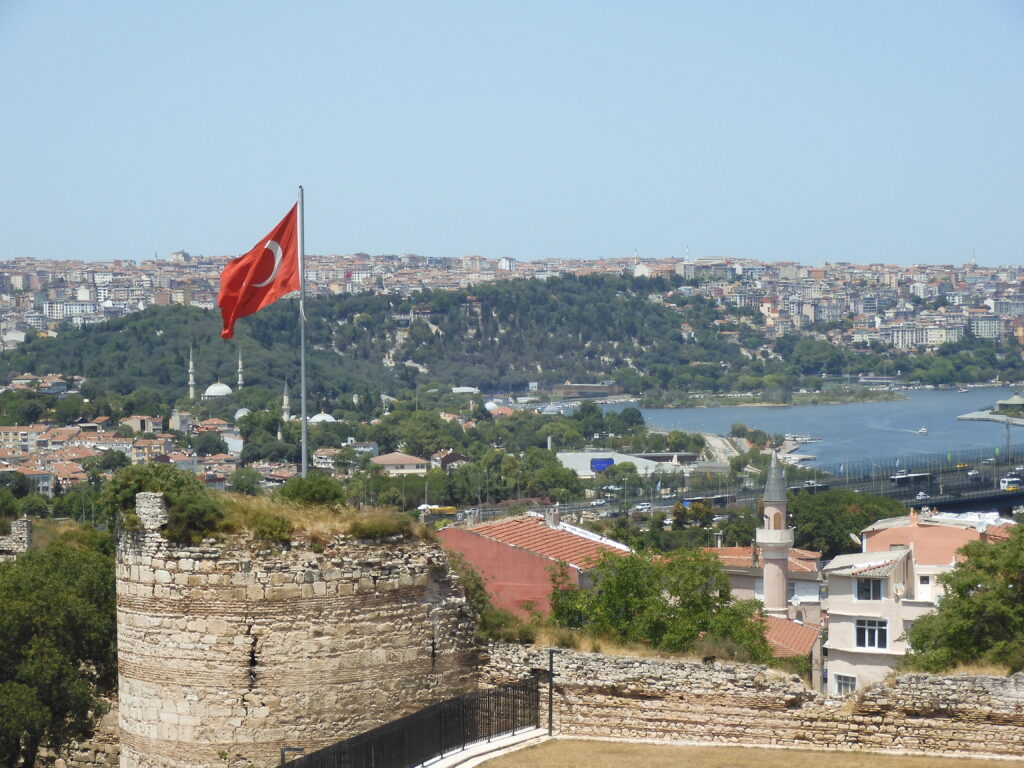
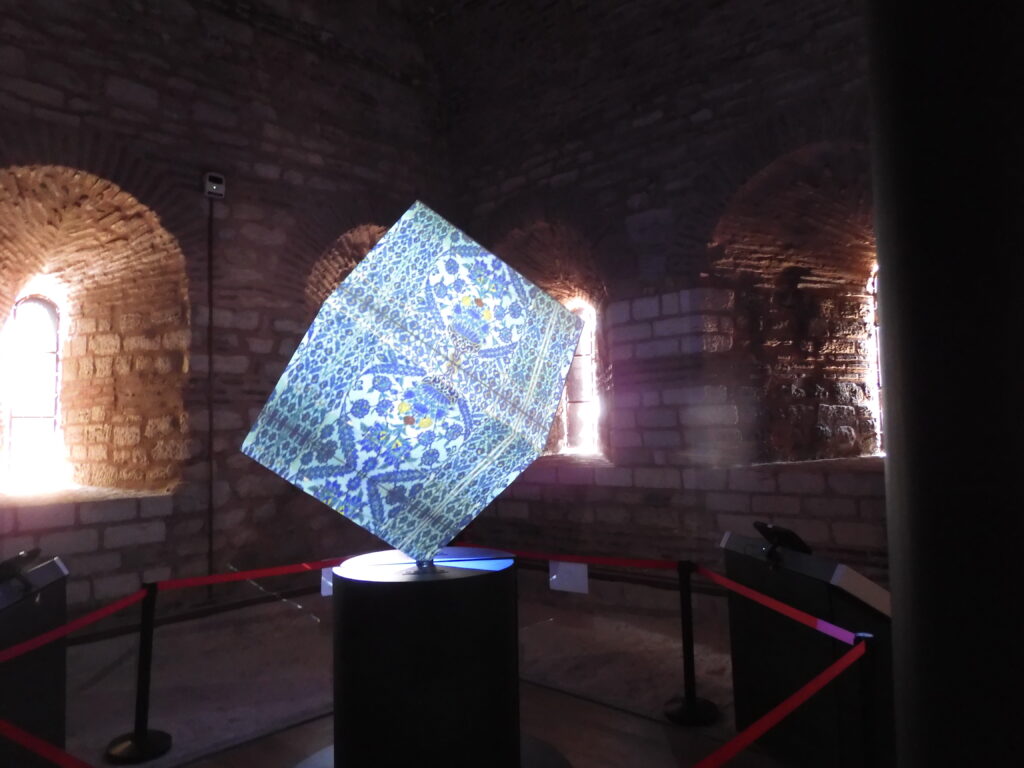



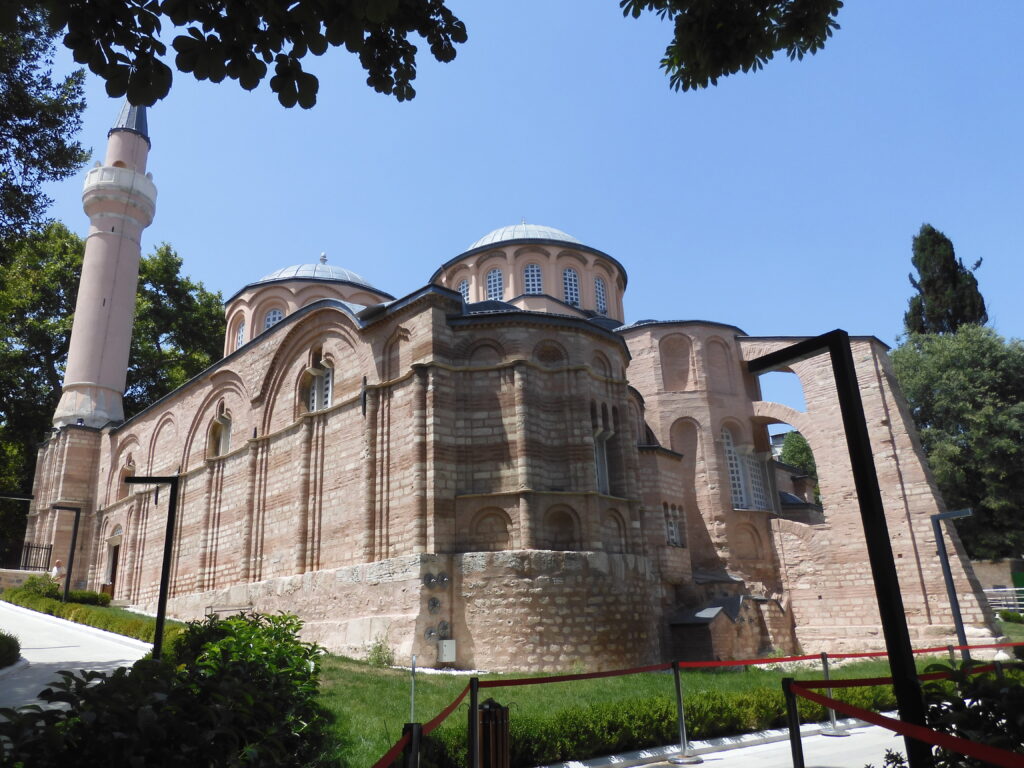
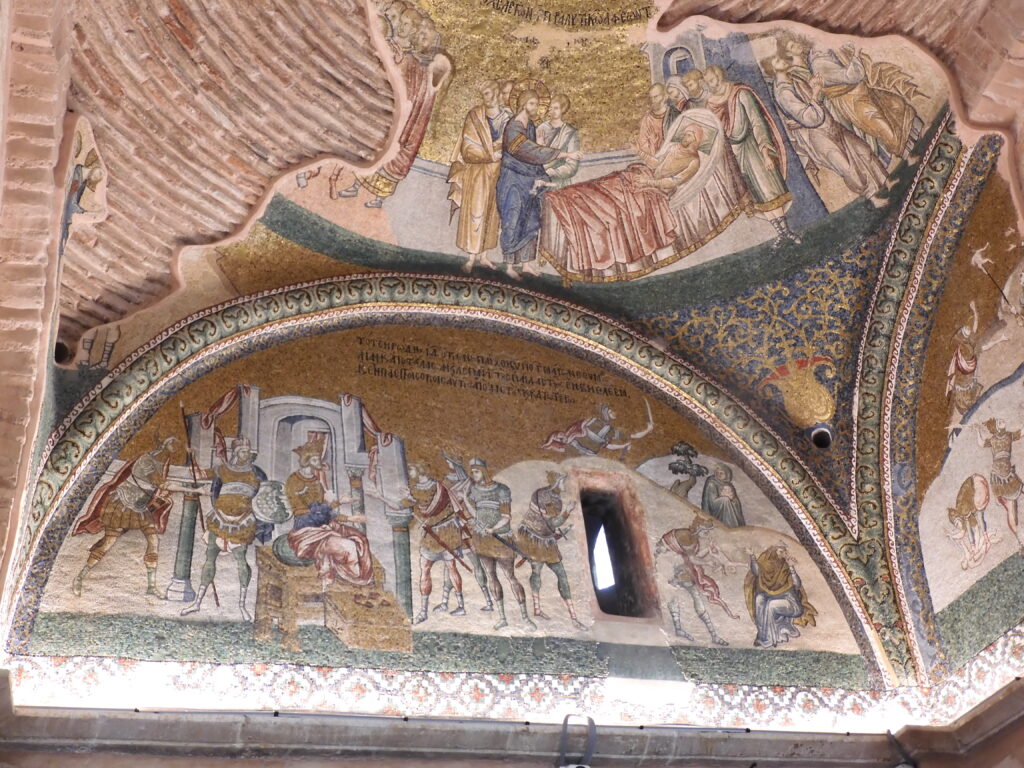
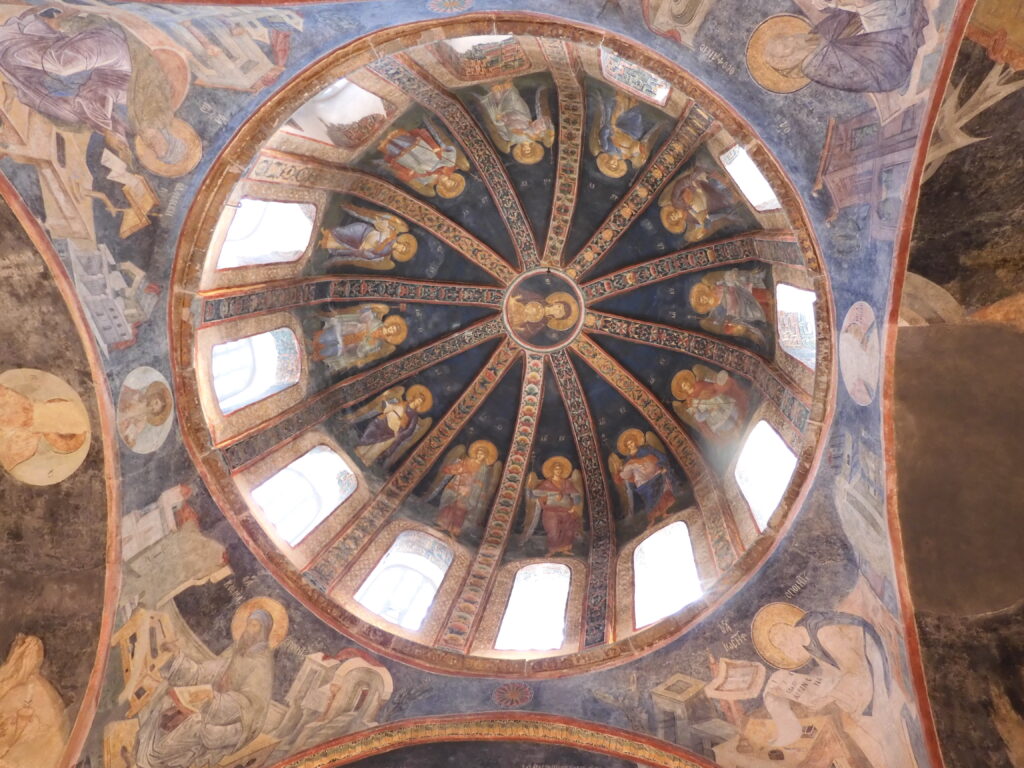
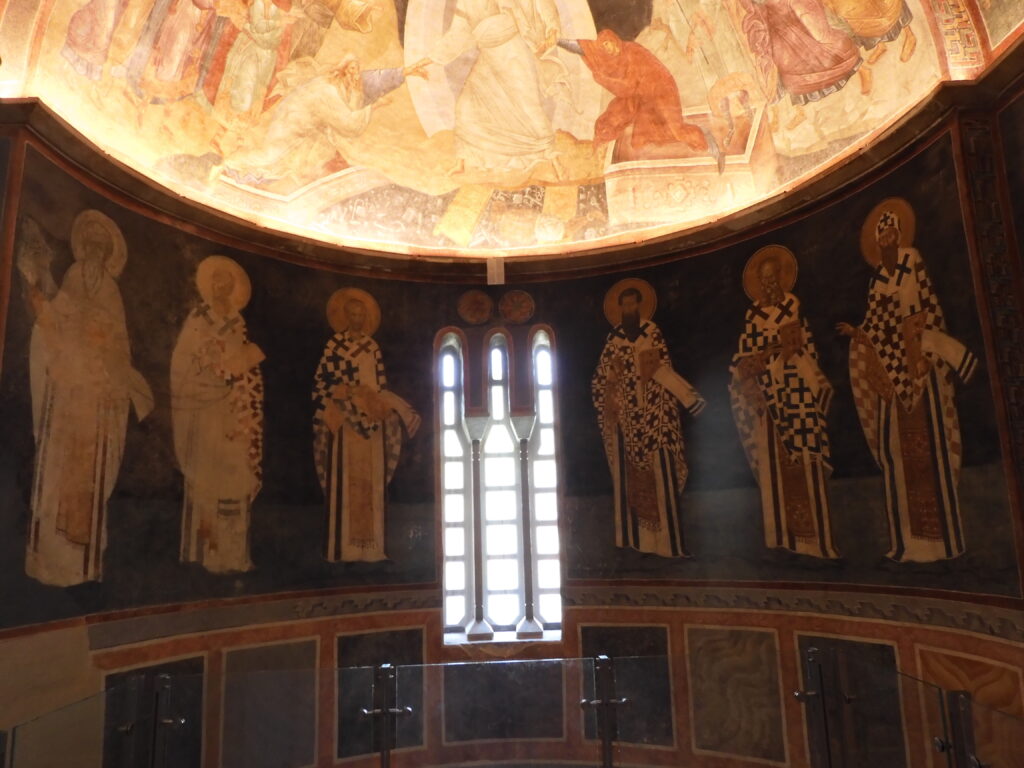
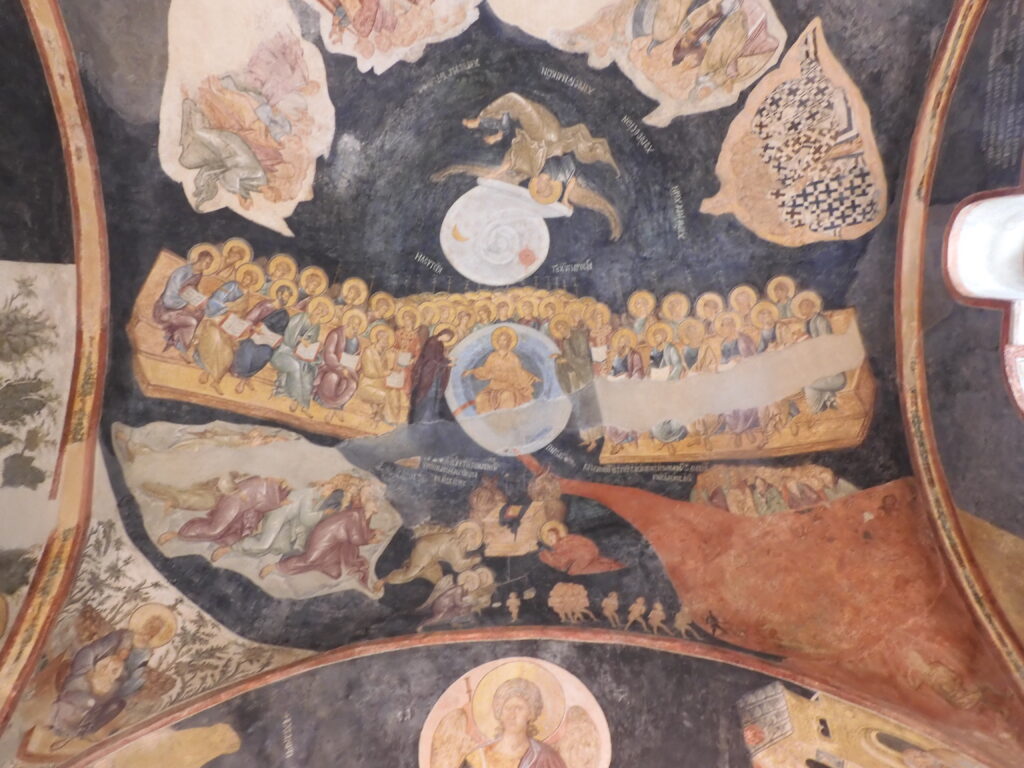
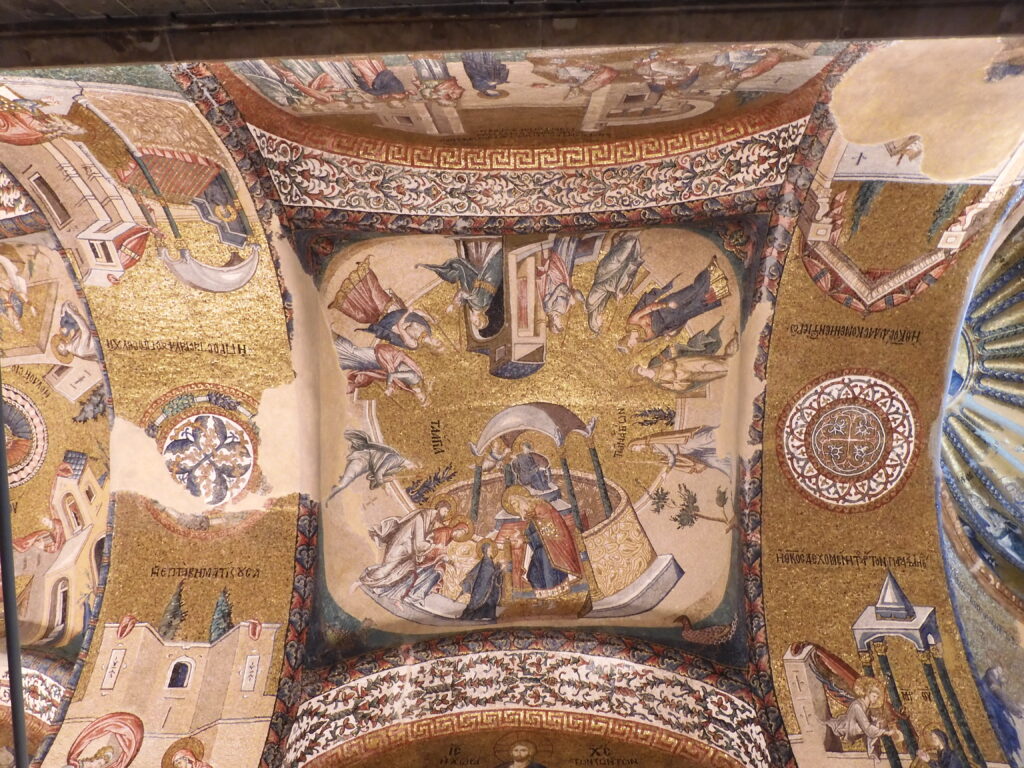
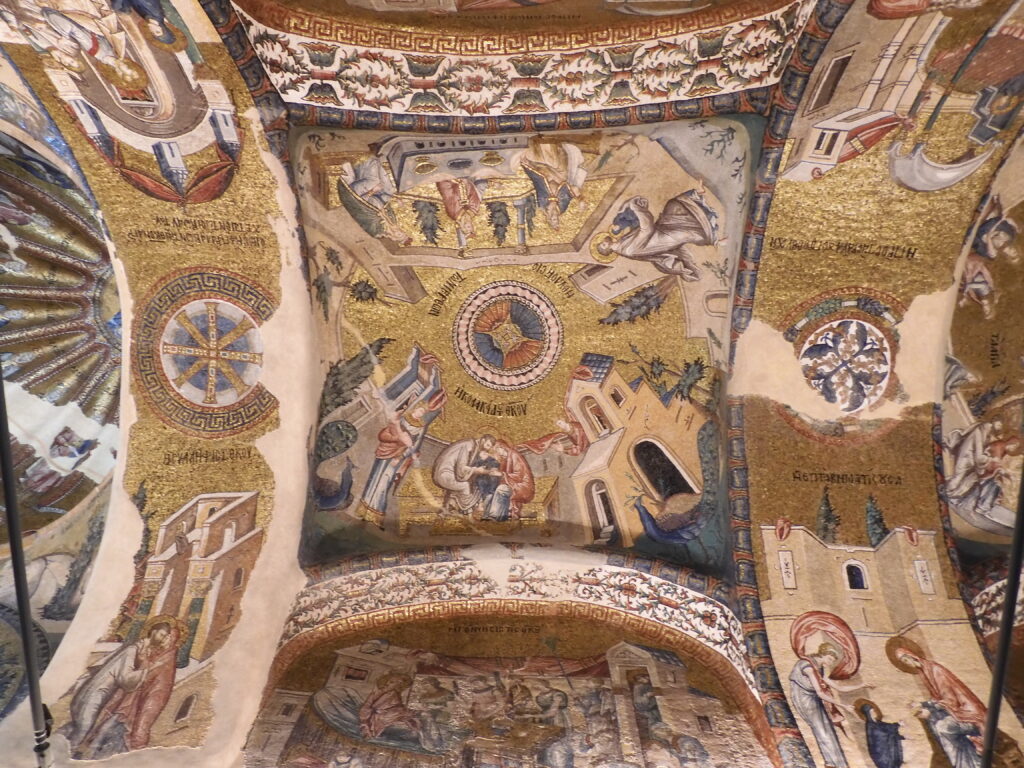
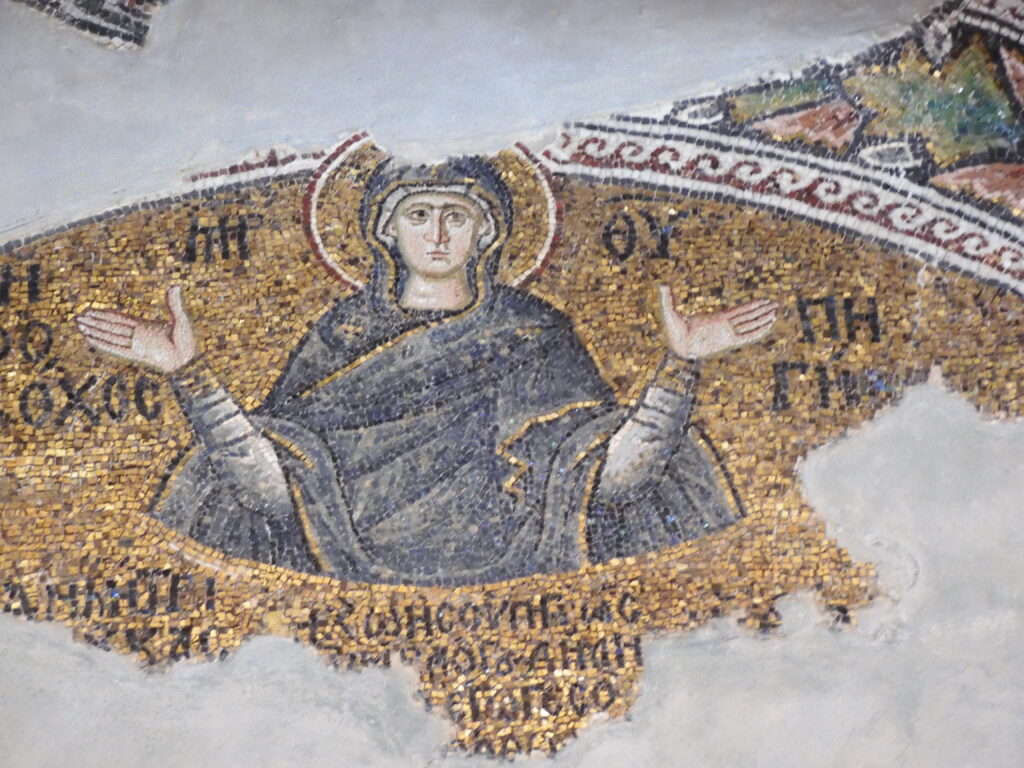
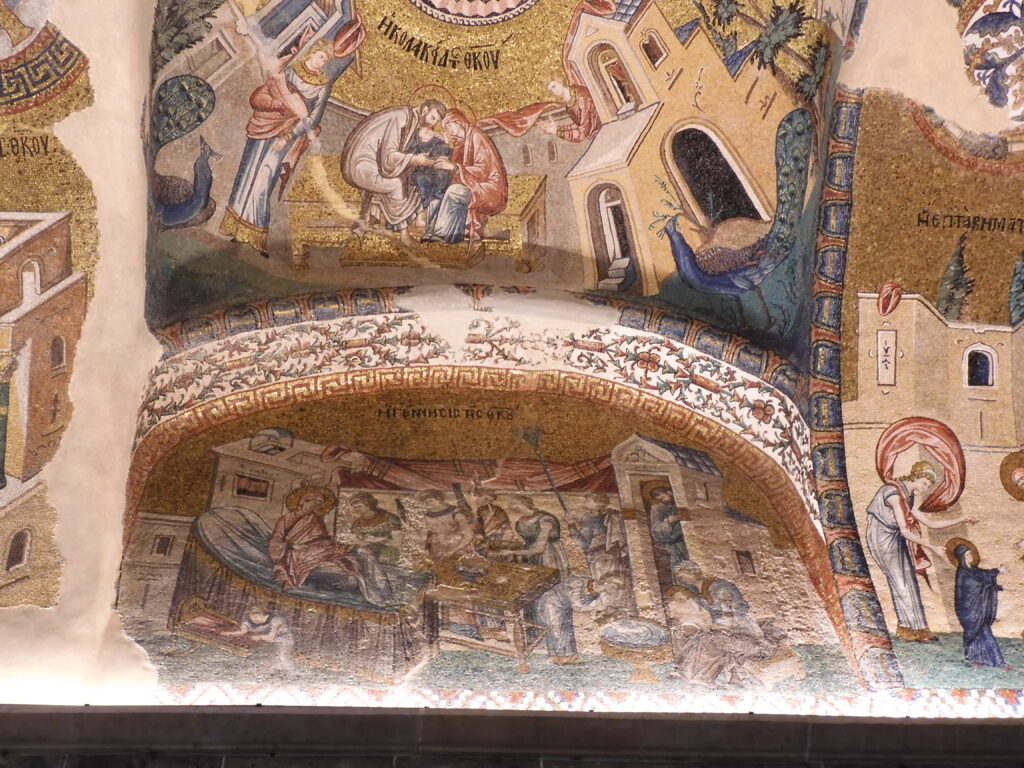
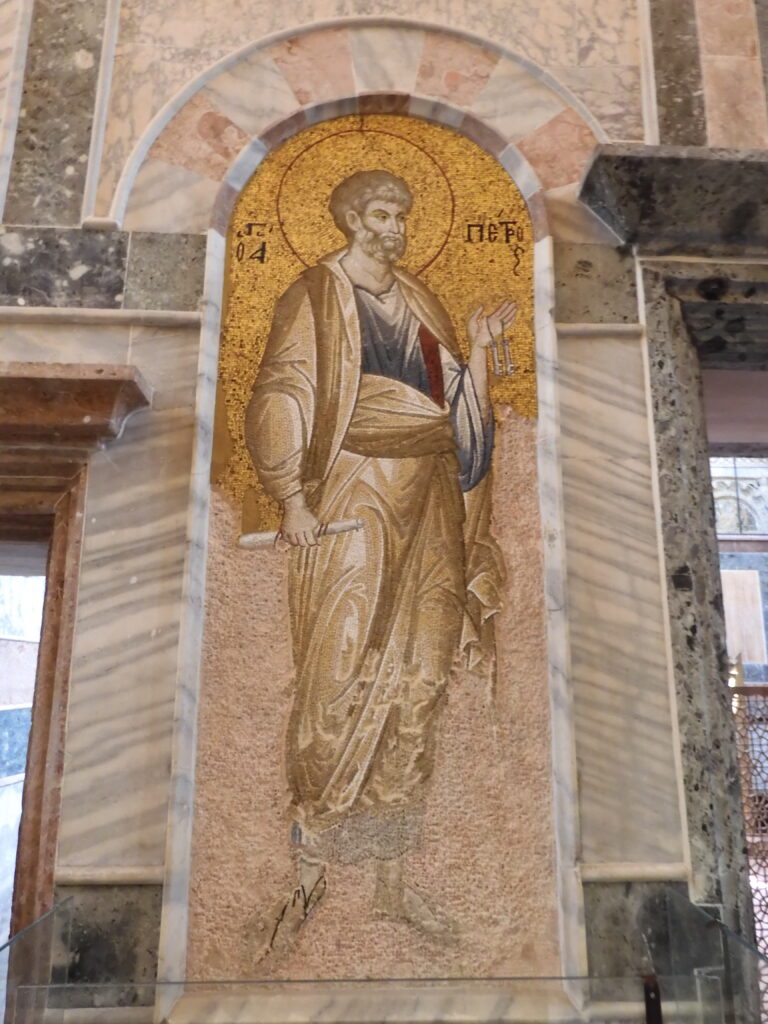

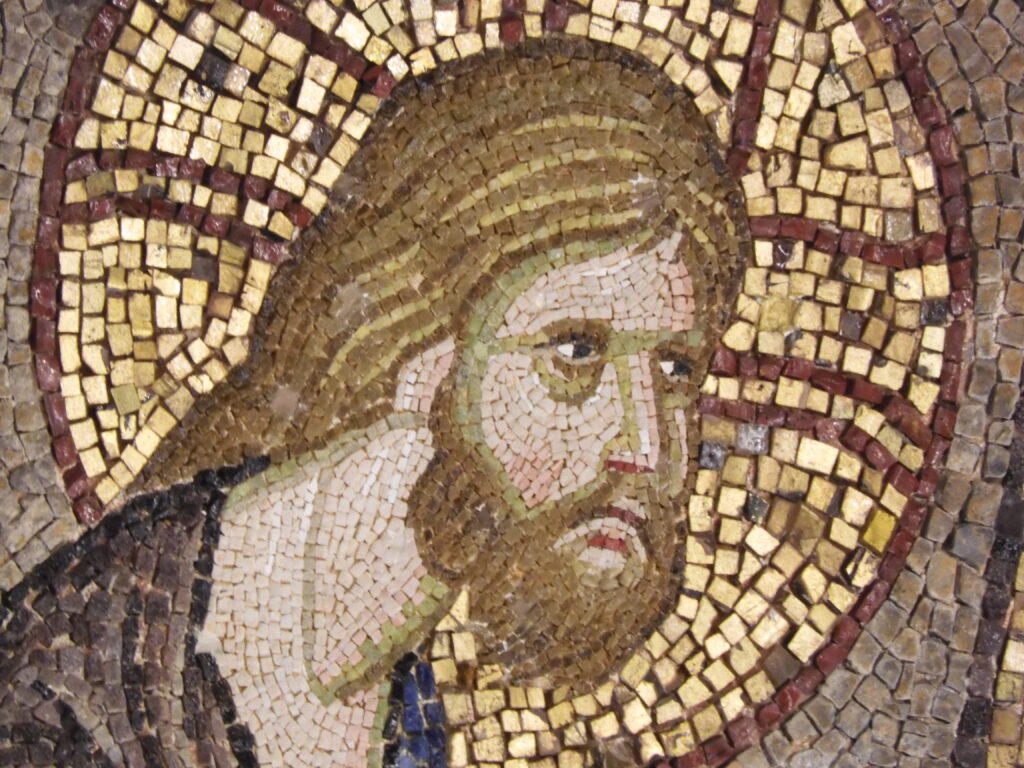
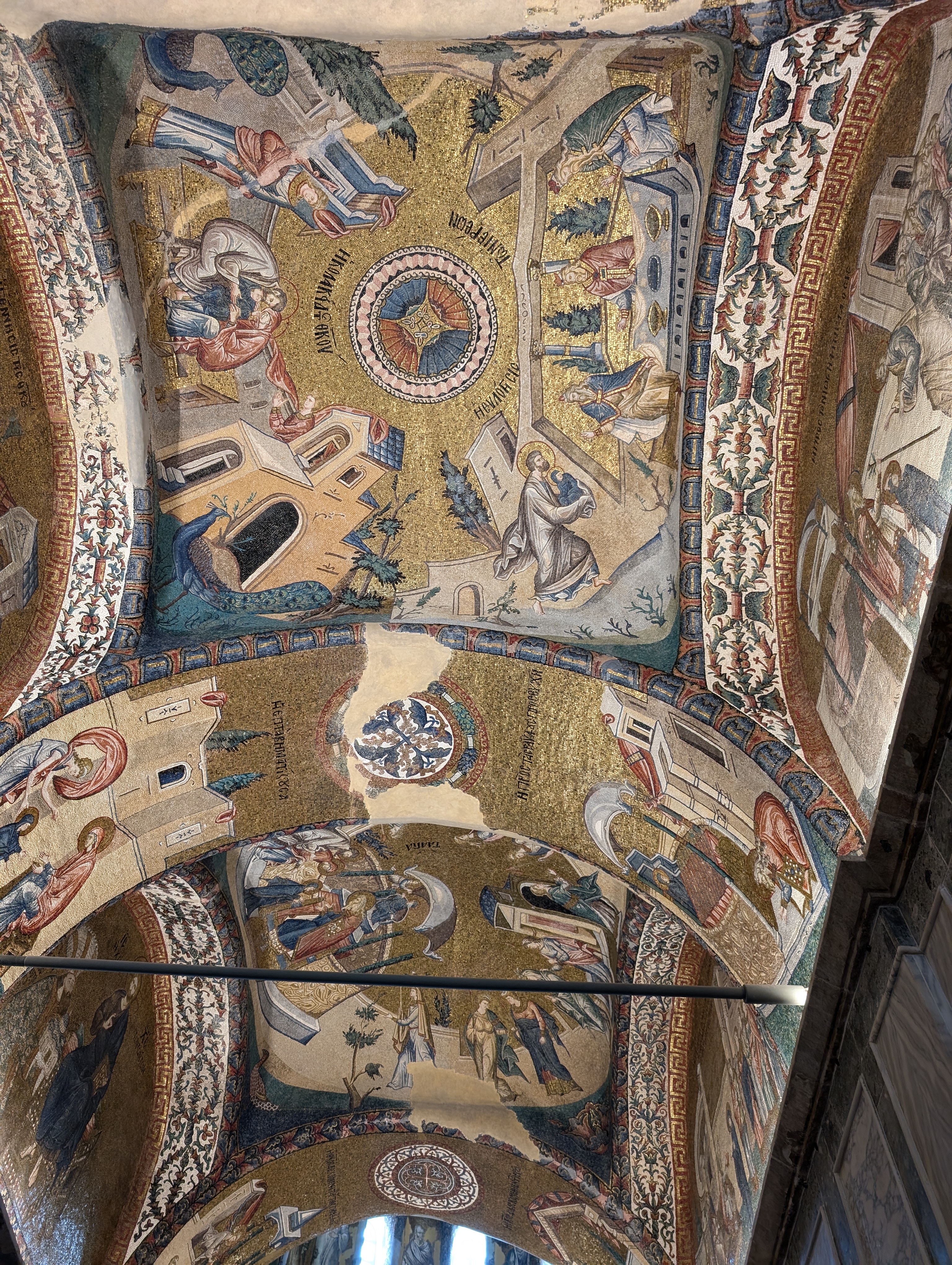
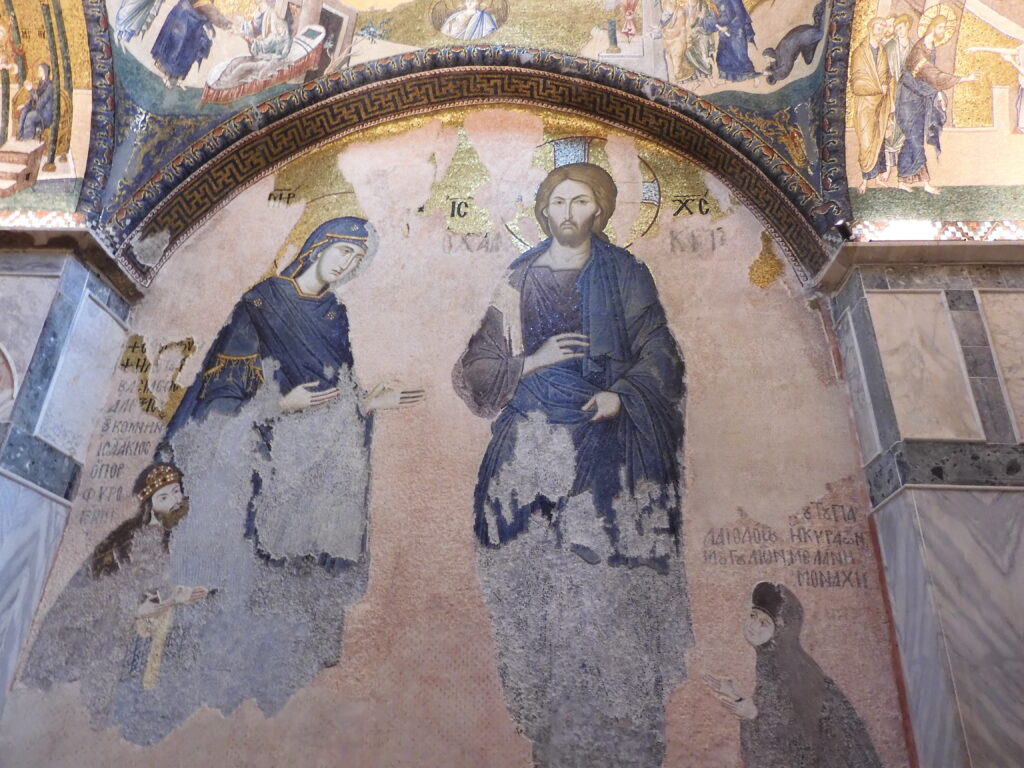
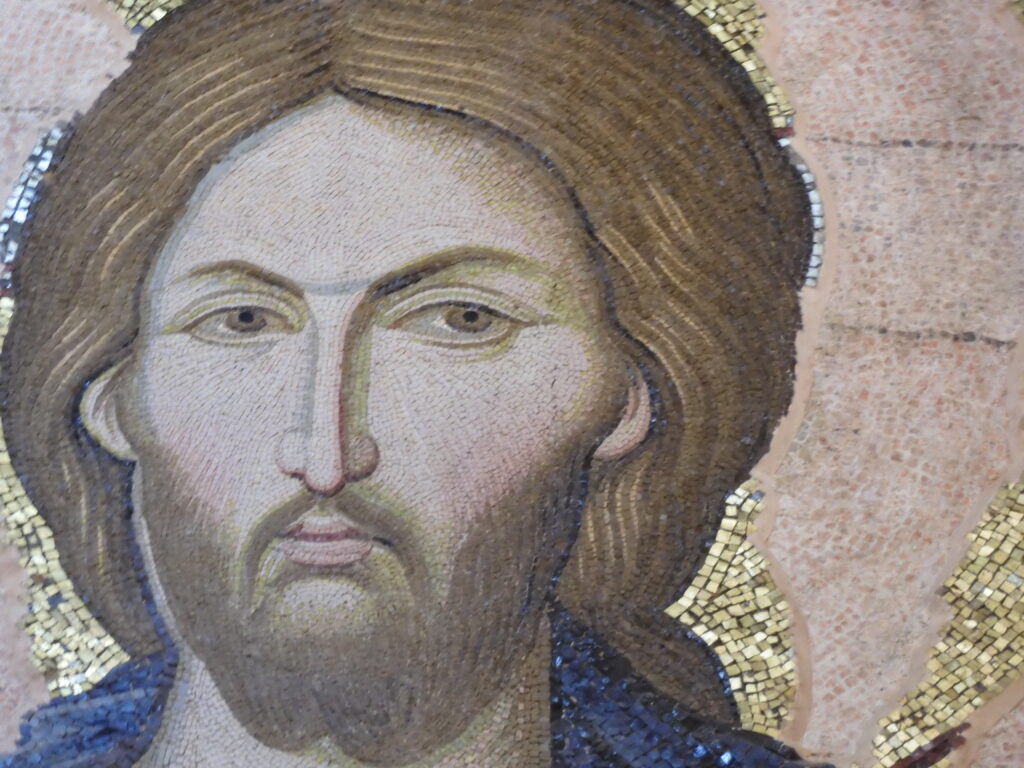
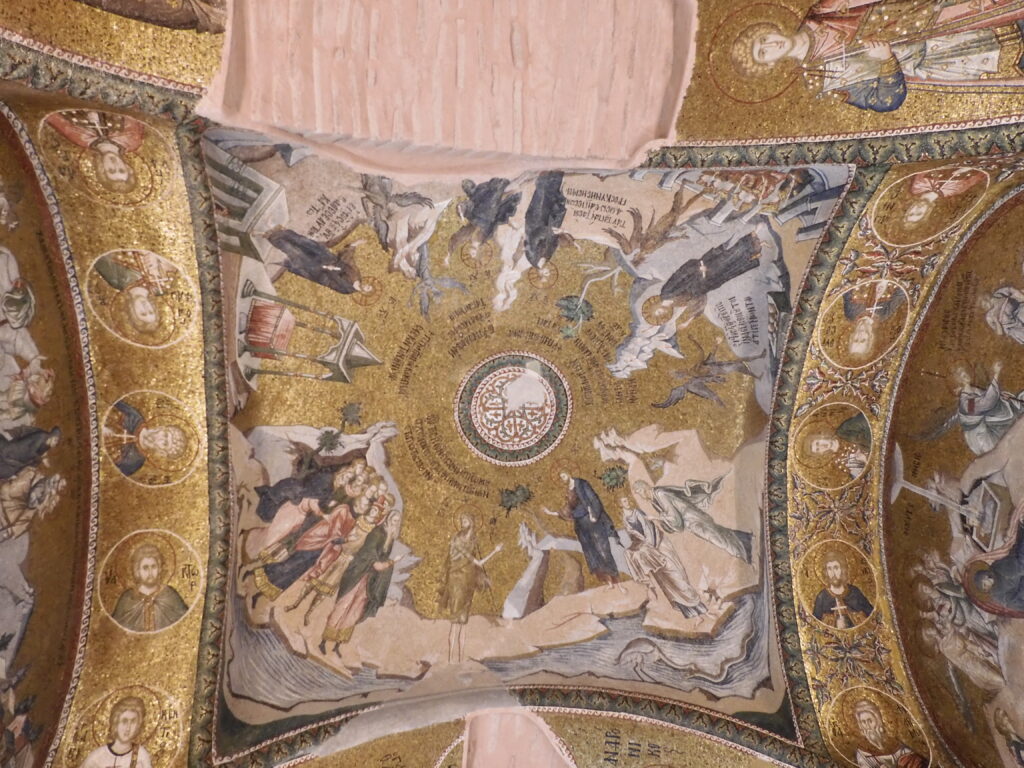
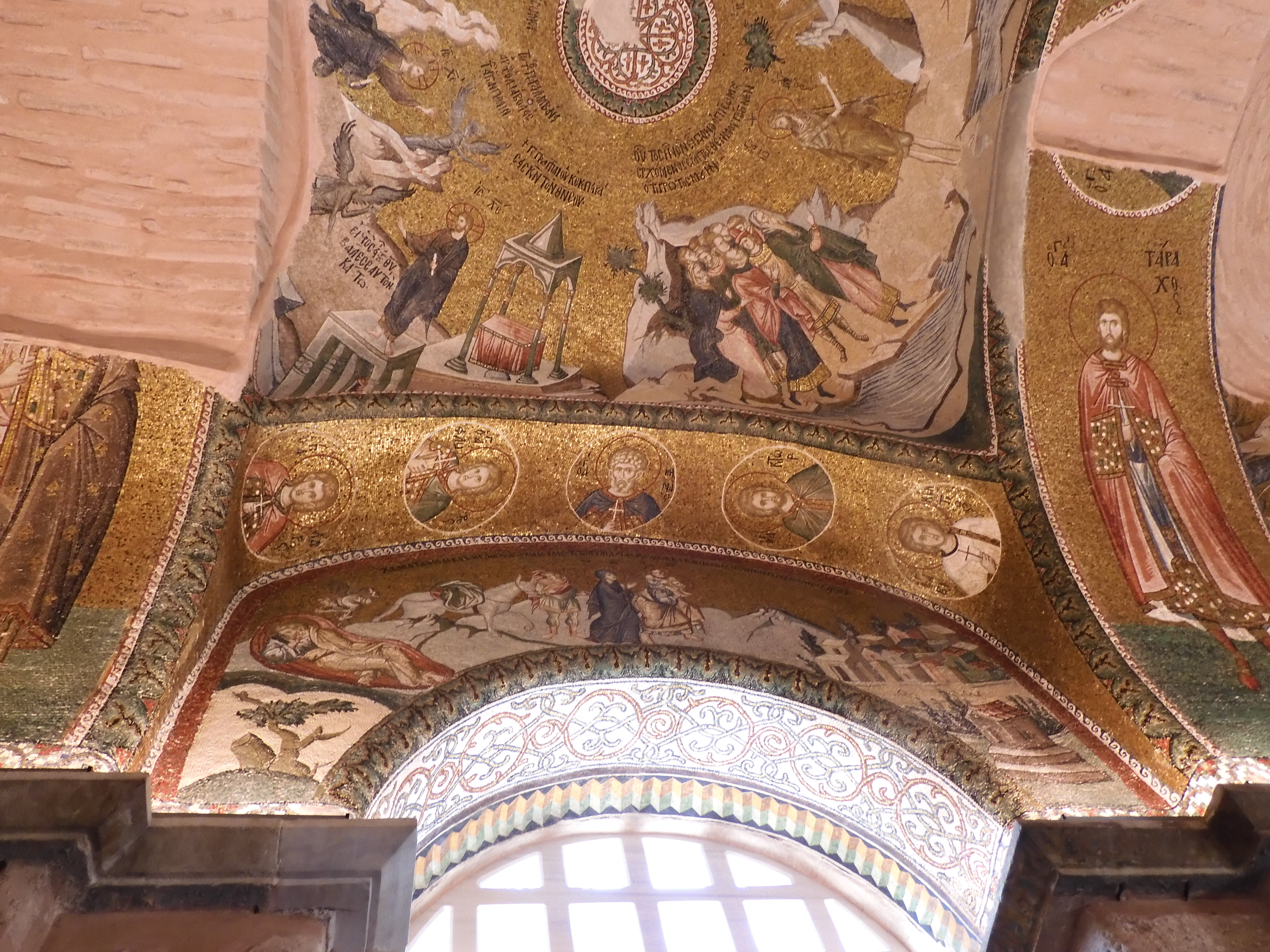
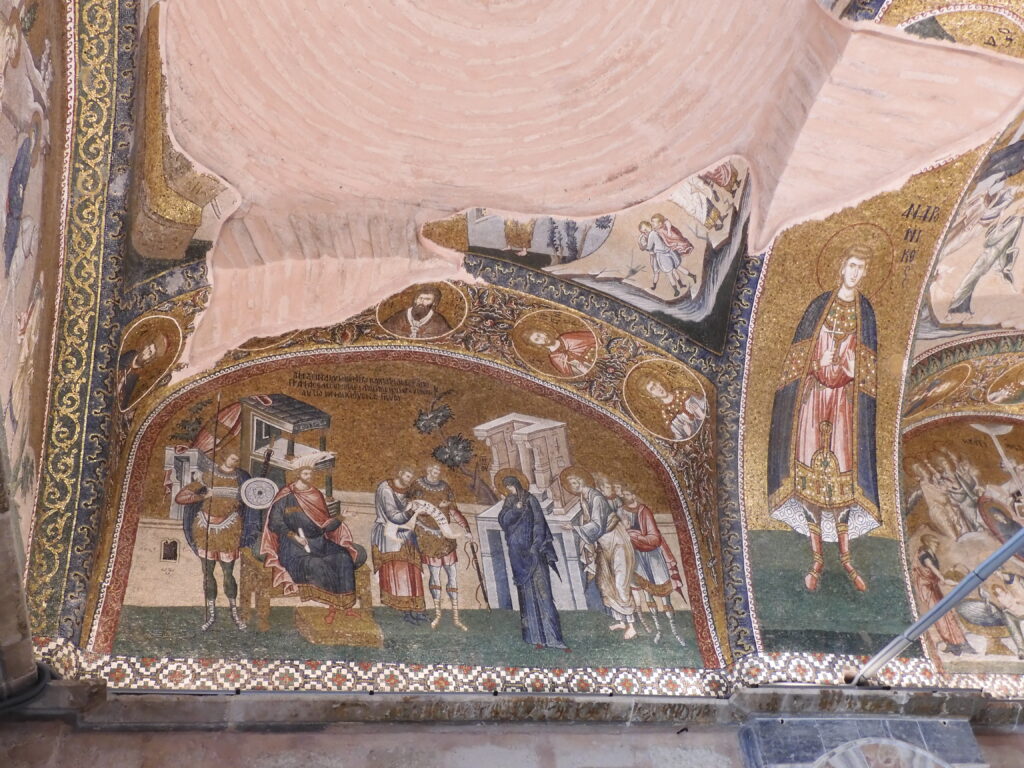

We came back to the “old town” side of the Golden Horn after seeing Galata, and proceeded to some lesser traveled sites. The only surviving part of any Byzantine royal residence is a building from the old Blachernae palace complex. Some of the empire’s last rulers lived here near the outer wall of the city after the palace’s construction in the 13th century. We climbed a pretty steep hill in a more run down neighborhood to get to this nearly deserted museum, which only cost $3 for the two of us to enter. There are some nice views, and the palace sits near a huge section of the old Theodosian Walls. The palace itself is less ornate than many others, due to its smaller role and the waning power of the empire. Nevertheless, it has some impressive architectural elements. Most notably, there are special opaque glass panels that collect and sort of hold sunlight in a way that makes them colorfully glow, a little bit like a night light. There is also a very cool room, created merely by sumping heavier air to a lower part of the building. Much of the external decoration is highlighted by the alternating colors of bricks the Eastern Romans were fond of using.
In the same neighborhood there sits the old Chora Church. This has also been converted to a mosque. It is a much smaller, less architecturally dominant building than the Hagia Sophia. Although the original building was constructed in the 4th century, most of the modern structure dates from the 11th century. What makes this church unique is that nearly the entire internal decoration survived intact. The place is completely covered up with medieval mosaics and frescoes. They are mostly 10th and 11th century mosaics, but Chora has many more than Hagia Sophia and they are much more complete and well preserved. My best Christian artwork photos from the trip were taken here. There were once again very few visitors and it cost nothing to enter. The mosaics were breathtaking.
This sector of the city is home to a major intact section of the Theodosian Walls. In 413-414, Emperor Theodosius II oversaw construction on one of the ancient world’s most complete, successful, and powerful sets of city walls. The walls are over 60 feet high in some places, and about 15 feet thick, with towers every 250 feet. In the 19th century, they began to be sadly pilfered for building material. In several places there had been access points created previously for purposes of tourism, but these are all blocked off. City construction had run right up to the walls and right along them. I wanted badly to climb them. I can say from experience that it is possible for an intrepid visitor to walk the top in certain areas. On many occasions, these walls had allowed Constantinople to survive sieges by forces outnumbering the defenders several fold.
Although there may have been ten times as many Ottoman attackers than there were Byzantine defenders, the fall of Constantinople was no foregone conclusion. Previous attempts had failed time and again, but times were changing. The battle represented the end of the importance of these kinds of walled fortifications and castles. The Turks used the novelty of gunpowder to pound the walls with artillery. They hurled six hundred pound stones at the walls. The Turks did not have an unlimited supply of six hundred pound stones, however, and the gun took a long time to reload. It was also wildly inaccurate. For much of the early part of the siege, the defenders simply repaired the walls during the time it took the Turks to hit them again. Several tunneling attempts also failed before the walls were eventually breached and the looting, rape, and slaughter began. It was the end of an era in several ways.
Caleb was the first to notice that there is an aqueduct running through this part of town. It was created by Valens, and appears to have been out of service for much longer than the one I saw in Segovia. It isn’t as tall, either. It is still, however, an amazing piece of historical architecture. I went back to see it the last day we were in town. But on July 2, we concluded our day by visiting the Basilica Cistern, a massive underground water storage facility. The ceiling is supported by 336 pillars. The cistern had fish in it to help keep it clean and to provide food during sieges. The size is incredible. It is over 100,000 square feet and 30 feet high. It is capable of storing over 64 acre feet of water, and is only one of hundreds of ancient Roman cisterns in town. Several movies filmed segments down here including Inferno and From Russia, With Love.
The highlights of our final day in Istanbul were a visit to the “new” Turkish Royal Palace and a market on the Asian side of the Bosphorus. Dolmabahce Palace was built in the 19th century in a style intended to help give the Ottoman Empire clout among the European powers of the day. Like several other leaders hoping to demonstrate their affluence and power, the sultans hired architects to design them something sort of like Versailles, but in this case with a harem and a Turkish flair. Yes, even in the late 19th century, sultans still had harems, eunuchs, and all sorts of other old world views that could not be masked by a rococo interior. I enjoyed walking this palace, but liked Topkapi better. They strangely forbade photos at this site. The Turkish government has also placed an art gallery here, and a clock museum. The facility on the whole is a nice stop, but not the highlight of a visit. I was impressed by the sea entrances, which allowed foreign dignitaries to steam right up to the palace from the Bosphorus. Mustafa Kemal Ataturk and his successor also used this palace in the early Turkish Republic era, after the Caliphate and Ottoman Empire had run its course.
We used our metro cards again to take the ferry to Asia so we could try the cuisine in the Kadikoy neighborhood. We went to an outdoor food market renowned by the foodies. We didn’t look for anything fancy or expensive, but we did find some good Turkish food. Afterward, we browsed everything from clothing to produce to wallets to furs to antique record players and a lot of things that were faux antiques. We found a few older bank notes and coins from the not too distant past. About 15 years ago, Turkey revalued their currency by chopping six zeroes off the end of the number, so that one new Lira was worth 1,000,000 of the old. I am now the proud owner of a 1,000,000 Lira note.
After dropping Caleb off at the house, I went out one last time to try unsuccessfully to mail a few things home. I went to look at Valens’ aqueduct. I stopped by another outdoor market and bought a few things. At first, I was surprised at how much cheese was just sitting outside in stacks, unrefrigerated. I soon discovered that some – but not all – of that was not cheese but soap! I bought one. I also bought a bunch of the stuff that was unrefrigerated cheese. I got some cashews and bananas to eat on our marathon July 4 bus trip from Istanbul to Hopa, Turkey. We would have more traveling to do once we got there, but the first leg was scheduled for 20 hours. It was going to be a long day and night, but Turkey had been better than I imagined it. Caleb thought it was one of our top stops. Istanbul is only the tip of the Turkish iceberg. The country is worth its own visit, as there is plenty to keep a person busy for a few weeks. It’s a great place.
The bus we took to leave Turkey, however, was not so great. The company delayed our departure over four hours without notifying us. The station had no departure board, and most of the busses were behind, so they all left as soon as they could get new passengers on. For four hours, then, I dashed outside to read the signs on every Kamil Koc bus that pulled up. Eventually, ours arrived. Caleb had wandered off and turned back up within about 30 seconds of us being left in Istanbul until we could find other conveyance. We were elated to get on board, but soon soured on the experience of sitting in a seat with about 24” of legroom, no bathrooms, ineffective climate controls, and hinges that pressed against the undersides of both of my thighs through the long-overused seat cushions. Our driver made up an hour driving the length of Turkey, but it was an unpleasant trip. Two more sweaty, overcrowded minibuses and a jam packed land border crossing station later, we were in Georgia.
